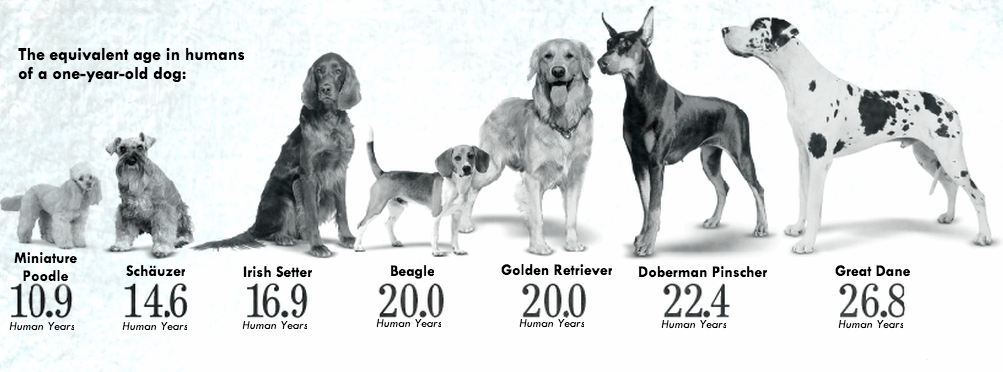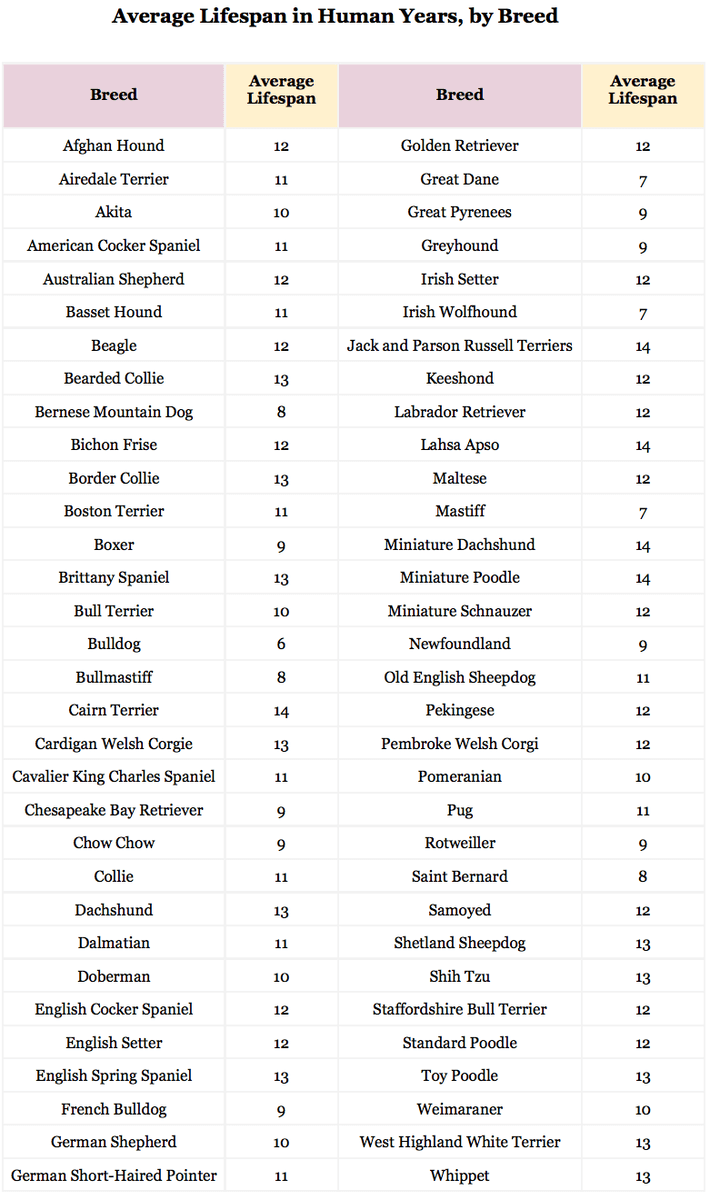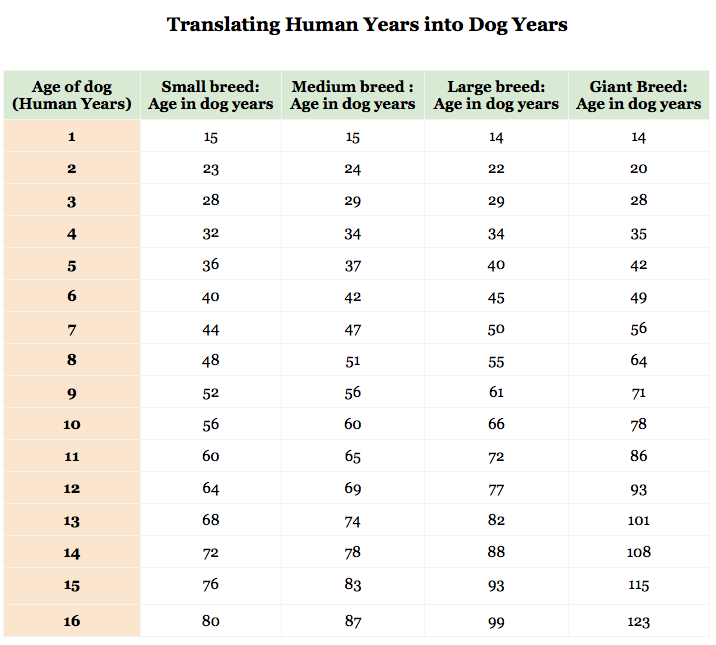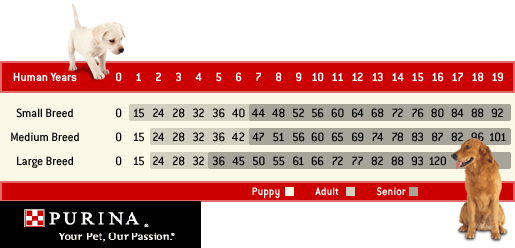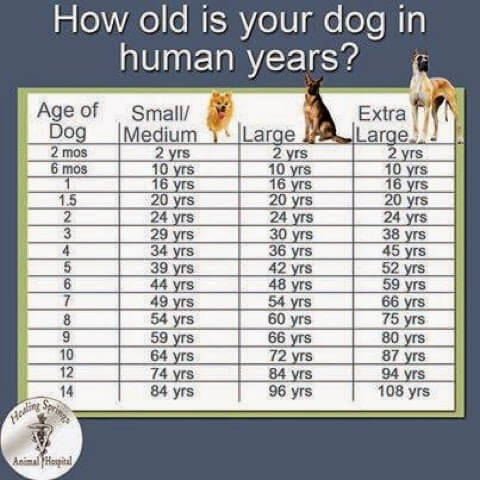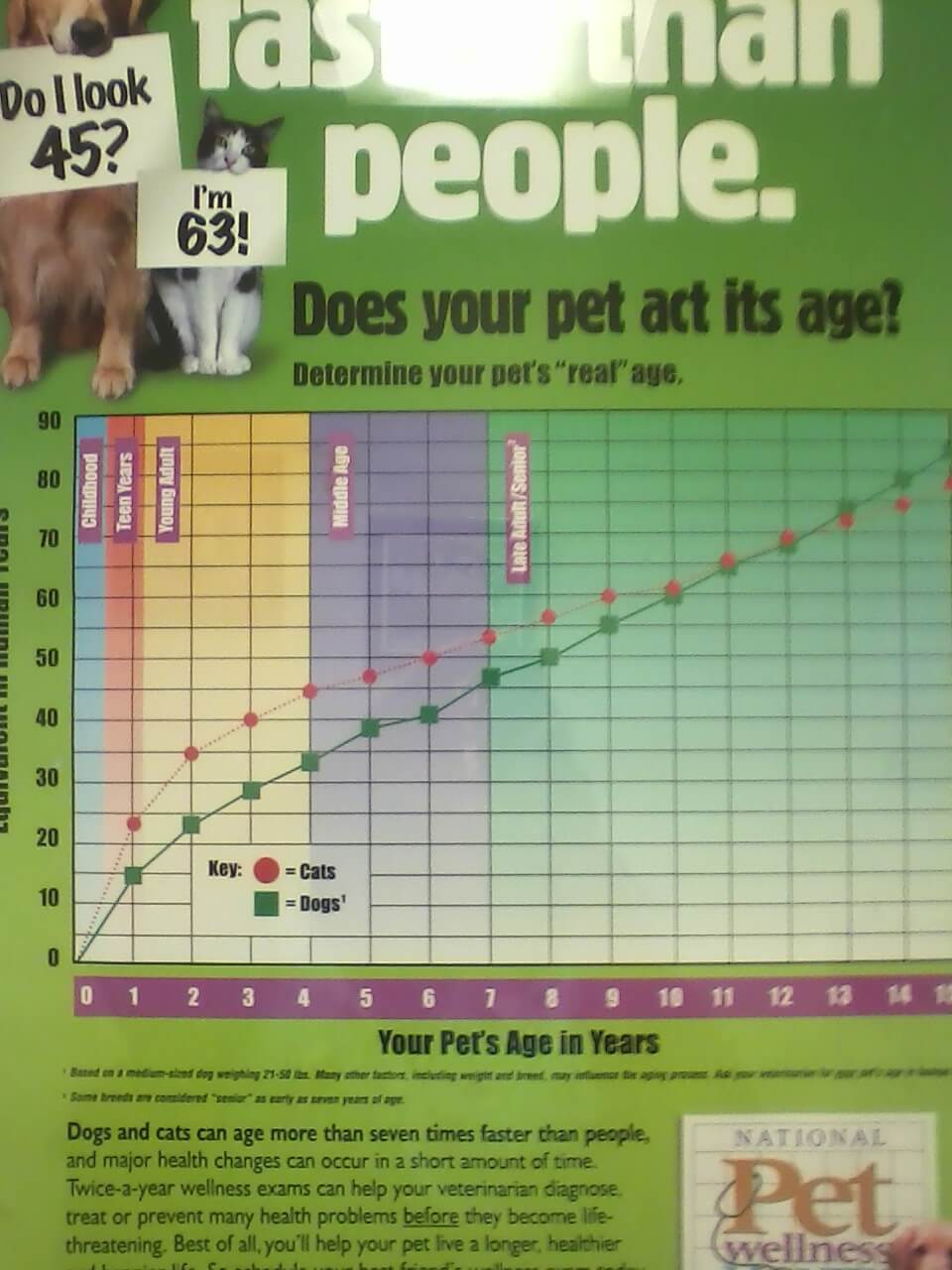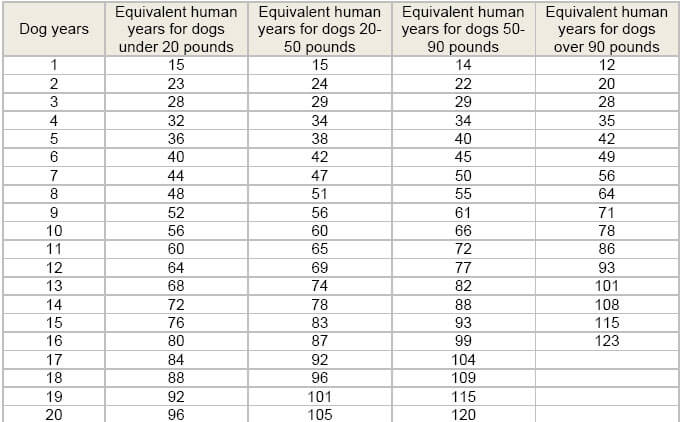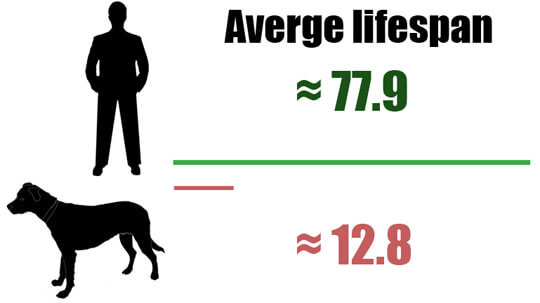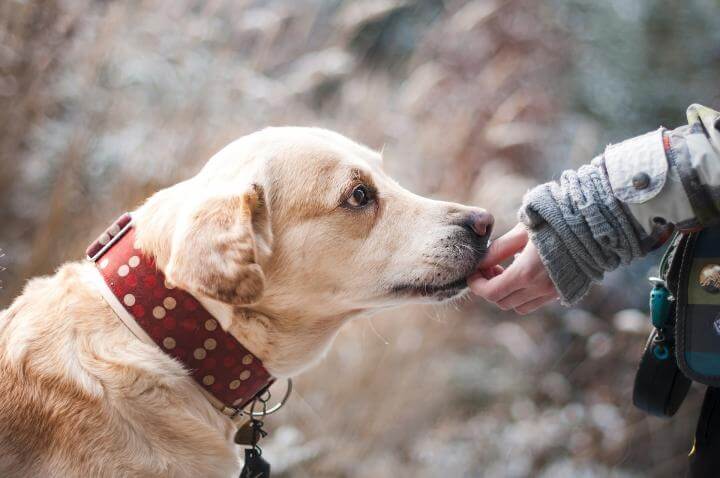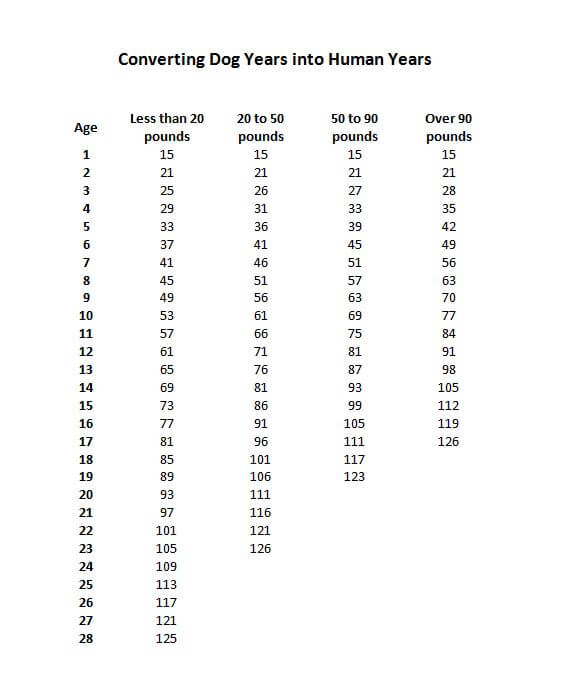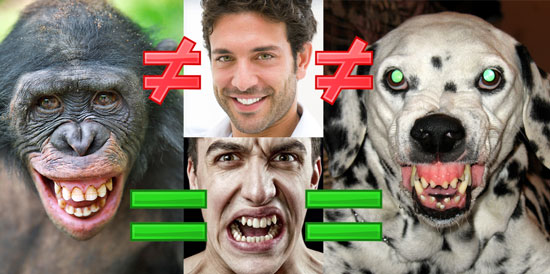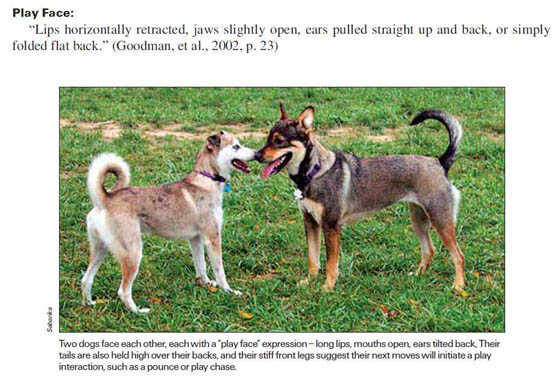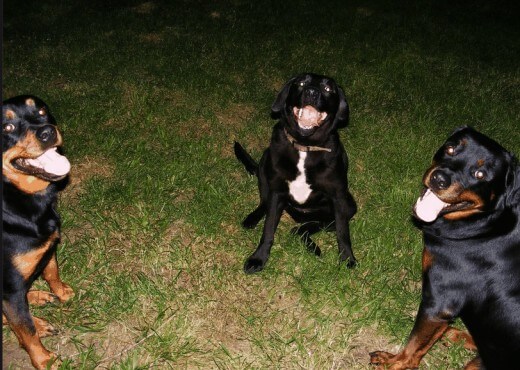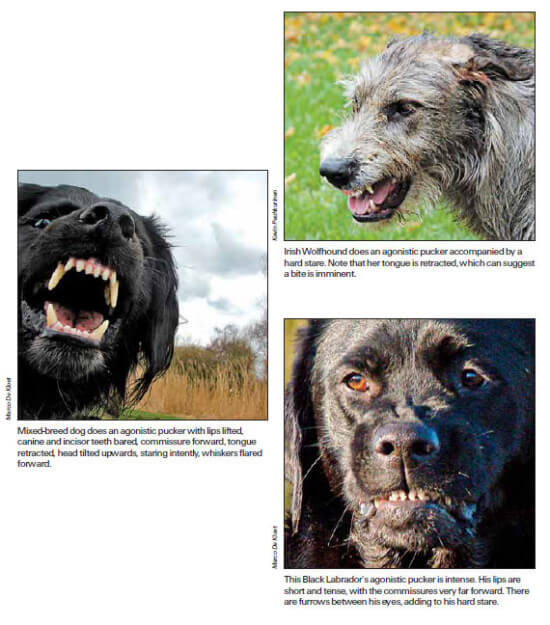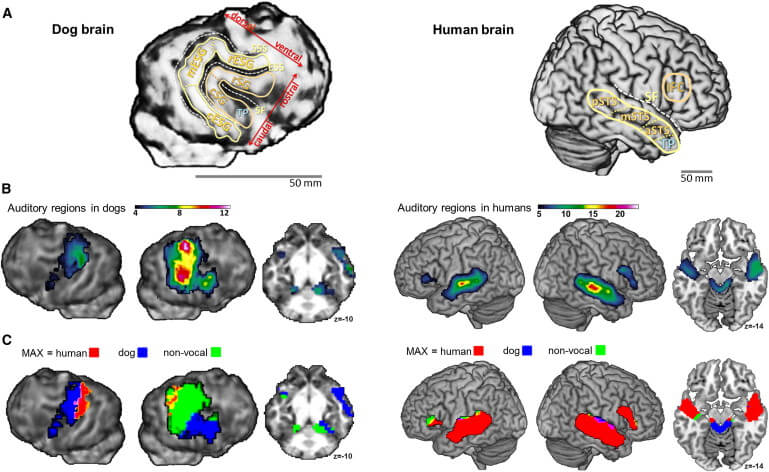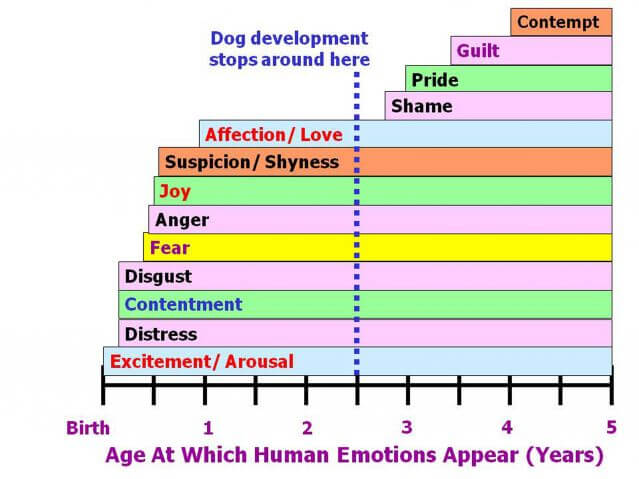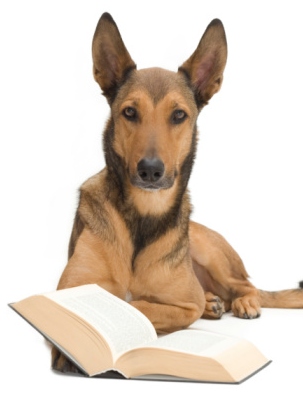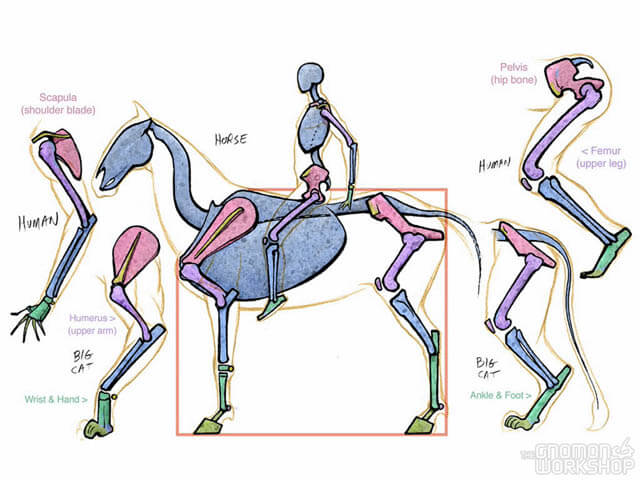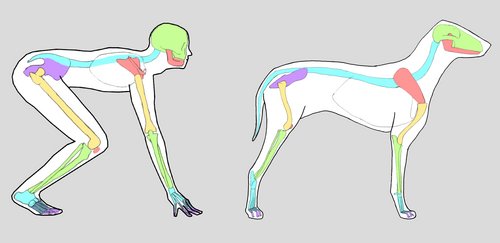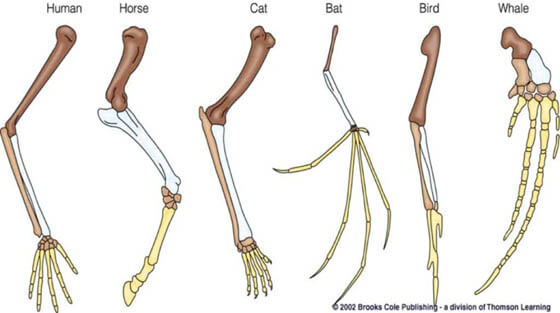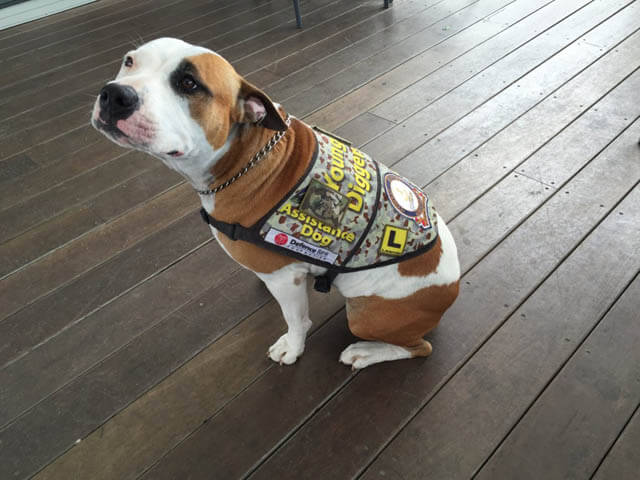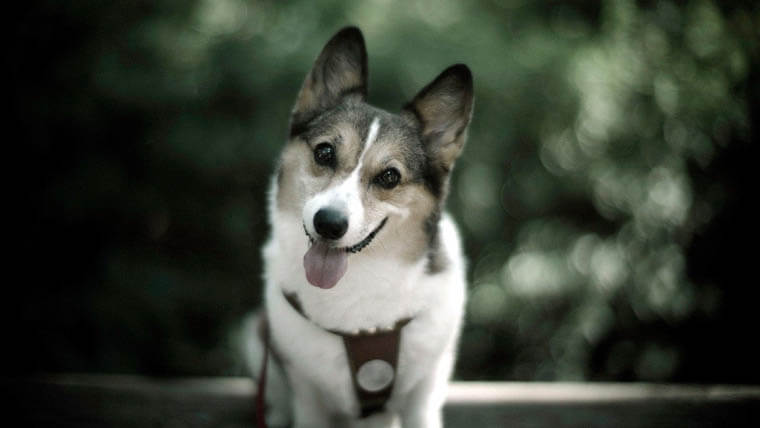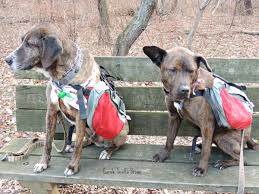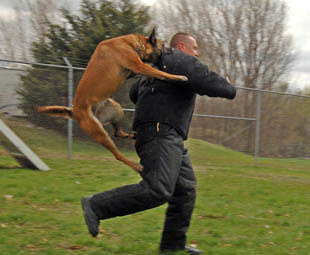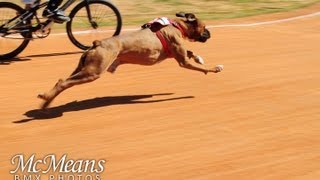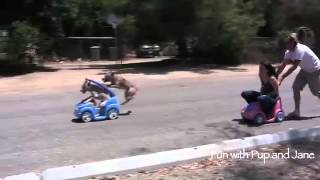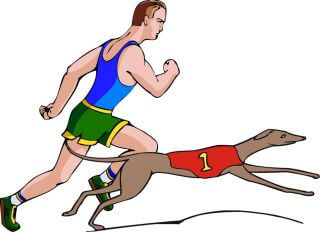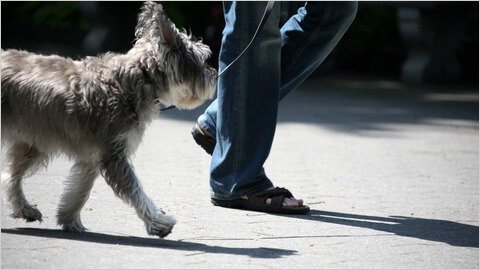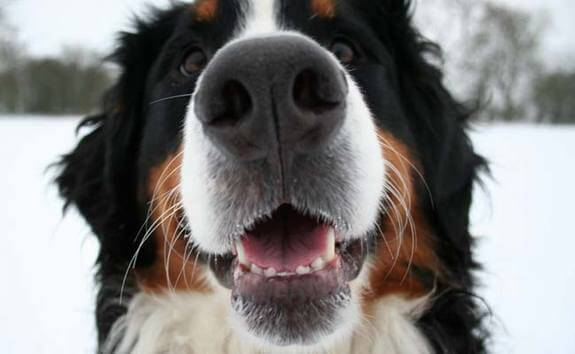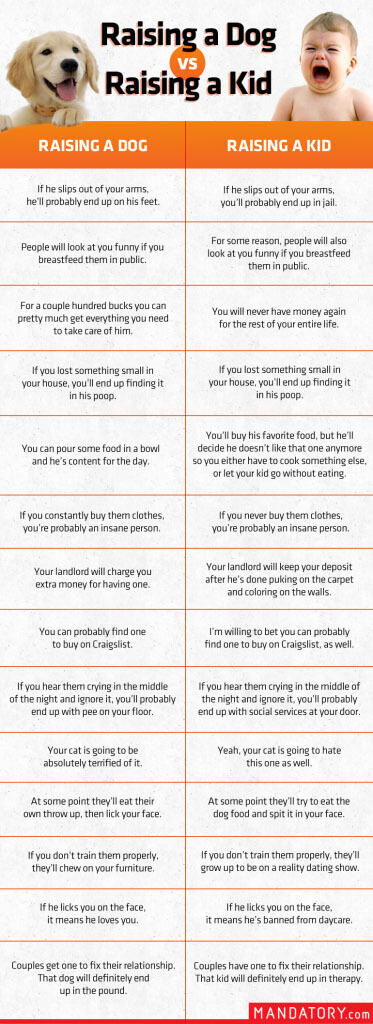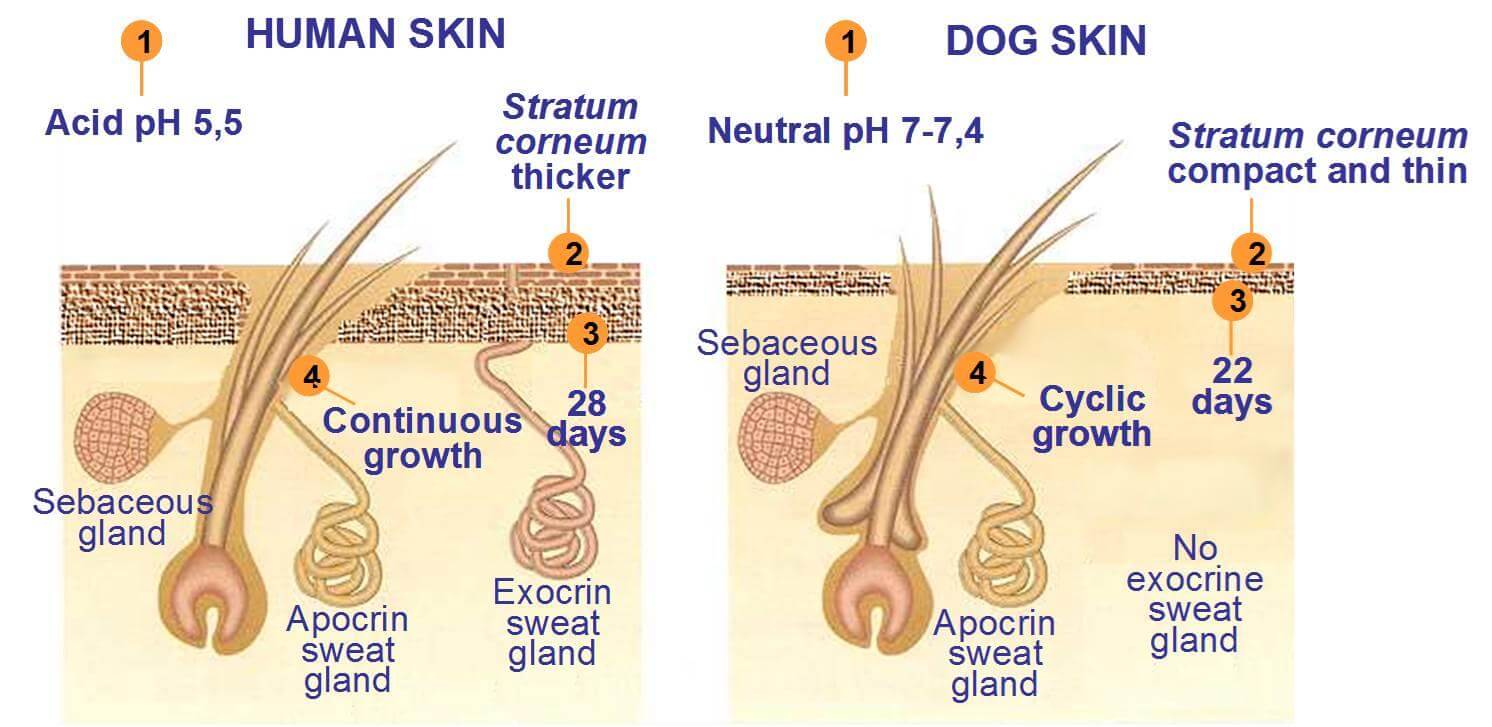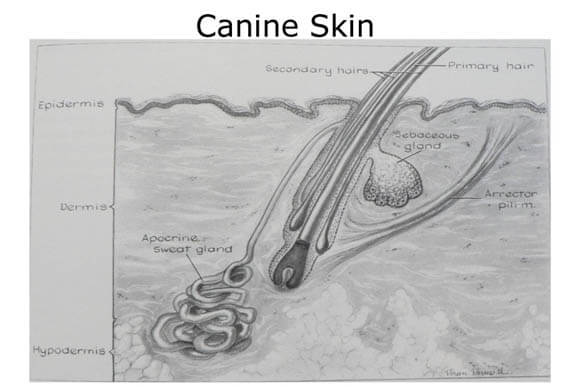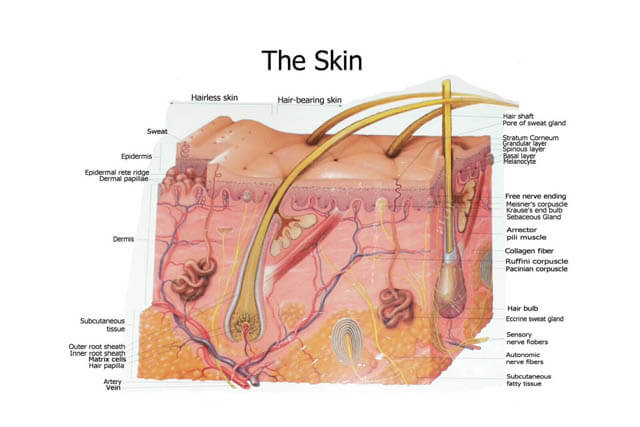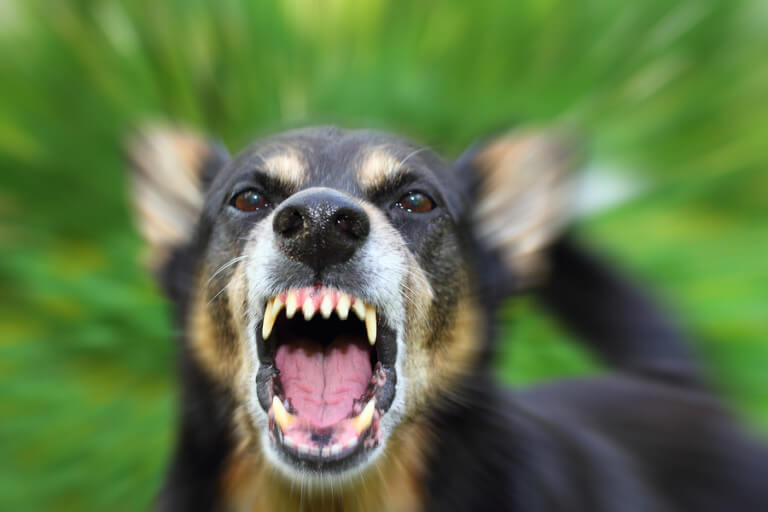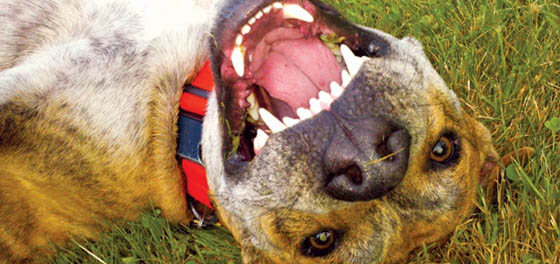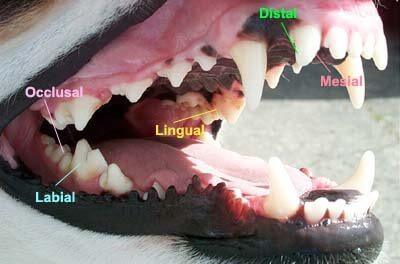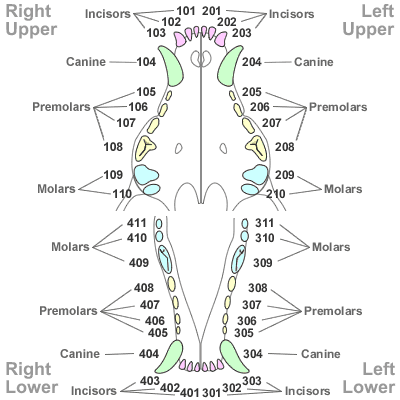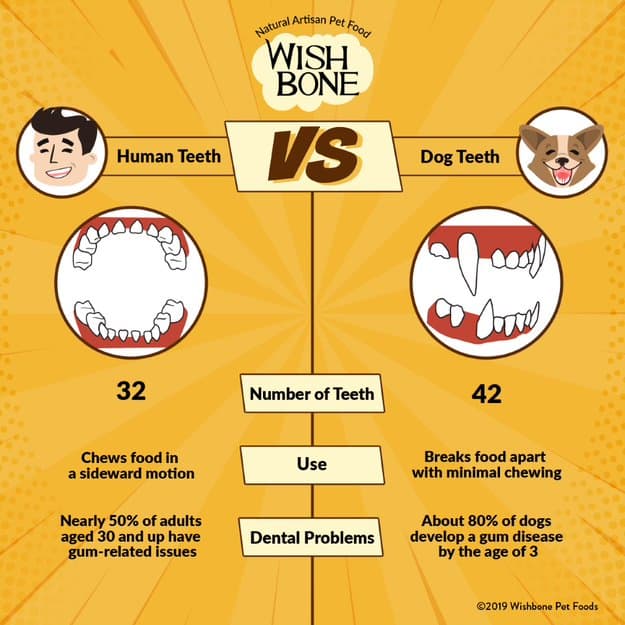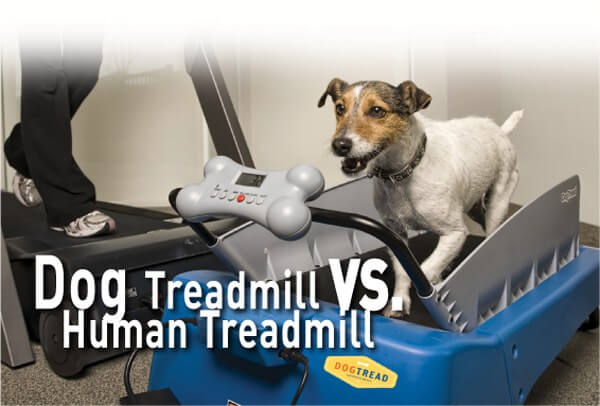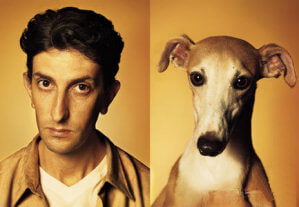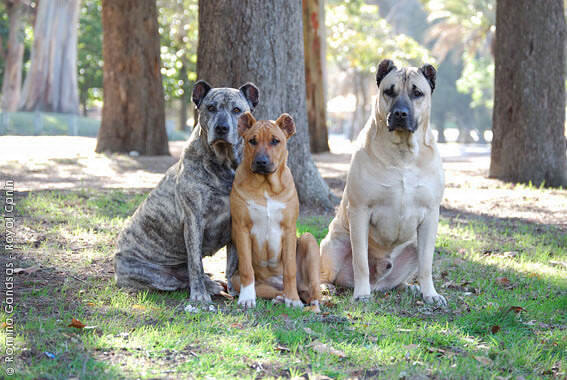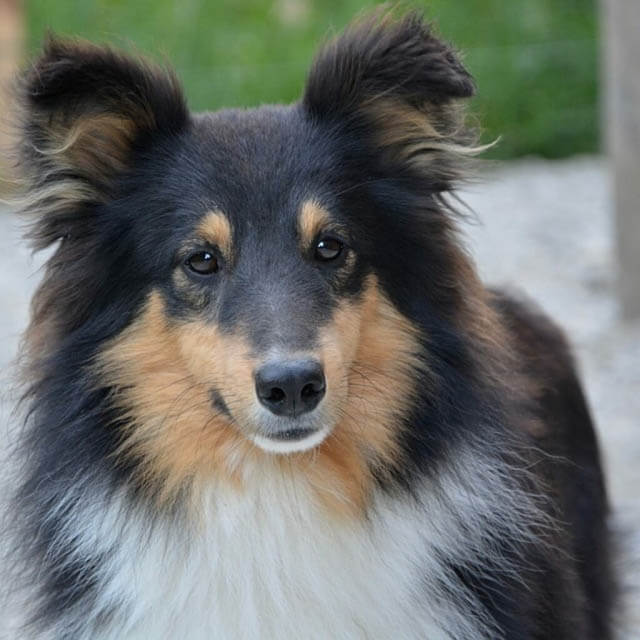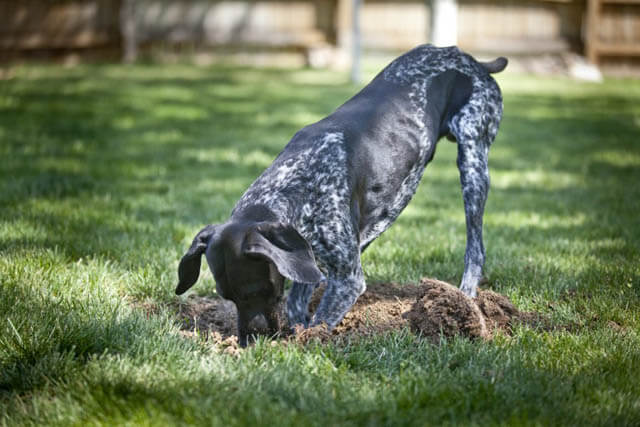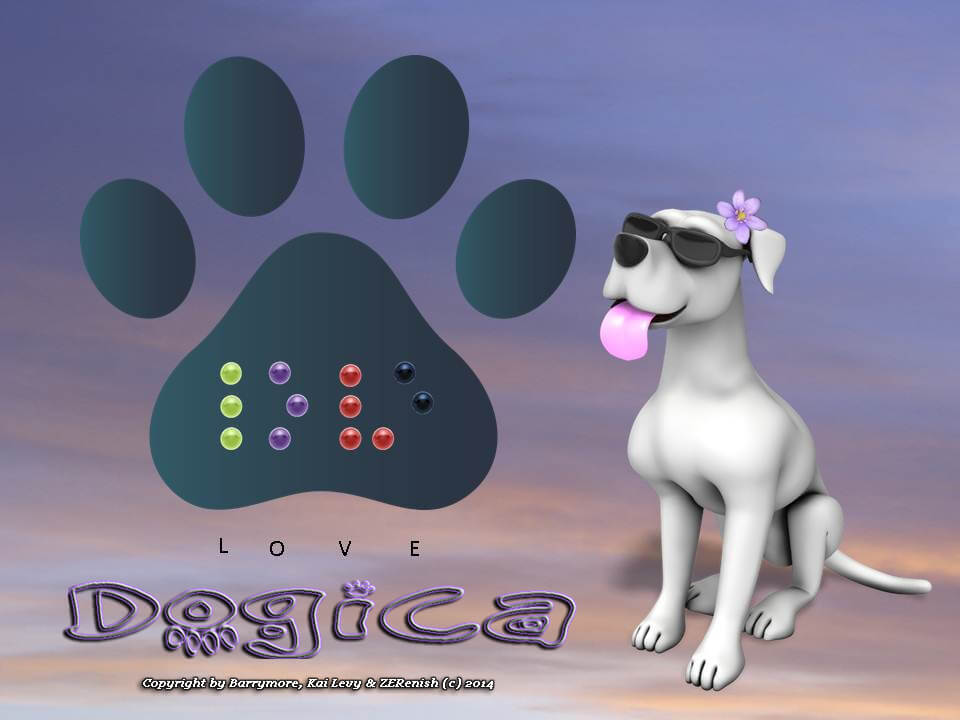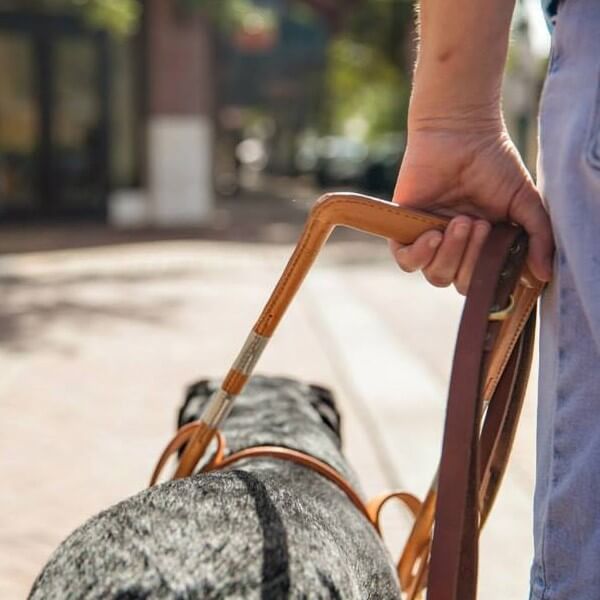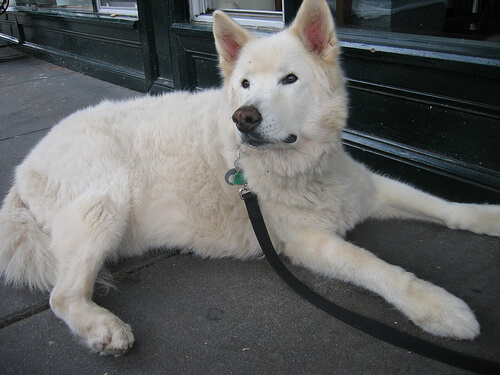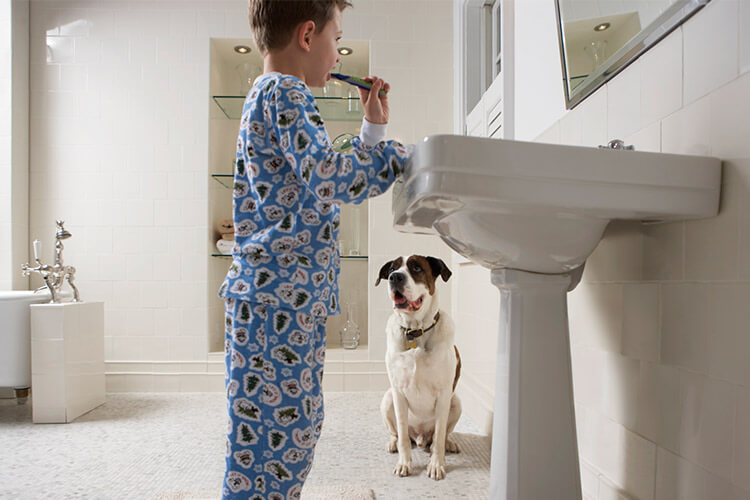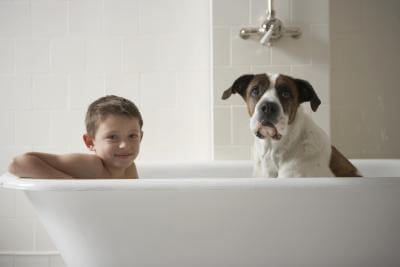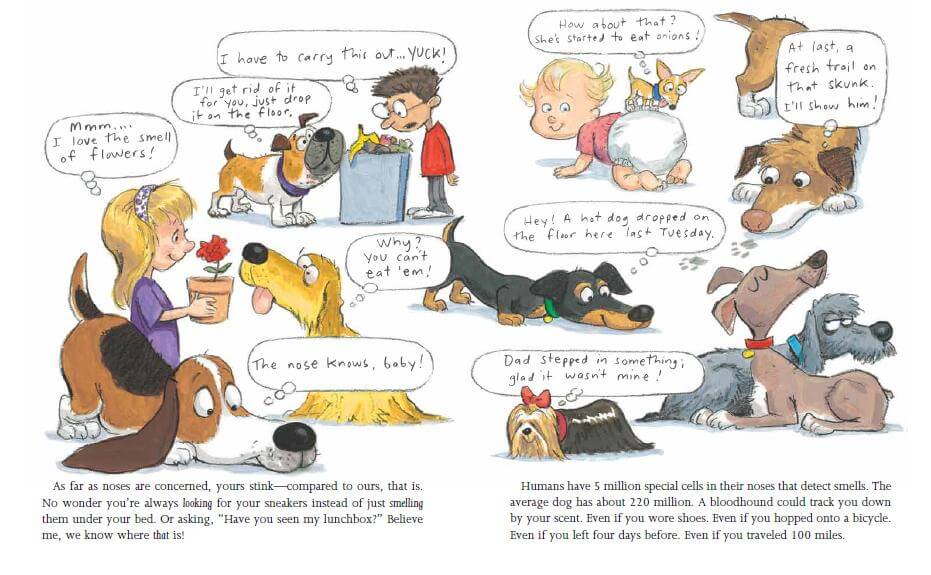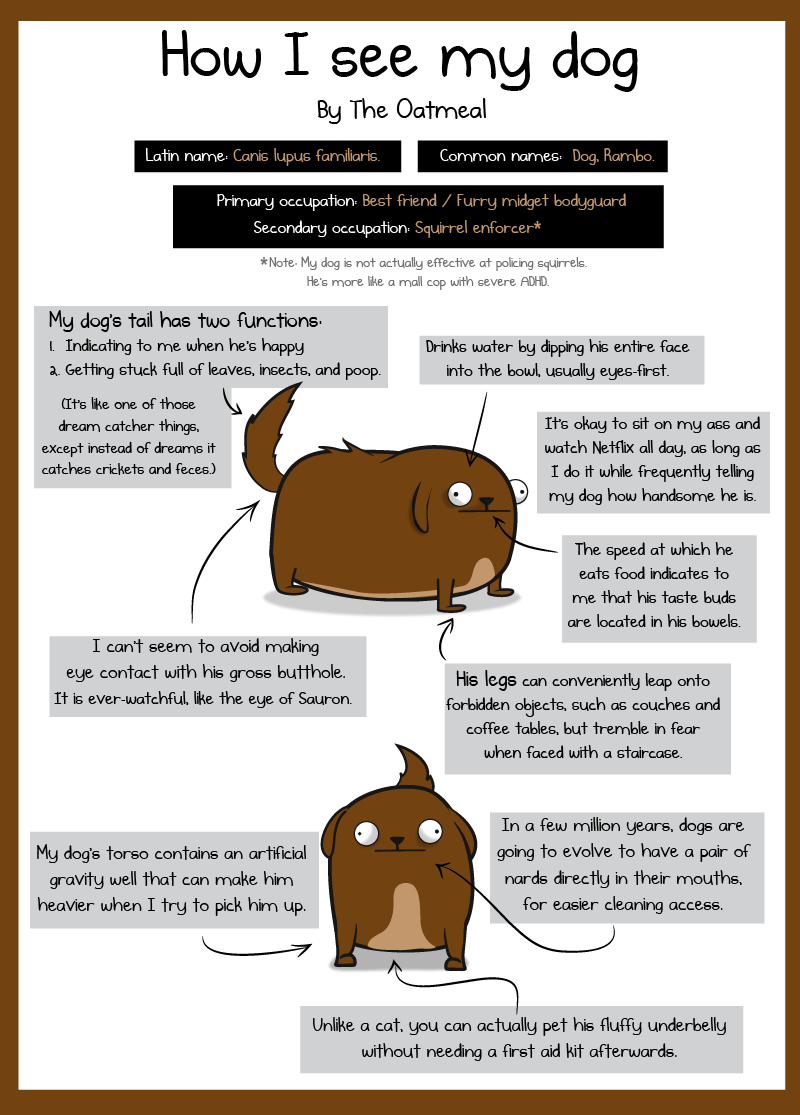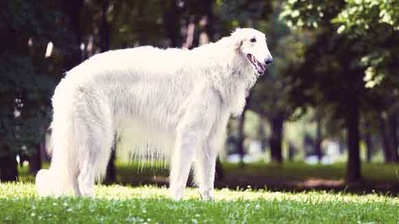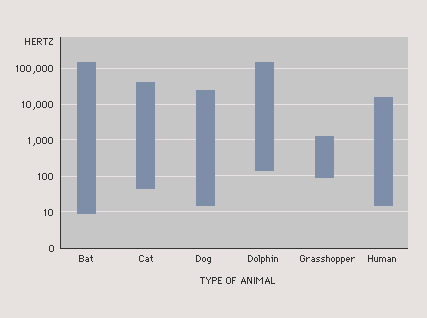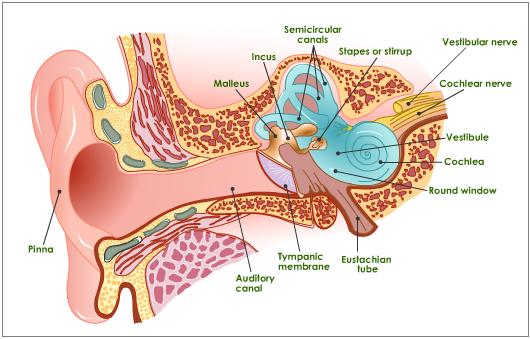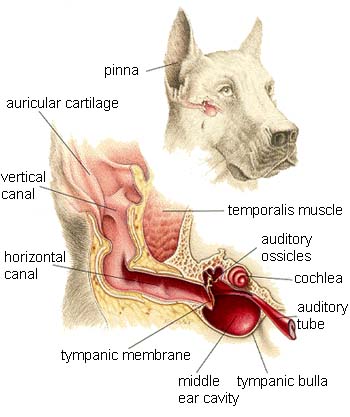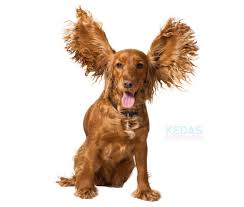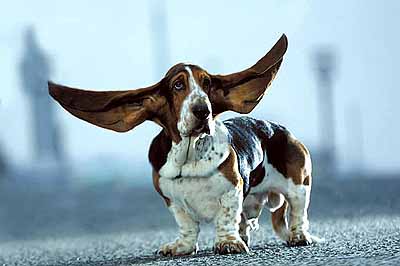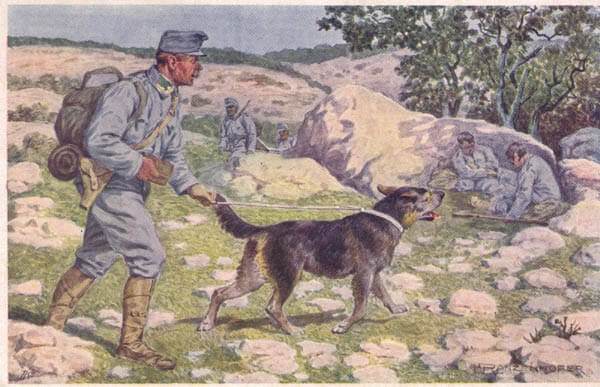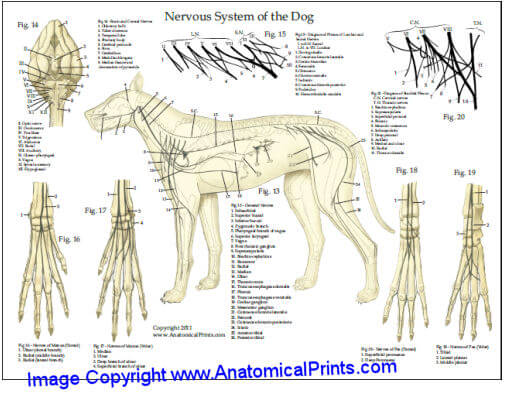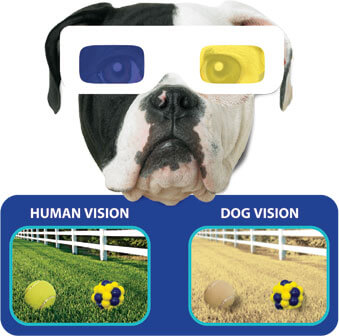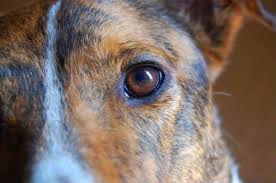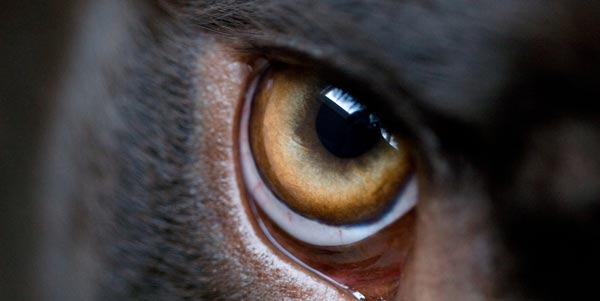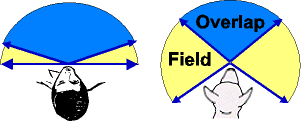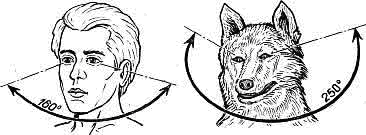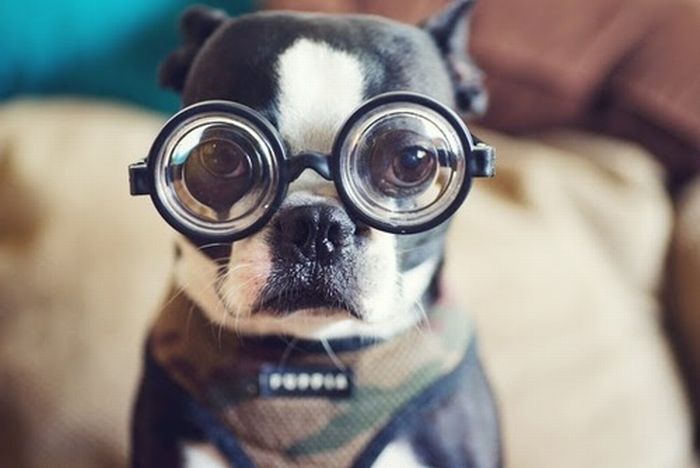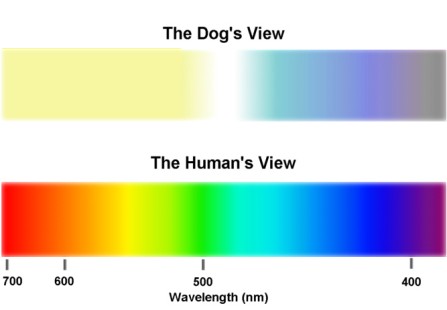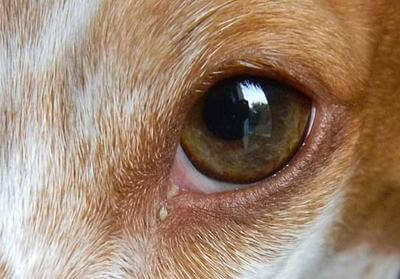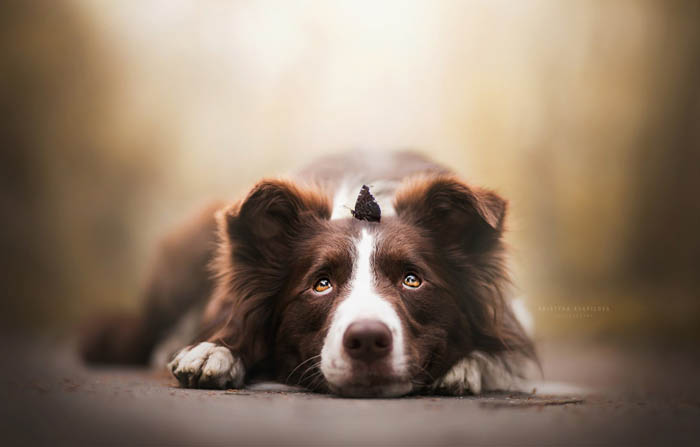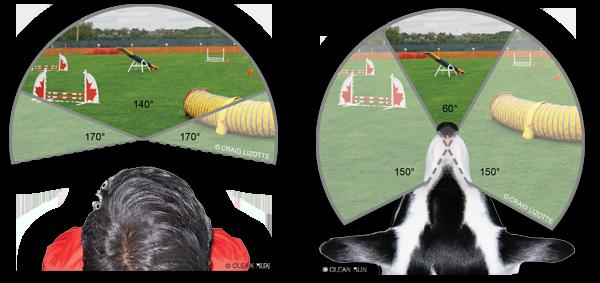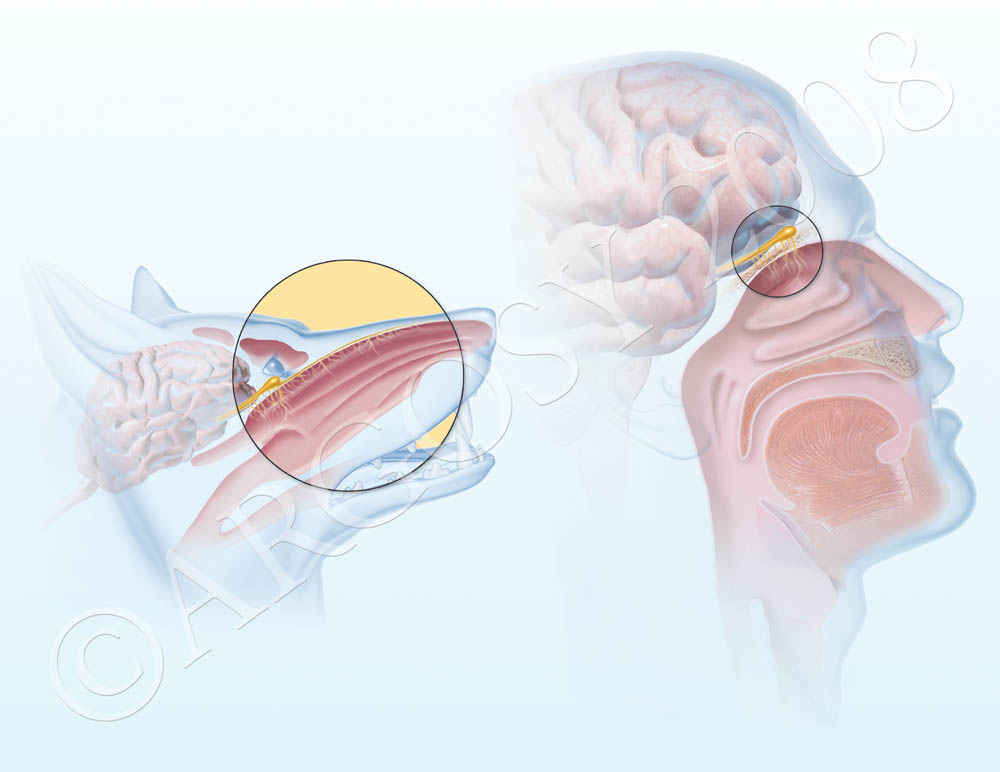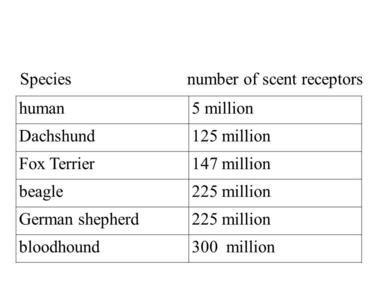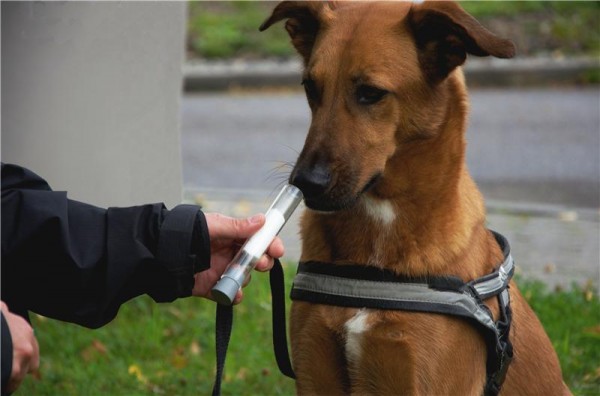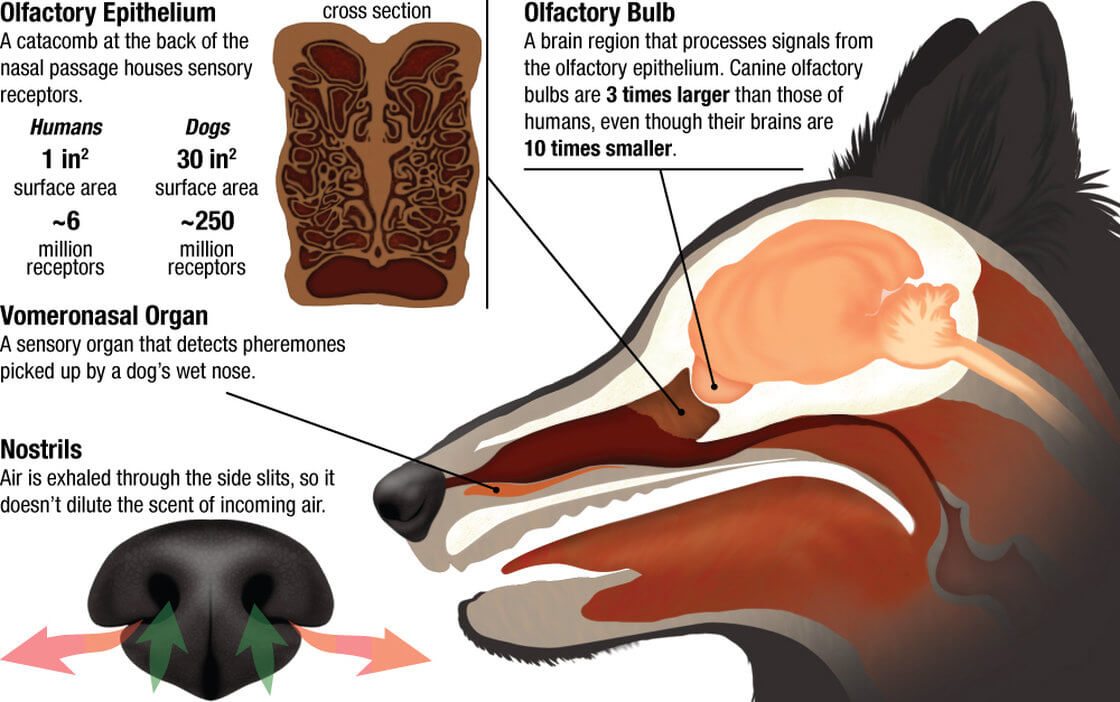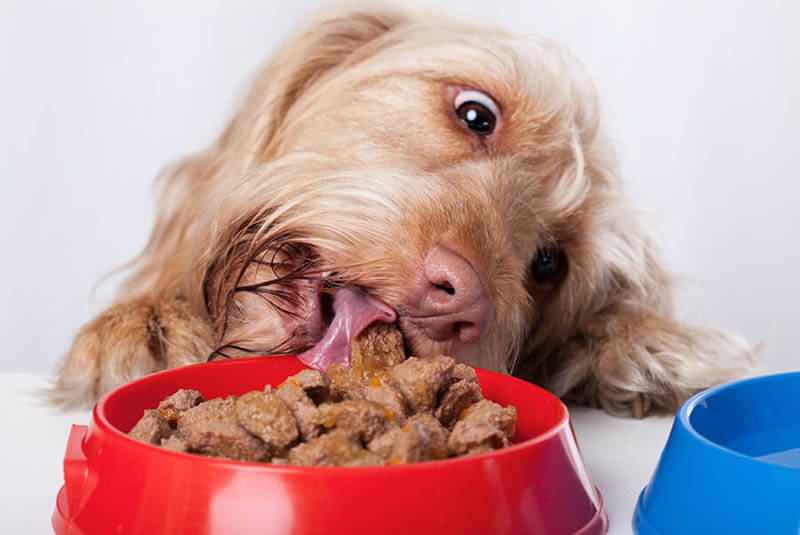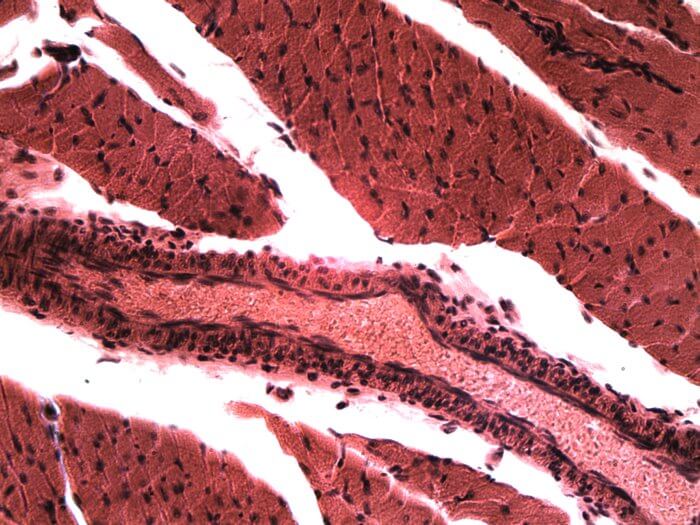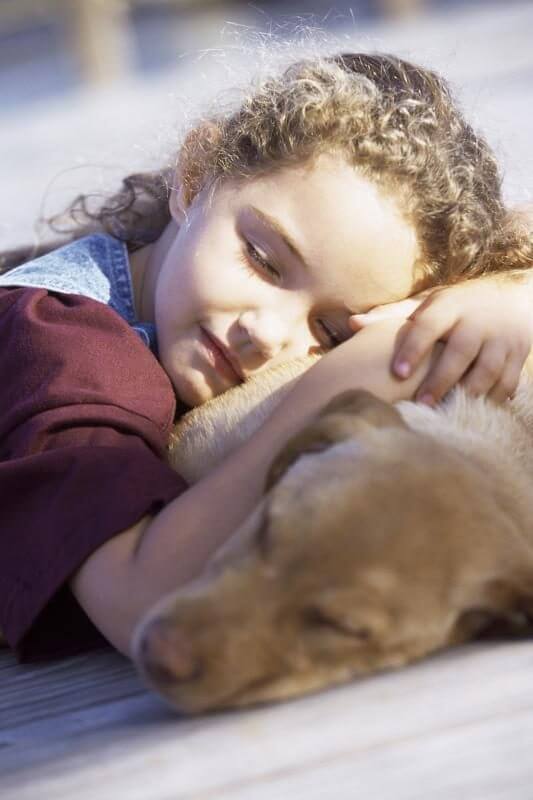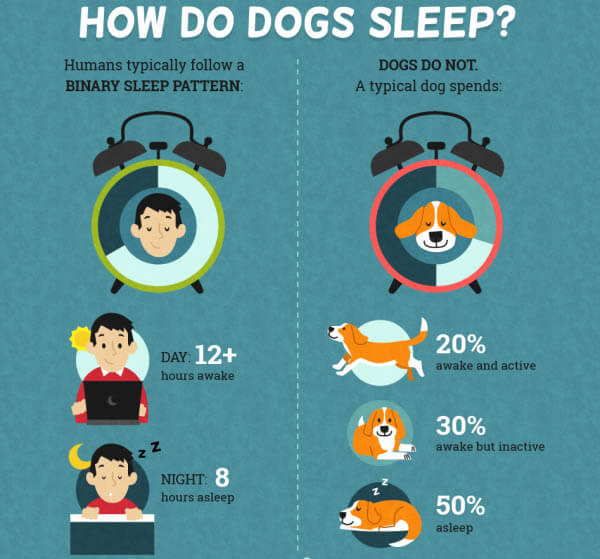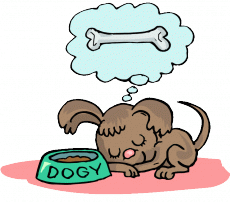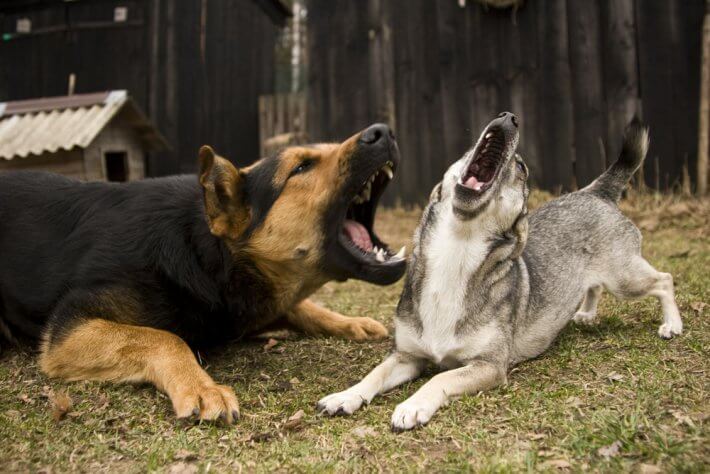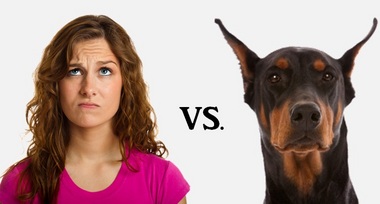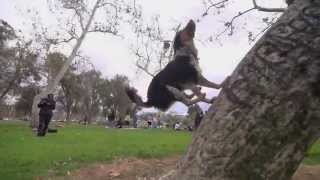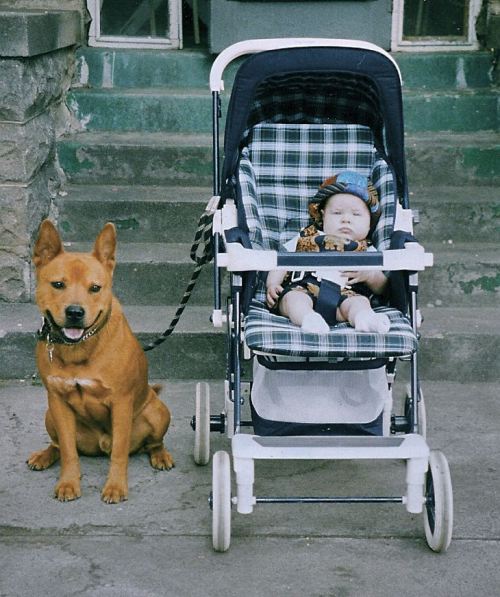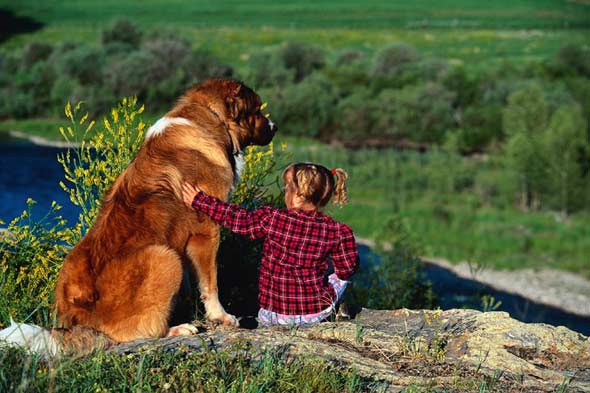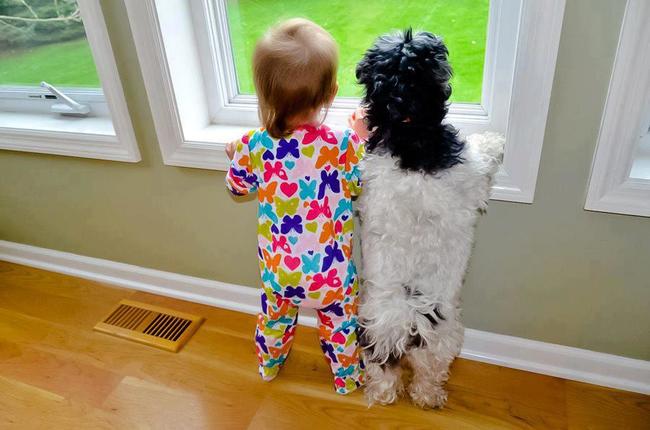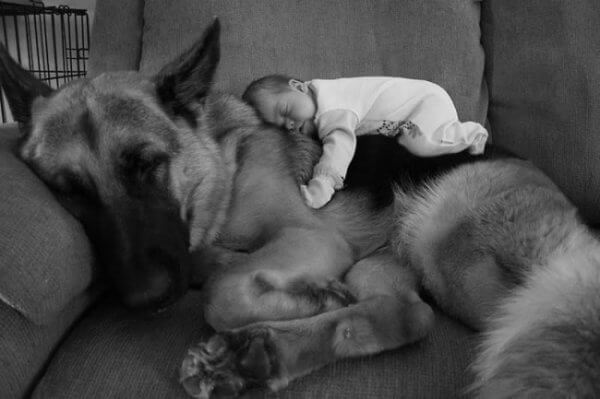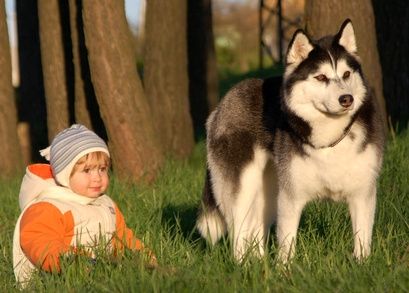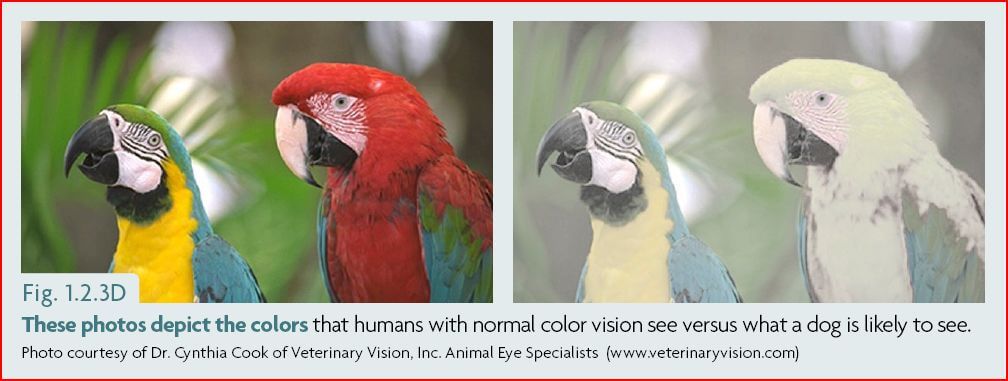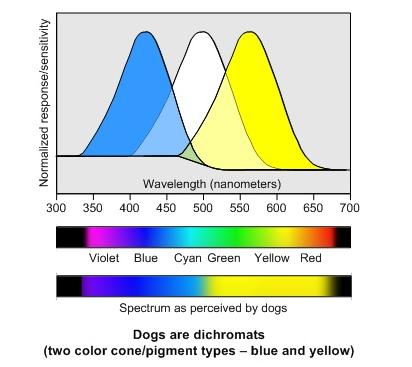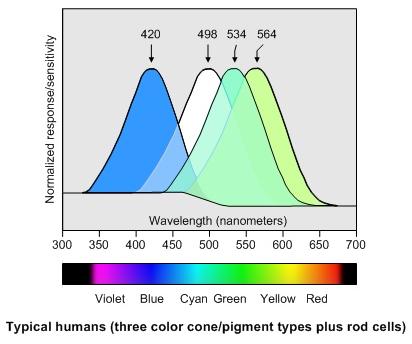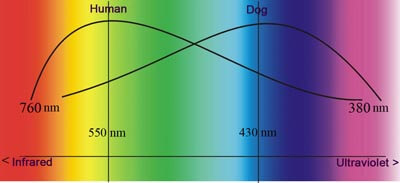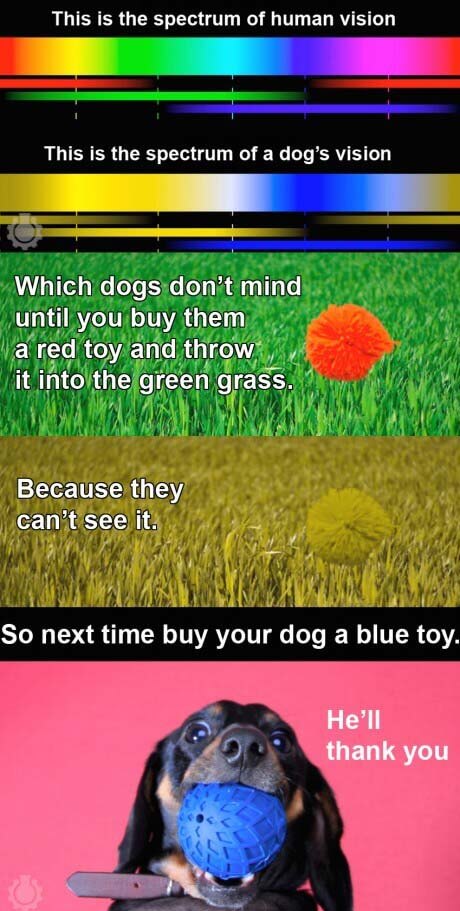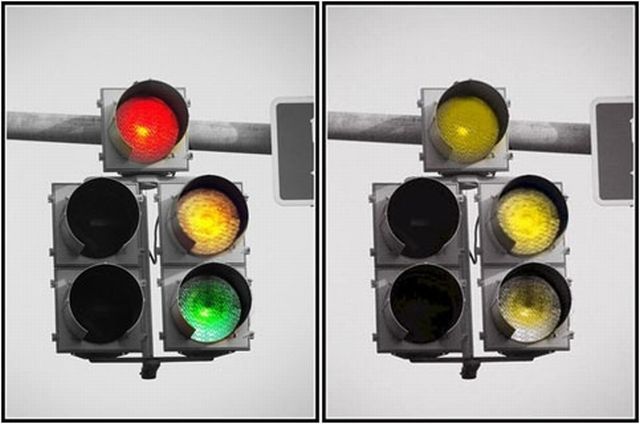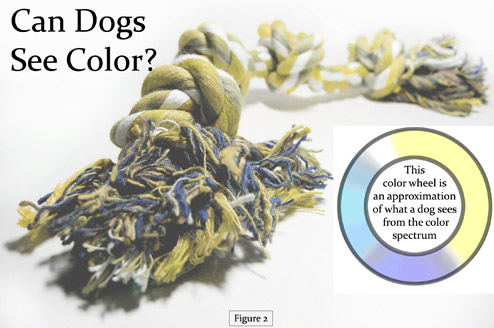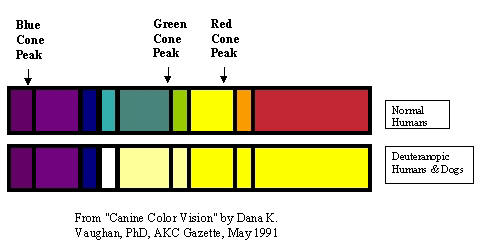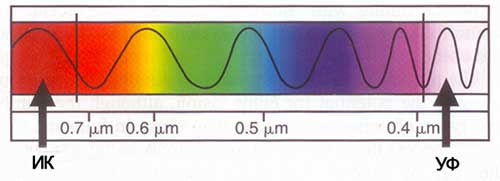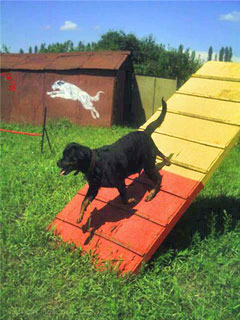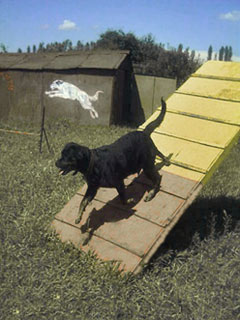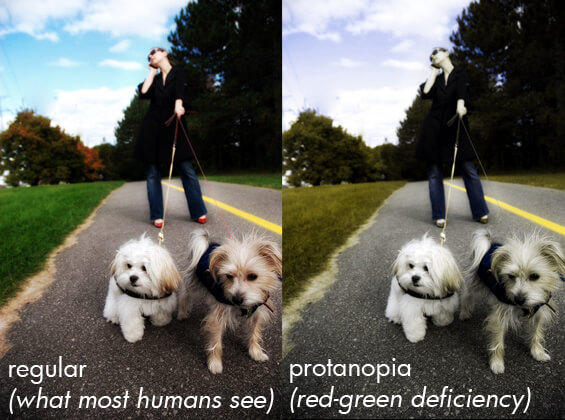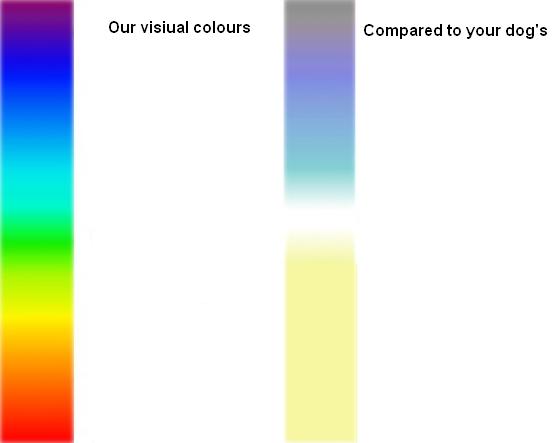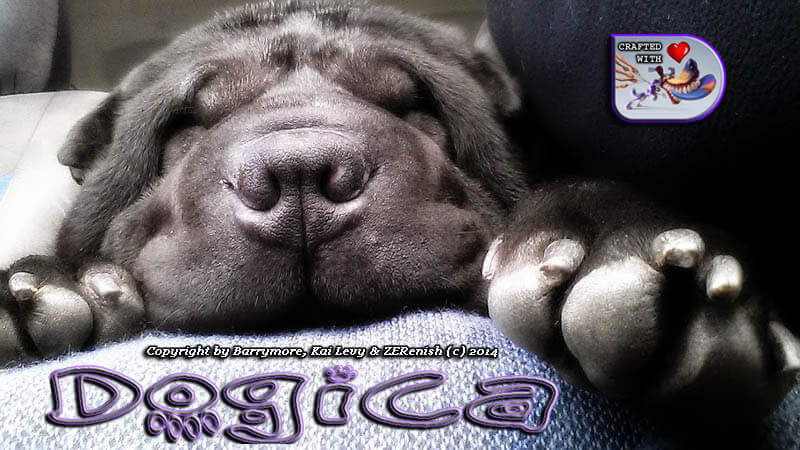DOG vs HUMAN AGE
This article proudly presented by
WWW.PEDIGREE.COM
and
WWW.BUSINESSINSIDER.COM
Dogs age at different rates compared to humans, but the simple rule of 7 dog years to 1 human year is far from accurate. If humans aged seven times slower than dogs, then many of us would be able to reproduce at age 7 and live to be 150. Obviously that’s not the case. The reason that dogs can reach full sexual maturity after only a year is that our canine friends age faster during the first two years of their lives than humans do. Even this general statement is slightly off since smaller breeds tend to mature faster than larger breeds. Compared to humans, dogs age more quickly at the beginning of their lives and slower toward the end. Therefore, calculating your dog’s age relative to yours is a bit tricky, but luckily it’s possible.
Since smaller breeds tend to live longer than larger breeds, it’s important to calculate your dog’s age according to the right category: small (20 pounds or less), medium (21-50 pounds), large (51-90 pounds), or giant (over 90 pounds).
Although the origins of the seven year myth is unknown, people have been trying to find a good way to calculate dog years in human years since the 1200s. One of the earliest examples of this is an inscription at Westminster Abbey that dates to the year 1268 and calculates that one human year is equivalent to nine dog years, which was part of some strange way to calculate the end of the world in the 1200s. The seven year rule is thought to much more recent.
A veterinarian at Kansas State University told The Wall Street Journal: «My guess is it was a marketing ploy. It was a way to encourage owners to bring in their pets at least once a year.»
DOG AGE CALCULATOR
BY PEDIGREE
DOG AGE vs HUMAN AGE
ONLINE CALCULATOR
by WWW.AJDESIGNER.COM
DOG vs HUMAN AGEING COMPARISON
This article is proudly presented by
WWW.VCAHOSPITALS.COM
and
Lynn Buzhardt
You watch your young pup bounce across the lawn. You see your old dog lumber slowly to the food bowl. You take a brisk run with your young dog close at your heels. You slowly walk to the mailbox and your old dog still lags behind. What a difference a few years make to your dog. You do not feel older, so why does your dog? Perhaps it is because what you and your dog consider «old» are vastly different.
Comparing your human age to your furry friend’s canine age is rather complicated, but, simply put, one year to Fido is not one year to you. The most common theory comparing human and canine ages uses this equation: Dog years X 7 = Human years. This simple equation is only a rough estimate. A more accurate comparison of human vs. canine age takes into consideration the dog’s size and breed.
Dogs develop more quickly the first two years of life, after which development levels out a bit. Smaller dogs age more slowly and have longer life spans. Larger dogs age more quickly and have shorter life spans. In addition, certain breeds enjoy more longevity than others.
When comparing size, small Poodles live longer than huge Great Danes. But when comparing breed, Great Danes outlive mid-sized Bulldogs. So the 7 to 1 ratio does not hold across the board. Another factor that skews age calculation involves the rate of canine development. Dogs develop more quickly the first two years of life, after which development levels out a bit. During the first two years, one dog year equals about 10.5 human years.
All of these calculations are based on the assumption that the average human life expectancy in developed countries is 80 years. The average life span globally is only 66 years. So the equations have to be altered according to geography. Complicated enough for you?
Complications in comparing dog age to human age are well founded. The old 7 dog years = 1 human year theory is inaccurate because the dog ages and develops more quickly the first two years of life. Plus the ratio varies with dog breed and size. Even the more accepted equation utilizing the 10.5 factor the first two years of the dog’s life and 4 years thereafter has pitfalls because it does not account for size and breed.
The more accurate estimate of a dog’s age in human years is calculated taking size and breed into consideration. This method either categorizes dogs as small, medium, and large or more specifically uses their estimated adult weight. What is consistent is the fact that dogs age more rapidly than their owners do.
Emotional Ageing
To further complicate the issue, emotional maturity does not align with physical maturity. Emotional maturity occurs over an extended period of time. For example, a 21 year old human is considered an adult, but may not reach emotional maturity until age 40 or so. The same applies to dogs. Even though a nine month old pup may be socially and sexually active, full maturity is not achieved until age 3 or 4. That is why 2 year old Labradors still chew your favorite slippers!
When is senior status conferred? For humans, some people consider 55 year olds to be senior citizens. Others delay imposing that status until 65 years. Canine senior status varies, too. Small dogs are considered senior citizens of the canine community when they reach 11 years of age. Their medium sized friends become seniors at 10 years of age. Their larger sized colleagues are seniors at 8 years of age. And, finally, their giant-breed counterparts are seniors at 7 years old. So a Great Dane becomes a senior citizen far earlier than a Pomeranian.
With age comes lots of loss, but there is also a lot of fulfillment looking back on a life (human or canine) that was well-lived. So forget about the equations. The joy you share with your pet should never get old.
Does Emotional Attachment to an Owner Change in Older Dogs?
DOG vs HUMAN SMILE
This article proudly presented by
WWW.BORDER-WARS.COM
Play Face
Because this display represents more confidence in the dog-whereas the submissive grin suggests little, this behavior is known to progress in intensity and positivity into a more playful and happy countenance: the play face.
The «play face» expression is an intensification of the greeting grin (Fox 1972, Fox 1977). The ears are erect and forward, anatomy permitting, and panting may occur. At the same time, the tail is often high and wagging while the front is in the play bow (Fox 1972).
Mimic Grin
A few dogs that are passively submissive will show the «mimic grin» facial expression (left, Beaver 1981). The expression is easily confused with an aggressive one because of the bared teeth, but with the mimic grin, all other body signals indicate submission.
The Greeting Grin
Greeting Grin which is distinguished by lacking the display of teeth. Because of this, the Greeting Grin is rarely misinterpreted by laymen as a canine «smile.»
The «greeting grin» is associated with active submission. This facial expression resembles a human smile, with the corners of the mouth pulled back. It is seen only in human-dog interactions, not in dog-dog ones (Fox 1976).
This is the most appropriate behavior that humans should associate with «smiling» in dogs.
Note that the mouth is open but the lips are not retracted in a way to bare the front teeth, the whisker pad is relaxed, the brow is not furrowed, the ears are active and forward, and the tail is engaged. The dog is not sending mixed signals and is truly at ease and inviting positive interactions without fear. By its effect, the play face is a distance reducing behavior: come play with me!. This behavior is often coupled with the «play bow.»
Agonistic Pucker:
This behavior falls in the dominant, aggressive, and agonistic type of signals. In the case of canine interactions «agonistic» is most often used to refer to aggressive behavior but can also include behaviors related to dominance displays, submission, and defensiveness. During an agonistic pucker, the canid’s lips are drawn away from the teeth exposing the incisors and canine teeth, the skin above and to the sides of the nasal plane wrinkles, the corners of the mouth are drawn forward shortening the commissures, the tongue may be drawn back in preparation for a bite, or it may protrude to create a combination of an agonistic pucker with a tongue flick/distancing signal.
Behaviors and emotions are complex and stochastic, they are not always deterministic and unique and monotonic. What appears to be the same behavior can be sending different messages depending on the context and combination of other signals. Dogs can and do send mixed signals. The first lesson we need to learn, however is that we can and should not anthropomorphise our dog’s behaviors because we think they look like something we understand more clearly in human behavior.
DOG vs HUMAN
INTELLIGENT RELATIONSHIP
This article proudly presented by
WWW.THEGUARDIAN.COM
Beyond simply being hairy, smelly love machines, a growing body of research shows that dogs may be even more in tune with us than we previously thought. So, why our relationship with dogs seems so uncomplicated?
Dogs read our body language
Human babies understand that pointing and gaze direction are indications of what’s going in another person’s mind. To examine whether this skill is learned or inborn, research has explored these capabilities in our closest evolutionary relatives — chimpanzees and bonobos. The classic test is to hide a treat in one of two locations then point to where it is. Children from just over a year old will have no difficulty recognising this signal and will come and claim it. Chimps do no better than randomly choosing between the two locations, completely ignoring the cue. Given that chimps seem to struggle with this task, it was widely assumed that it couldn’t possibly have evolved in other, «lower» animals. Do this experiment with your cat and she will probably gaze uncomprehendingly at your finger for a while.
Imagine researchers’ great surprise then when it was revealed that dogs, who are miles away from us on the evolutionary tree, passed this task with flying colours. Hide a treat in one of two locations and point at it and dogs will reliably bound over and gobble it up, even when the treats don’t smell of anything. Not only that! If you stand a long distance away and point, dogs will unfailingly go to the right location. If you simply bow or nod in that direction, they get it. If you look at one hiding place rather than another, they get it. Perhaps most impressively, if you walk in one direction and point in the other, they still get it.
Dogs know what grabs our attention
Another test of mind reading ability is knowing what someone is paying attention to. Given the option of begging food from two people, one who has seen where the food is hidden and one who has a bucket on his head chimps will randomly go to either one. Dogs, on the other hand, will consistently choose the person who can see. If you have a dog you can try this yourself. Throw a ball and then turn away and the dog will almost invariably come round and drop the ball in front of you, where you can see it. This indicates that dogs are not just playing with their humans, they are also keeping track of what their humans are looking at and how best to get their attention. This sort of gaze reading ability can take months to develop in young children and may never develop in inhuman primates.
Dogs love us
Like cats, dogs also seem to form strong emotional attachments to their owners in much the same way as human babies do to their mothers. The typical test of babies’ attachment is to plonk them down in an unfamiliar environment and see how they fare. If babies have a strong emotional attachment to their mothers they will explore the new environment, returning to her regularly for reassurance, get terribly upset if she leaves the room but be quickly consoled when she returns. Dogs show an almost identical pattern of responses with respect to their owners. Sniffing about, returning to the owner, pawing the door and whining when the owner leaves followed by exuberant greetings on their return. Like babies they are distrustful of strangers in the room with them and tend to show signs of increasing distress the longer their owner is away.
Dogs listen to us
Finally there is some evidence that a couple of precocious pooches may have that most quintessential of human skills, comprehending language. Rico, a border collie, has been shown to differentiate at least 200 different labels for objects, an astonishing vocabulary for a canine. Chaser, another collie, understands more than 1,000 different words! Both will bring you the toy you ask for from a huge selection and will do so even if you instruct them out of sight. This means they are not simply picking up on unconscious not verbal signals. If you present these dogs with a familiar toy and a new object, then ask them to fetch the «dax» (a word they won’t have heard before), they will reliably bring you the new toy rather than one they already know the name for.
This sort of inference is called «fast-mapping» and is thought to be the skill that underlies human children’s astonishing speed of language acquisition in early childhood. But even human children don’t show this ability to the same degree as Rico and Chaser until about 2-3 years of age. That dogs are so surprisingly proficient at reading human communication might come as no surprise to dog owners but has been something of a revelation for psychologists interested in how these skills have evolved. What is especially surprising is that they seem much less developed in our closest genetic relatives, inhuman primates for humans and wolves for dogs. So these skills cannot be explained by any simple evolutionary model or by straightforward pack behaviour.
What we are finding is that the rudiments of what we thought of as particularly human social skills may have their roots much further back in evolution than previously expected. Alternatively, they may have evolved in different species independently. What seems increasingly clear is that dogs have maintained the reputation of being «man’s best friend» not simply through our own benevolence but also through developing an impressive set of social skills that make them ever-sensitive to our whims and fancies.
DOG vs HUMAN ANATOMY:
PAWS, NAILS & HANDS
This article proudly presented by
WWW.NCBI.GOV
and
WWW.WEEBLY.COM
and
Kyle Hall
There are an enormous amount of traits that humans and animals share — this is because of the evolutionary process of inheriting characteristics and traits from successive generations that all lead back to a common ancestor. Humans and animals share the same basic muscles and bones, but they appear at different sizes, proportion and ratios based on the animal.
Bipeds are animals that traverse their environment on two legs, like us humans. Quadrupeds are animals that use four limbs to travel around like dogs, horses, cows, cats, and many other four limbed mammals. In terms of locomotion, evolution has developed two very common forms of movement using the same muscles and bones. As shown below, humans and dogs share the same groups of bones and muscles even though they have completely different forms of locomotion. In diagram A, a human man is shown next to a dog, the bones are highlighted on each animal and they are shown to be the same bone but in different proportions and ratios. What many people would think to be a dog’s upper leg is actually its lower leg, and what many people think is it slower leg is actually the equivalent of a human palm.
Using the same two animals as a comparison, human hands and dog paws when seen side by side share the exact same bones in different places. As seen in diagram B the thumb of the human is a vestigial part of the dog’s foot, meaning a mutation from a previous ancestor that still appears in subsequent generations but is no longer used for the same purpose. In the comparison shown below in diagram C, the same bones shared between humans, large cats, and horses are pointed out, it is clear that many mammals have very similar skeletal structures regardless of their form of locomotion. Like the common misconception about dogs, the upper leg of most quadrupeds is hidden behind layers of muscle and fat, this is why colour coded Skelton diagrams are the most digestible forms of delivering information about the similarities and differences between human and animal anatomy.
Another very interesting area of anatomy that shares similarities and differences across multiple different species types is the bones of the hand. The human hand can be seen in many other animals such as bats, birds whales, horses, cats and other mammals. The diagram below shows how the same bones are reconfigured in other species to suit different purpose, including completely different types of locomotion including deep sea diving and swimming and even flight. It is interesting to see how the bones that we would see as the fingers can be fused together to create bird wings, or they can splay out to create bat wings. In the example of the horse, the «foot» of the horse that the hoof appears on is actually just one «finger» bone.
DOG vs HUMAN MEMORY
This material proudly presented by
WWW.ANIMALPLANET.COM
and
WWW.CUTENESS.COM
and
WWW.PSYCHOLOGYTODAY.COM
and
WWW.DOG-GAMES.CO.UK
and
Ira Hyman
and
Madeline Masters
The memory of dogs is more human-like than previously thought, allowing our furry pals to copy our actions, even after delays. Can dogs reminisce down memory lane like we do? Good question! Before we can answer that, we’ll have to ask whether dogs have long term memory — that is, any information stored in the brain for more than a few minutes that can be recalled or referenced when it’s needed later on. Dogs do not have our capability to make valued judgments, string ideas together, or recall incidents that happened even a few minutes before hand — DOGS LIVE IN THE PRESENT.
Dogs can’t mentally «time travel» backward and forward. Humans can consciously and willfully think back to specific memories and anticipate events. Animals cannot.
Like humans and other animals, a dog’s brain is being continually bombarded with information it receives from its senses — sight, sound, smell, taste and touch. The brain has to make sense of all this information and decide what needs to be retained in its memory, and which can be forgotten. Yet as we ourselves know, the brain does not store ALL this information — it would be impossible! Instead, the brain uses «filter systems» so that the creature can differentiate what are important memories (particularly those where safety or rewarding events happen or those that are threatening or unpleasant, that need to be stored for future use and those experiences and memories which can be discarded and forgotten. Because dogs brains are not as complex as our own, Nature has given them the capacity to make split-second decisions on what is important enough to retain in its memory, and what can be discarded and forgotten.
Episodic Memory
Dogs live in the moment. They are not able to travel through time in their memories the same way humans do. Our memories of past events are called Episodic Memories. You may sit down and think — what did I do yesterday after I got home from work?, But your dog can’t think back and say, «It’s been two days since you took me to the dog park, I think I’m due for an outing!, Because dogs ca not conceptualize a «past» (episodic memories) or a «future» (theoretical situations based on past events), they are completely focused on the present moment.
So, if dogs don’t experience time, how is it that they seem to «know» when certain things will happen, like walks and feedings? What we perceive as the dog «remembering» is often your dogs’ natural rhythms moving him into different states of being. For instance, you feed your dog at the same time every day. When dinnertime comes and he goes to his bowl but it hasn’t been filled, he comes to nudge and whimper. This isn’t because he «remembered» that it’s dinnertime, but that his internal clock’s timer went off, so he expected food.
In defining episodic memory, Endel Tulving argued that it is unique to humans. Experience influences all animals. Most mammals and birds can build complex sets of knowledge or semantic memory. You and I also remember the experience of learning these complex sets of information. Dogs don’t. It’s fair to say that explicit memory is most highly developed in humans. Pets probably don’t do much of the episodic or autobiographical parts. This means we don’t think animals remember specific events or moments unless they are associated with something else.
Episodic remembering is mental time travel and depends on a few crucial cognitive capabilities. First, in order to experience episodic remembering, an individual must have a sense of self. Most non-human animals have a dramatically different experience of self than we do. For example, most animals (and young humans) fail to identify themselves in mirrors. If I look in a mirror and see that I have something stuck between my teeth, I try to correct the problem. In contrast, put a red dot on a child’s forehead, put the child in front of a mirror, and watch what happens. Young children are more likely to reach for the baby in the mirror than for their own foreheads. Dogs treat the dog in the mirror as another dog; not as themselves. Most animals fail at the red dot mirror task. Because they lack episodic memory, they can’t recall what occurred just before the present moment and constantly feel like they just woke up.
Spatial Memory
Spatial memory is the ability to recall where things are located and how a location is arranged. For example, imagine you took your dog for a long walk and when you returned home, your spouse had rearranged all the furniture in the living room. If your dog walked into the living room and looked around inquisitively, then sniffed all the furniture, this indicates that she has a spatial memory of your living room and she noticed the changes your spouse made to this space. Your dog’s ability to recognize that a room she knows has changed is evidence that she has long-term memory.
A self concept is not, however, enough to ensure episodic remembering. Mental time travel is the other critical cognitive capability. I understand that yesterday is different from today and that tomorrow will be different as well. We realize that when we remember, the mental experience is a disjointed slice of time. Thus episodic remembering is the combination of a self concept and mental time travel: recollecting the self in that other time period. Mental time travel also enables planning for the future. Dogs don’t plan for particular future events although they have a general expectation of when dinner will appear.
Procedural Memory
Your dog remembers his training, not because he can recall the specific instances when you told him to sit, lie down and stay, but because his brain develops connections that remain after the training. For example, if you are training your dog to shake, and you give him a treat every time he puts his paw in your hand, his brain makes the connection that giving his paw gets him food. Then, when you ask your dog for his paw later, these connected neurons fire, and he completes the task. Your dog obeys because his brain has wired itself to respond in the way that gets him what he wants a treat, not because he recalled a conscious memory and made a decision to follow the command. This kind of memory is called «procedural memory,» and humans have it, too. It’s what we use when we do routine things we no longer have to think about, like tying our shoes or brushing our teeth. Dogs may be predisposed to first observe humans, then encode and remember human actions if doing so is beneficial for them. The scientists suppose that dogs use their memory of human actions in their everyday life with humans, to learn about behaviors that may convey advantages or rewards and also to fine tune their behavior to that of the humans living with them.
Declarative Memory
The ability to encode and recall an action after a delay implies that the dogs have a mental representation of the human demonstration. In addition, the ability to imitate a novel action after a delay without previous practice suggests the presence of a specific type of long-term memory in dogs. This would be so-called declarative memory, which refers to memories which can be consciously recalled, such as facts or knowledge.
The discovery, outlined in the latest issue of Animal Cognition, means that dogs possess what’s known as «declarative memory,» which refers to memories which can be consciously recalled, such as facts or knowledge. Humans, of course, have this ability, as anyone playing a trivia game demonstrates. But it had never fully been scientifically proven in dogs before, although dog owners and canine aficionados have likely witnessed the skill first-hand for years.
Dog Time Concept
In trying to understand dogs’ concept of time, humans cannot help but reference their own concept of time. But that’s tricky since humans have the unique ability to construct artificial measures of time such as the second, minute, and hour. This is mainly because humans use episodic memory in order to travel through time, recalling past events and looking forward to future ones. It’s what many scientists believe makes humans unique.
But just because dogs don’t perceive time in this way doesn’t mean they are completely stuck in the moment, as a lot of the research on this subject would suggest. Dogs are capable of being trained based on past events and taught to anticipate future events based on past experiences. This argues in favor of a kind of canine version of episodic memory, according to researches.
The essential difference appears to be that humans can pinpoint when something happened in the past by relating it to other events. For example, we remember our wedding day as well as who attended, what songs were played, and the happiness we felt. Dogs, on the other hand, can only distinguish how much time has passed since an event has occurred -«My food bowl has been empty for six hours.» Of course, they don’t need only memory to tell them this, but a growling stomach says it all.
Separation Anxiety vs Time
There is also research evidence for dogs’ understanding of the concept of time based on changes in their behavior when left alone by their human companions for different lengths of time. Studies show that dogs display greater affection toward their owners if they’ve been separated for longer periods of time. As the amount of time away increases, so does the dogs’ excitement. This will come as no surprise to dog owners — most canines get excited about the return of the master to the castle, especially after long absences. But this research is also important because it shows that dogs are capable of recognizing and responding to different spans of time.
For dogs that suffer from separation anxiety, the difference between one and five hours can mean the difference between mild agitation and a full-blown panic attack. Separation anxiety in dogs is often expressed as barking, howling, whining, chewing digging, pacing, scratching, and/or urinating and defecating in inappropriate places while an owner is away or upon his or her return.
HOW TO SOCIALIZE
YOUR DOG WITH PEOPLE
This information courtesy of
WWW.FIDOSAVVY.COM
and
WWW.PAWSINTRAAINING.COM
and
WWW.KONGBOX.COM
and
WWW.PETFUL.COM
and
Caitlin Crittenden
Start by introducing your puppy to other humans in a comfortable environment. Your own home is ideal so that your dog is not overwhelmed by new people and a new environment at the same time. Start with family members or other people that your dog already feels relaxed around. Get your dog used to calmly going up to someone with words of encouragement like, «Go say hello to dad!» Keep repeating this exercise and be sure to reward your dog with a treat when they obey. However, do not reward actions such as jumping up on other people, barking, or any other undesirable behavior.
It is a good idea to start your puppy socialization program by aiming to meet one new person two or three times a week. Dogs are not very good at generalization, and your little guy won’t necessarily recognize a very tall man with a hat as being of the same species as a short lady wearing a dress! Someone who looks different to the other people he is used to seeing, may be perceived as threatening or scary. Make sure your pup has positive experiences with all of these:
Children (including Toddlers & Babies if possible)
Teenagers and Young Adults
Adults
Elderly
Handicapped People & Equipment
Tall People
Short People
Men with Beards, Mustache or Facial Hair
People Wearing Hats
People with Different Color Skin and Complexion
Men with Deep Voices
Women & Children with High Voices
Women, Girls with flowing Skirts
APPROACHING YOUR PUP
When people approach your puppy, it is essential that they do not bend over him, as that could be very frightening for a tiny pup. Also, do not allow people to pick the puppy up and cuddle him. That could be a very scary experience for a young puppy, especially if he is shy. Always allow your puppy to approach other people, not the other way around. Watch for signs of anxiety in your puppy such as avoiding eye contact, backing away, or clamping his tail to his backside. A happy puppy will always stand upright, probably with their tail wagging! Try not to use food when you introduce your puppy to new people as he could learn to associate people with food and may begin to scrounge or jump up.
SOCIALIZING TO MEN,
WOMEN AND CHILDREN
A good rule of thumb is to allow your puppy to meet 100 men, women and children by 16 weeks of age. Meeting the same person repeatedly does not count as the puppy will only socialize to that particular individual. Be sure to make allowances to meet different ethnic groups, different sizes and shapes and different ages of individuals. It is relatively easy to socialize a puppy to women as women are much more likely to walk right up to a strange puppy and coo and coddle him. Men are more likely to admire an adorable pup from a distance and children can sometimes be hard to find. Below are some clever places to go to find those elusive men and children. When you get there, proactively ask the men and the children to meet your puppy — now is not the time to be shy!
Children
Linger in the parking lot or close to the entrance and bring treats that the children can offer to your puppy. Bring one or two small plush toys to put into the puppy’s mouth while he is greeting the children to prevent him from accidentally mouthing a child.
Libraries
Bus Stops
Toy Stores
Across the Street from any School when School is Starting or Ending
Ice Cream Shops
Entrance to Movie Theaters
Playgrounds — keep puppy at a safe distance!
Athletic Fields and Courts
Men
Home Depot or Lowe’s — Visit the contractor entrance early in the morning to see uniforms and lots of trucks too!
Car Washes
Hardware Stores
Barber Shops
Hotels linger by the Entrance
Gyms linger by the Entrance
Electronics Stores
Sporting Goods Stores
Sports Arenas
Car, Bicycle and Motorcycle Stores
Downtown for Morning, Lunch Hours or Evening Rush Hour
City Parks
People of all Shapes,
Sizes, Ages
and Nationalities
Open Air Shopping Centers
Airport
Outdoor Cafes and Coffee Houses
City Parks that allow leashed dogs
Hotels linger by the Entrance
The Parking Lot or Entrance of any Grocery Store or Mall
Schools and Churches — be across the street when school or church lets out and let puppy watch all the action and meet and greet the people.
PAIR PEOPLE WITH TREATS
1. — Recruit as many family members, friends and dog lovers as you can to help you.
2. — Working one at a time, have someone toss treats to your dog from a distance your dog is comfortable with whenever they are being quiet or calm. Have the person ignore your dog — other than tossing the treats, while they do this.
3. — When your dog is completely comfortable with the person at the current distance, have the person toss the treats slightly closer so that your dog must come nearer to them to get the treats. Go slow with this — gauge your dog’s reactions. Avoid encouraging your dog to approach too closely before they feel comfortable to avoid any potential fear biting.
4. — When your dog willingly goes up to the person, even without the person tossing food to lure them in, the person can have your dog perform commands or tricks and reward them for their obedience with the food.
5. — Once your dog is comfortable with one person, move on to another friend and have that person practice the same training, starting from the beginning again. Your dog will need to warm up to multiple people gradually to learn that all people are safe.
6. — In general, you can also offer your dog a treat while they are calm around people they spot in public — walks are common examples of this. Keep enough space between you and the other person for your dog to be successful and remain calm. Keep your attitude calm and confident, too.
PAIR PEOPLE WITH FUN
1. — Use toys in place of treats as a reward for calm behavior around people.
2. — If your dog loves to play fetch, have a friend play with them, but you be the one to take the ball from your dog and hand it to your friend to throw again until your dog is completely comfortable with the person.
3. — If your dog enjoys walks, have a friend go on a walk with you. At first, have your friend stay far enough away for your dog to relax around them. Keep the walk structured, and reward your dog for calmness and focus on you. When your dog becomes comfortable around the person at the current distance, decrease the amount of space between your dog and the other person gradually over time. Expect this to take several sessions before the person can walk within 5 feet of your dog.
4. — If your dog has a canine buddy, let your dog watch the other dog interact with your friend. Have the other dog perform tricks and commands for your friend, play games, like fetch, with them, and go for walks with them while you follow behind with your dog.
5. — Teach your dog commands like «Say hi» and «Touch.» Practice those commands with people your dog knows and have those people reward your dog heavily for obeying the commands. Once your dog can perform the new commands with friends and if your dog is only mildly shy: practice the new commands with a calm person your dog does not know. Have the new person stand still and stay calm while your dog performs the command. If your dog has any aggressive tendencies, do not practice these up-close commands yet.
SOCIALIZING DOGS to PEOPLE IN-DEPTH GUIDE by Kathy Diamond Davis
5 BASIC TIPS FOR INTRODUCING DOGS TO STRANGERS by WWW.PETGUIDE.COM
STRANGERS vs PUPPIES: SOCIALIZATION TIPS AND GUIDE by WWW.LEERBURG.COM
DOG vs HUMAN SPORT:
22 WAYS TO GET HEALTHY
This article proudly presented by
WWW.PSYCHOLOGY
TODAY.COM

DOG vs HUMAN SPEED
This article proudly presented by
WWW.PSYCHOLOGY
TODAY.COM
and
Stanley Coren
Human Vs. Dog: Who Is Faster?
Can a human run faster than a dog? Many experts say it depends on the person and the breed. Some dogs can easily beat the human, either at sprints or long distances. The main thing is that a trained person can run for hundreds of miles and animals can’t.
WATCH DOG & PUPPY VIDEO !!!
The fastest man Usain Bolt’s average ground speed equates to 23.35 mph — 23.72 mph. While the fastest dog Greyhound can outrun Usain, as its average racing speed is 39 mph. The key to the Greyhound’s speed lies in its muscular build, large heart and the extreme flexibility of the spine. Experts explain that dogs have four legs and use the rear legs to push forward, they cover more ground on four legs than humans do on two legs.
These are the reasons why an average dog will likely be faster than an average person. Running is in their nature. By the way, that was the reason why people started using dogs for hunting.
WATCH DOG & PUPPY VIDEO !!!
There is enough data from numerous dog racing and coursing events to allow us to compare the performance of Greyhounds to human world record holders in a number of track events.
Usain Bolt holds the world record for the 100-meter race at 9.58 seconds.
A Greyhound has been measured doing that same distance in 5.02 seconds.
Usain Bolt also holds the world record for the 200-meter race at 19.19 seconds, as compared to the Greyhound who requires only 10.35 seconds cover the distance.
Michael Johnson holds the record for the 400-meter race at 43.18 seconds, which is considerably slower than a Greyhound who completes it in 21.10 seconds.
David Rudisha’s 800-meter record of one minute and 41 seconds pales in comparison to the 50-second time for the Greyhound.
Hicham El Guerrouj’s 1,500-meter record of three minutes and 26 seconds is sluggish in comparison to the one minute and 43 seconds time for a Greyhound.
Kenenisa Bekele holds the record for the 5,000-meter race at 12 minutes 37 seconds, while the Greyhound covers that distance in barely half the time at six minutes 19 seconds.
Kenenisa Bekele also holds the record for the 10,000-meter race at 26 minutes 18 seconds, while Greyhound can cover that distance in a mere 13 minutes and nine seconds
So if dogs were allowed to compete in the Olympics against humans, based on the existing data available to us, it seems likely that the only field event that humans would definitely win would be the high jump, while the long jump would be a hard fought competition with a slight edge for the dog. However on the track, in all of the purely running events, ranging from the 100 meter dash all the way up through the marathon, the gold medals would clearly go to the dogs. In fact, in the marathon, after crossing the finish line the dog would have time for a half hour long nap before it’s world record holding human competitor would complete his run.
DOG vs HUMAN MOUTH
This article proudly presented by
WWW.LIVESCIENCE.COM
Here’s the myth that makes dogs sound like a dental miracle: Despite all the leftover macaroni, rubber bands and dead squirrels they chew, our canine friends still maintain better oral hygiene than human beings do, no matter how studiously we floss and how often we visit our dentists.
Could this really be true?
Well, sadly, no. In short, a dog’s mouth is besieged by its own legions of germs, roughly as huge in population as those living in the human mouth and causing a similar array of dental illnesses.
«It’s like comparing apples and oranges,» says Colin Harvey, a professor of surgery and dentistry at the University of Pennsylvania’s School of Veterinary Medicine. He is also the executive secretary at the American Veterinary Dental College. Although there’s a vast overlap of bacteria in the mouths of both species, Harvey considers the question of which one is cleaner to be irrelevant because a) both are teeming with microbes, and b) in many cases, a dog’s dental bacteria differ from their human counterparts.
One example is the Porphyromonas, a family of rod-shaped bacteria known for causing periodontal disease, a serious gum infection that leads to the loosening and, eventually, detachment of teeth in both humans and animals. Scientists have spotted two distinct species within the family: P. gingivalis was found in the human dental plaque, while its sibling, P. gulae, was found in dogs. Both bacteria thrive on periodontal tissues, eating up the gums and reducing well-rooted teeth to shaky cavities.
Although there are no theories so far to correlate breed and a dog’s proneness to periodontal disease, small and old dogs generally have higher risks of developing a serious form of the disease.
Another common dental disease in humans, however, has largely spared dogs. Dental caries (tooth decay), which according to a 2003 World Health Organization report may affect 90 percent of schoolchildren around the world, hits only about 5 percent of dogs. As complicated as the reason may be, most scientists, including Harvey, point to the scarcity of a bacterium in dogs’ mouths as the major explanation.
The culprit bacterium, S. mutans, eats a big sugar molecule by chopping the sugar into two slightly smaller molecules. This process produces acid as a byproduct. Therefore, the bacterium has evolved to require a slightly acidic habitat, and if lucky, it ends up in the more acidic human mouth rather than the more alkaline dog’s mouth.
One of the rumors related to the cleanliness of a dog’s mouth is the idea that human bites are more infectious than dog bites. However, this too doesn’t hold up to scrutiny. According to Jeein Chung, a veterinarian at Hoboken Animal Hospital in New Jersey, the danger of both human and dog bites depends on the kinds of bacteria in the mouth and the depth of the wound. The bottom line: Cleanse as thoroughly as possible after getting bit, and go to an emergency room if you feel the wound go anywhere beyond the muscles.
DOGS vs CHILDREN
This article proudly presented by
WWW.DOGICA.COM
and
WWW.MANDATORY.COM
DOG vs HUMAN SKIN
This information proudly presented by
and
WWW.VETWEST.COM.AU
If you’ve ever wondered why you’re not supposed to use human shampoo on a dog, the reason is simple — dogs and humans have different skin. I think it helps to know a little how human skin and dog skin are different. Both dogs and humans have a similar skin structure with an epidermis layer and a dermis layer, but we do have significant differences.
The difference between canine and human skin
The epidermis is the body’s environmental shield that works as a barrier against injury, disease, and damage from ultraviolet light and is constantly replaced. Canine epidermis has a turnover rate of 20 days compared to humans which occurs approximately every 28 days. The epidermis of a dog is 3-5 cells thick however in humans it is at least 10-15 cells thick.
The issue of hair
When hair grows in a canine it grows in bundles. When a human hair develops it grows as a solitary hair and continues to grow unlike dog’s hair which grows in cycles. When dog hair reaches a certain length determined by the individual dog’s genetic makeup, it stops growing, then dies. That’s when shedding begins.
A sweaty subject or not?
The dog’s dermal skin layer has two types of glands that produce fluids. The apocrine glands, which produce sweat in humans, have two other functions in dogs: they help seal the outer layer of the epidermis and they secrete pheromones that give dogs a distinctive body odour. The eccrine glands in the pads of the paws do produce a watery secretion similar human perspiration. This secretion leaves damp pawprints behind nervous or stressed canines and may also improve traction for a quick getaway.
DOG vs HUMAN TEETH
This article proudly presented by
WWW.WISHBONEPET.COM
and
WWW.DOGSNATURALLY
MAGAZINE.COM
Puppies have 28 baby teeth while human babies will have 20 deciduous or «baby» teeth. The average adult dog has 42 teeth which is approximately a third more teeth than a human adult possesses. Humans are the only Animals on this Planet that cook their food.
Have you ever seen or known of any Carnivores in the Wild, to cook their Food? No, They hunt and eat their Prey immediately afterwards and will eat every part of their Prey, including Bones, Cartilage and Organs. Carnivores’ Anatomy, which includes Cats and Dogs, has not changed that much over time.
TEETH, JAWS & MOUTHS
There are so many reasons why Humans are Different from Carnivores as the list indicates above. One of the clear differences are the Teeth. Carnivores have Sharp Fangs to Tear and Rip their Meat and Swallow their Food in chunks. «Wolf their Food Down» is a saying that literally describes this, since Carnivores do not need to pre-digest their Food at the Mouth level as Humans do with their Mouth Digestive Juices. Carnivores can also open their Mouths much wider than Humans can, in order to be able to lock onto their Prey. Carnivores cannot move their Jaws sideways, but Humans can, as it allows us to Grind our Food to pulp and then liquid format before swallowing. Humans also have blunt-shaped Teeth which helps us break down and Chew our Food. Another reason Humans shouldn’t even eat Meat.
DIGESTIVE SYSTEM
Carnivores have an Intestinal Tract that is substantially shorter (approx. 5 feet) vs. Humans’ (approx. 25 feet), which means, a Carnivore can complete Digestion in about 3 hours as opposed to a Human Digestive System taking around 15 Hours or more. Also the Digestive Juices in a Carnivore is much Stronger and more Acidic than a Human’s, which is Alkaline. Humans need Fibre to stimulate the Intestinal Tract which Carnivores don’t. That’s why these Dog and Cat Food Manufacturers putting in Fibre and Fillings and Grains does not make sense for our Pets, but does make a lot of Dollars for them.
AMYLASE
The human digestive tract averages 30 feet in length. The average length of the dog’s digestive tract is 2 feet. Our appendix is actually the remnant of a fermentation system in the large intestine, from when we ate a more herbivorous diet. We don’t have those long sharp canine teeth. And if you look at the back of our mouth, you will see the molars are flat. The job of the molars is to crush and grind plant matter. This is why we are classified as omnivores, our teeth tell us we have a dietary need for plant matter.
Dog’s teeth & mouth are somewhere between the human teeth, mouth and the cat’s teeth and mouth. You might also have noticed that dogs and humans have a lot more teeth than cats too. There is something we humans have in our mouth that neither dogs or cats have — something called
salivary amylase. Amylase is an enzyme that breaks complex carbohydrates down into simple sugars.
Try this experiment: hold a piece of bread in your mouth for a few minutes and you will notice it starts to taste sweet. That is amylase converting that bread into sugar. Neither cats or dogs have salivary amylase.
Humans, as well as other omnivores and herbivores, can convert plant based ALA (Alpha-linolenic acid), which is a type of omega-3 fatty acid found in plants, to its useful constituents, EPA and DHA. Dogs can convert approximately 5 to 15 percent.
Dogs have 42 teeth in total, which is 10 times more than the number of teeth humans have. But like us, a dog’s teeth can be categorized into four types: incisors, canines, premolars, and molars.
Incisors:
Humans have 8 incisors that we use to bite on our food. Dogs have 12 incisors that they use to rip off meat from the bone. Dogs also use their incisors to groom themselves and get rid of fleas, mites and other foreign objects on their skin and coat.
Canines:
Humans have 4 canines which help us tear food apart. Like humans, dogs have 4 canines too, but they are mainly used to puncture things.
Premolars:
Our 8 premolars are mainly flat with a few sharp tips. These are used to chew our food. Dogs, on the other hand, have 12 premolars, which are used for shearing or cutting food.
Molars:
Including wisdom teeth, humans have a total of 12 molars, which are used to grind food into finer pieces. Our dogs have 10 molars, which serve the same function as human molars — to grind food.
Oral health issues
Gum-related infections are one of the most common dental health problems in both humans and dogs. In fact, according to the US Center for Disease Control and Prevention, nearly 50% of adults aged 30 and up have gum-related issues. Likewise, about 80% of dogs develop signs of gum disease by the age of 3. Gum problems may eventually lead to periodontal disease, an infection that affects structures that hold a tooth in place. In severe cases, bacteria from periodontal disease can affect the cardiovascular and respiratory systems and may even lead to diseases related to the heart or lungs. Dogs need to have their teeth brushed and cleaned every day using a soft bristle toothbrush and a dog-specific toothpaste that contains no fluoride. At first, it can be difficult to get your dog accustomed to having his teeth and gums touched, but it will all be worth it if he can avoid developing oral problems. Be gentle while brushing his teeth though, to avoid gum scratching and bleeding. Also, it helps to feed your dog with crunchy kibbles that can gently scratch on the surface of his teeth and remove food buildup. Choose dog food brands gourmet-artisan dog food recipes, that are made in small batches to ensure its freshness and the quality of the kibbles’ texture.
DOG vs HUMAN TREADMILL
This article proudly presented by
WWW.DOGTREAD.COM
Why can’t I just use a human treadmill? The answer is you can and some do. But before you do, understand there are many differences between a dog treadmill and a human treadmill. You should understand the differences, so you can make the best decision for your dog.
Motor
Human treadmill motors typically are built with a large ventilation encasement that allows airflow to cool the motor. A good dog treadmill will usually have the motor located in a separate area or tightly enclosed with an internal cooling system. This helps to prevent dog hair and dirt from entering the motor casing which can cause the treadmill to malfunction. Chances are, when you call a repair person to service the human machine dog hair and other bodily fluids are not covered in the warranty under «normal wear and tear». Even a cleaning kit is not going to take care of all the dog-related happenings that can occur.
Treadmill Belt
Human treadmill belts often have a noticeable built-in gap between the side-rails and the edge of the belt. This can be a great hazard for dogs. Small paws, or claws can easily get caught under the belt. A good dog-specific design will ensure the belt is close to the side-rails or edge to prevent this type of situation from happening. If you choose to use a human treadmill for your dog be vigilant to prevent this accident from happening.
Side Rails
Most noticeably, human treadmills do not offer side rails, which help in the training process. While it is possible to construct one of your own, good dog treadmills will incorporate safe side panels. These side panels should be sturdy. Side rails constructed of wire grids or open railing can be dangerous. Study them closely. During the initial training stages, some dogs will try to find escape routes and the grid or open railing design can catch paws or worse they may try to squeeze through these areas while the belt is moving.
Running Area
Make sure that the treadmill belt has enough room for your dog’s longest stride. For many dogs, a human treadmill running surface is not ideal. For larger dogs, it is very important to purchase a dog treadmill with a belt long enough to accommodate your dogs natural gait and to allow a natural drift that takes place, just like it does when your dog runs outside. The speed is not always constant and a longer belt can prevent injury. For small dogs, the larger belt of a human treadmill can be intimidating. A proper fit can make all the difference in your training and their enjoyment of treading.
End Caps
Many human treadmills are made with large end caps to cover the frame at the back of the treadmill. These turn into a dangerous place to catch and rip paws and claws. Look for a smooth end-cap that is not likely to hurt your dog if they should exit off the back.
Noise
The best dog treadmills are very quiet in design compared to a human treadmill. Many dogs are frightened of the vibrations and noise common with human treadmills. A whisper-quiet design is ideal.
Control Panel
Human treadmill control panels are not located in an ideal position when training your dog and do not provide quick and easy access to adjust speed or to stop the treadmill in case of emergency.
Space
If space is a concern and you have a smaller dog – a small dog treadmill can be ideal. The compact design is better suited for apartment or small loft living.
DOG vs HUMAN TREADMILL
COMPARISON
at WWW.ROCKYS
RETREAT.COM
DOG BRAIN vs HUMAN BRAIN
This material proudly presented by
WWW.TALKS.GUNS.RU
A human’s brain weights about 3 pounds and is roughly the size of both of your fists placed together side by side. A 45 pound dog has a brain that weighs about 3 to 3 1/2 oz. But despite the size of a dog’s brain, they are still incredibly smart. The frontal lobes of a dog are dedicated to smell. This takes up a huge portion of the brain. Despite this, dogs can still learn 150 — 300 words and commands. They can «read» us better than any other animal on earth, and even understand and work with us to achieve common goals.
In the human brain, the olfactory lobe is poorly developed while optic lobe is well developed. In case of other mammals like the dog, the optic lobe is poorly developed while olfactory lobe is well developed.
DOG vs HUMAN PSYCHOLOGY
This article proudly presented by
WWW.DOGPSY
CHOLOGY101.COM
and
WWW.USCANINE.COM
It all begins with miscommunication, or intention vs. perception. Humans and dogs speak separate languages. People are extremely verbal while dogs are extremely non-verbal. Canine communication consists of eye contact, body language, and reading energy. Have you ever been in the presence of someone that gave you the creeps? You may not have spoken to them but you feel something that makes you uncomfortable? That is energy. It is the feeling or vibration that you get from another being. Humans gained language and storytelling eons ago and as a result our instincts have become very dull. What instincts we do have are mostly within our subconscious. We feel things quietly, intuitively, then we talk ourselves out of it, yet again using words.
The most important law when trying to understand animals, especially canines, is that they love to follow strong and confident personalities. They do not follow marshmallows or super softies. They also do not follow anything that is interpreted as weak or unstable. For example; Are you anxious when your dog is misbehaving? Do you feel sorry for your dog? Or maybe guilty? These emotions are interpreted by dogs and other animals much differently than people. For most people, this can be a difficult concept to grasp in the beginning. But once you begin to see and understand this it all becomes very clear.
Dog Psychology is a whole new world in itself, and is quite different from the way we have all learned to see the world around us. Learning about Dog Psychology is the first step to becoming the dog owner that your dog dreams of. It all begins with miscommunication, or intention vs. perception. Humans and dogs speak separate languages. People are extremely verbal, while dogs are extremely nonverbal. Canine communication consists of eye contact, body language, and reading energy. Have you ever been in the presence of someone that gave you the creeps? You may not have even spoken to them, but you feel something that makes you uncomfortable. That is energy. It is the feeling or vibration that you get from another. Humans gained language and storytelling eons ago and as a result our instincts have become very dull. What instincts we do have are mostly within our subconscious. We feel things quietly, intuitively, then we talk ourselves out of it, yet again using words.
Now, let’s discuss the difference between human beings and other animals. For instance, let’s say we have a female with a litter of puppies. One of the pups is not strong and is not doing well. What will the mother do? She will push it aside and ignore it. Weak squirrel in the nest? Out. Weak baby bird? Out. Regardless of the animal, they will not foster weakness. It goes against their DNA. A screaming dog in the dog park becomes an instant target. Why? Weakness. There is nothing wrong with this behavior. It is what it means to be a canine. Humans however, will find that weak little pup and be sure to nurse it. If we find the squirrel or bird on the sidewalk, we are ready with the eye dropper and heating pad to rescue it. This is what makes us human, and we are one of the only species that behaves this way. We can think about the differences; dogs cannot. They can not become people, but you can learn to be a bit of a dog.
Applying Dog Psychology
The most important law when trying to understand animals, especially canines, is that they love to follow strong and confident personalities. They do not follow marshmallows or super softies, and they also do not follow anything that is interpreted as weak or unstable. For example: Are you anxious when your dog is misbehaving? Do you feel sorry for your dog? Or maybe guilty? These emotions are interpreted by dogs and other animals much differently than people. For most people, this can be a difficult concept to grasp in the beginning, but once you begin to see and understand this it all becomes very clear. So, you must be strong and confident in order to be an effective pack leader to a dog. Therefore we must start with owner: What do you need to work on? Anxiety? Self Esteem? Confidence? Depression? The first thing that we must learn is to become aware of how you are feeling so that we can address any weak areas. Yoga and meditation may be prescribed for people suffering from anxiety or anyone having trouble calming down and focusing. Confidence or self-esteem issues? Martial arts such as Krav Maga can be a super boost to one’s confidence.
Your dog needs to know that you know how to lead him. They need to know that you are confident in your decisions and that you can handle whatever the world throws at you. My definition of dominance is the art of leadership. Someone has to make the decisions in the relationshipand it should not be the one with the four legs. Your dog needs for you to learn to be a «loving, benevolent dictator», just like being a great parent to a child. Sensitive and nervous dogs absolutely require you take over for them; you will build an enormous amount of trust with your dog.
If you have a dog with a sharp temperament, he needs someone to set limits with him. Soft personalities are more sensitive and engage in direction more easily. Most people I meet are total marshmallows. You should never be harsh, however you should be firm. Once you decide that you are going to require something or engage in an activity, be sure you follow through. But you must first have a vision of what you want in order for you to know where you are going, and you can’t pass what you do not have. If you want the dogs in your family to respect the children, they must respect you first. Three pillars that are fundamental to success:
1. Patience
You must sometimes wait for the dog to learn or deflate. Do not become frustrated.
2. Persistence
You must be willing to never accept no as an option. Be calm but firm and always follow through. It gets easier!
3. Consistence
Providing rituals and maintaining the same rules from everyone in the family and beyond provides security and stability to your dog.
READ FULL ARTICLE
on WWW.USCANINE.COM
BLIND DOG vs HUMAN
This article is proudly presented by
WWW.DEAFDOGSFOREVER.WEEBLY.COM
and
WWW.SCHOOL-FOR-CHAMPIONS.COM
and
Ron Kurtus
The difference between blind humans and blind dogs is the degree to which these remaining senses are used. Similar to a blind person, a blind dog must use the senses of touch, hearing and smell to become orientated or determine where it is in a room and to navigate or find its way around. Vision is a key sense for humans, but it’s not the main event for dogs. Scent and hearing play bigger roles in how they experience the world, and that’s just considering the physical senses. Dogs are masters of empathy, so do your best to keep your spirits up, not matter how you feel about your dog’s blindness. Dogs, like people, have a wide array of personalities, quirks, needs and challenges. One challenge some dogs face is blindness. Too many people out there assume that blind dogs are somehow less than their sighted counterparts.
Research from the years 2000 through 2013 on humans & other species showed that many deaf and or blind dogs use secondary ways, alternative modes of sense-perception, that dogs have from birth. Many dogs and a few humans, sense mechanical vibrations (sound) as a coarse kind of «vision» for mapping and getting about safely, at amazing speeds. Dogs can be far more versatile than humans in adapting, but they often need a little time — often months.
THE DEAFNESS:
DOG vs HUMAN
This article proudly presented by
WWW.DOGBREEDINFO.COM
and
by Laurie Maguire
Deaf dogs get along better than most might think. Why? Dogs view the world very differently than humans. A human communicates in this order:
Hearing
Seeing
Smelling
While a dog communicates in this order:
Smelling
Seeing
Hearing
Depending on the breed, a dog’s sense of smell is 1,000 to 10,000 times more sensitive than a human’s. A human has 5 million scent glands, as compared to a dog that has 125 million to 300 million. When a dog smells something, it can tell a lot about it. It’s almost like reading a book where the object has been, what it has eaten, what it has touched. Deaf dogs rely on their nose and eyes, and those senses become even more sensitive. It is important when grooming a deaf dog not to cut off its whiskers, as dogs use these to sense the distance of things around them.
A dog that is born deaf does not know he is deaf, or rather, he does not know everyone else can hear. To him, the world is what it is. A human who is disabled in some way, in most cases, is very aware of it. Humans have a tendency to dwell on their disability. Dogs do not dwell on what they do not have because they do not think about it that way. They do not sit back and reminisce about the past, or plan for the future. For a dog, it’s all about the now and what it is doing at that very moment. Besides the three senses, hearing, seeing and smelling, dogs possess yet another sense we humans lack. Dogs can read energy. If a person is nervous, they know it; if a person is scared, they know it. If a person is feeling sorry, they know it. While they can read these emotions, they read them differently than a human. To a dog, nervous, scared, pity are read as weak. Yes, if you feel pity for a dog it reads it as a weakness in the human.
A dog is an animal that instinctively lives in packs. Within the pack is a hierarchy.
The definition of a hierarchy is system of persons or things ranked one above another. When a dog lives with humans, the humans become his pack. Even a family of humans has a hierarchy, in the sense that the parents are above the children, making the rules and dishing out the punishments when the rules are not obeyed. For a human it’s culture. For a dog, it’s a primal, animal instinct which tells them there MUST BE an order! In the vast majority of cases where a deaf dog has behavioral problems, it is due to the lack of leadership on the humans’ part and / or the humans’ emotions that are being directed at the dog. A human may be able to hide their true feelings from another human, but we humans can never hide our emotions from a dog.
Never feel sorry for a deaf dog, because he does not feel sorry for himself! Deaf or not deaf, be your dog’s strong, confident, firm pack leader. Provide plenty of daily exercise along with lots of consistent boundaries and discipline. Teach the dog to heel on a lead and to enter and exit all door and gateways after the humans. After you have provided those things for your dog, give him love and you will have a well-balanced dog, deaf or not.
DOG VS HUMAN MASSAGE
This article is proudly presented by
WWW.MTNVIEWVET.COM
and
WWW.MASSAGEMAG.COM
and
Jonathan Rudinger
and
Dr. Sarah Kalivoda
After a long day at work, most people appreciate a good massage. That deep, steady pressure on our tired and aching muscles has many wonderful properties, from deep relaxation to the release of «unknotting» through to recovery from injury. But more than that, a great massage leaves you feeling on top of the world, in a relaxed and carefree way.
So what about dogs? Do they feel the same relaxing effects of massage and, indeed, can they reap the same benefit to their general well-being as people? The answer is «Yes» since massage is a great way of connecting with your dog and can alleviate a number of problems including anxiety and arthritis.
If you have had the pleasure of a therapeutic massage administered by a professional, you know that it can be a life changing experience. Pain can vanish, the body seems realigned and your mood is definitely relaxed. So the question is, what are some of the differences between the human and the canine massage?
Differences between Human and Canine Massage
With a canine, the professional massage practitioner must stay absolutely present, or else the dog will get up and walk away. A dog will not tolerate deep pressure that induces «exquisite pain,» as we term it in the human world.
Dogs live in the moment and do not have the capacity to project into the future that relief may come after enduring discomfort. If it hurts now, it may hurt forever unless the dog does something to make it stop. So, moving away, yipping, snapping and biting are natural responses. Many of these responses are mitigated because the dog owner is present throughout the massage session.
Dogs use a wider, and different, range of senses than the five that we do. They are hardwired to notice sounds, movement and subtle nuances of smells. They are keenly aware of everything that is going on in the room and on the other side of the walls in the next room.
Massage increases and balances the circulation of all the fluids in the body. This includes blood, lymph, cerebral spinal fluid, interstitial fluids, cellular fluid, saliva, urine, synovial fluid, the fluid in the eyeballs and even the oily wetness on your dog’s nose — that is a lot of fluids.
Why? Dogs do not perspire through their skin — largest organ of the body. They have a different system of temperature control than we humans. The closest they come to perspiration is absorbing off heat through the evaporation of their saliva and release of moisture from between the pads of their paws. Massage may be an essential part of your dog’s health regimen.
As with humans, there are some cautions and contraindications to keep in mind with animal massage. If an animal is in shock, they may experience low blood pressure, and massage might lower it further thus putting the animal at further risk. Also, fever may be a sign of infection and should be addressed by a vet before massage is administered.
If an animal has cancer, a vet should clear them for massage. Open wounds, ringworm and other skin conditions are also contraindicated for massage therapy. Torn muscles, tendons and ligaments or acute diseases such as influenza or coughs also contraindicate massage.
Utilizing Self-Awarenes
So, an essential part of the role of a pet massage practitioner is self-awareness of body mechanics and body language. Any inadvertent movement, such as holding one’s breath or squaring one’s shoulders, to the dog can quickly shift the dynamics of a session.
The addition of aromas, or rather the lack of the introduction of aromas, is a big component of a session. Dogs monitor the practitioner’s mood, thoughts, presence and level of support by tracking minute fragrance shifts in practitioner perspiration. We do not encourage the use of fragrant oils. Anything that masks this information complicates and diminishes, rather than enhances, a dog’s pet massage experience. Pet massage accesses and supports the fluid energy within the tissues. In the process, it initiates subtle changes to the body.
It supports the animals’ intuitive self-healing abilities. Pet massage combines the use of knowledgeable, compassionate touch, fascia releases, presence and understanding to effect inner body-language communication and resolution.
Humans experience the benefits of massage from registered massage therapists for soft tissue strains, anxiety, digestive disorders, myofascial pain and sports injuries, just to name a few, and now dogs can experience similar benefits from certified canine massage practitioners.
Whether you have a show dog, an elderly dog, an athlete or simply a beloved canine companion, massage can offer relief or relaxation for man’s and woman’s! best friend. And as more people understand the benefits that massage can provide for their dogs, the more dogs will experience longer, happier, healthier lives!
DOG vs HUMAN TOOTHPASTE
This article proudly presented by
WWW.CUTENESS.COM
and
By Catherine Lovering
Dogs have a tendency to swallow almost anything that goes into their mouths. This includes toothpaste, which may not be very appetizing to the average human, but to a pooch, may be a tasty treat. Human toothpaste can be unhealthy for dogs. Caring for your dog’s teeth is important to keep him healthy, but be sure to use toothpaste designed for pets.
Stomach Irritation and Toxicity
Human toothpaste typically contain fluoride, which can cause stomach irritation when swallowed. In large amounts, fluoride can be toxic to your dog, and for puppies under 6 months of age, fluoride can prevent tooth enamel from properly forming. As much as your pup may seem able to handle eating almost anything, human toothpaste contains ingredients his body just wasn’t designed to process. On the other hand, canine toothpaste comes in appealing flavors like chicken and beef, which Fido will enjoy much more than mint or cinnamon.
Not All Pet Toothpastes Are Equal
Choosing a toothpaste designed for pets is ideal. However, it’s important to be discerning when choosing a brand. Ask your vet for advice. Some dog toothpastes may contain xylitol, which when ingested in amounts larger than the label directions, can cause your dog’s blood sugar to drop and potentially cause liver failure, according to the ASCPA.
Make Your Own Dog Toothpaste
The ASPCA recommends using a paste made out of baking soda and water to brush your dog’s teeth, as an alternative to toothpaste made for dogs. Baking soda can be as effective as a commercial dog toothpaste and will not cause your pup any adverse health effects.
Tips For Brushing Your Dog’s Teeth
A vet can tell you if your dog has any serious dental problems that need medical attention. Once you’ve gotten the go-ahead to do regular cleanings on your own, ease your pup into it. Touch his lips and gums on a regular basis for a few weeks. Then introduce the paste by putting it on his lips and letting him lick it. Finally, use a toothbrush made for pets or a clean piece of gauze on your finger to gently clean the teeth using a circular motion.
DOG vs HUMAN SHAMPOOS
This article proudly presented by
WWW.THENEST.COM
Shampoos formulated for dogs and those formulated for people are not interchangeable.
Shampoos are designed to clean specific types of hair and scalps. Dogs have different hair types and skin from us. Our shampoo is not formulated for our four-legged friends. With some very rare exceptions, you should avoid using shampoo made for people on your pooch, because it’s too harsh on his skin and can cause a whole slew of skin issues.
Ingredients Matter
Dog shampoos have ingredients formulated especially for their skin and coats. For example, flea and tick shampoos contain insecticides to help eliminate or control these pests. Dog shampoos also contain salicylic acid, menthol, colloidal oatmeal, aloe or hydrocortisone. These ingredients relieve itching and other skin allergy symptoms. Dog shampoos also often contain lactic acid and glycerin, which help them with dry and sensitive skin, as well as almond or coconut oil to help keep coats shiny. Even the best shampoo formulated for people lacks these ingredients, which are vital to keeping your dog’s skin and coat healthy. Prolonged use of «people» shampoo ultimately will harm your dog, even if the shampoo doesn’t already contain chemicals that will harm your dog.pH Balanced for a Human
A dog’s skin has a pH balance of 7.5, versus our skin, which has a pH balance of 5.5. It may not seem like much of a difference, but our shampoo simply is not designed to deal with a dog’s more alkaline skin. Even a high quality shampoo formulated for people will not have a pH balance of between 6.5 and 7.5, which is what your pooch needs, and therefore will irritate his skin. Cheaper «people» shampoos also are very acidic and prolonged use of such shampoos on your furball will strip his coat of essential oils, which will dry out his skin and dull his coat.A Matter of Thick Skin
The reason shampoo formulated for people is so harsh on your dog literally is a matter of thick skin. People have skin that is three times thicker than a dog’s skin, which means that, compared to people, dogs have extremely sensitive skin. Even if you use a shampoo designed for people with sensitive skin, the difference in thickness is so great that it still will be harsh on your dog’s skin.Different Types of Dog Shampoos
«People» shampoos are designed for people with color-treated hair, dry hair, normal hair and oily hair, and some contain tea tree oil and menthol to treat dry scalp and dandruff. People have different types of shampoos to deal with different types of hair and scalp issues. In the same manner, therefore, not all dog shampoos are created equal. Those with insecticides treat flea and tick infestations. Medicated shampoos are formulated for pooches who suffer from skin allergies. Oatmeal shampoos treat dogs with dry and sensitive skin. While using a «people» shampoo on your dog once or twice if you run out of doggie shampoo is not likely to cause harm, it is important to stick with shampoos made especially for your pooch.
DOG vs HUMAN RIGHTS
This article proudly presented by
WWW.ANIMAL
LIBERATIONFRONT.COM
An incident of burning dogs in the city of Nanjing drew nearly 17000 comments from web users on Thursday and triggered a huge debate about dog rights. The behavior under fire took place on Wednesday, when a couple of people poured gasoline on two puppies and their mother and set their cave on fire. The dogs were homeless and had stayed for a few months in a corner of a garden in these people’s housing compound. One of them said the dogs’ bark disturbed people’s sleep, local newspaper reported.
A witness tried to stop the fire, but one puppy was killed. Residents later called police. Messages on online forums said the surviving dogs were taken care of. Condemnation of the burning dominated online comments on this incident. People called the act cruel, utterly inhuman or barbarous. Some say those who set the fire could have gone to jail if they were in some other countries. «You could not like dogs, you could even hate them, but you have no right to take their lives because of your discomfort,» one comment read.
Not long after the debate broke out, a post appeared on tianya club forum written in the name of an old lady, who claimed that the dogs’ barking had forced her to increase the dose of her sleeping drugs but still kept her awake at night. The poster admitted that it was her neighbors who tried to burn the dogs to help her and that she was sorry about their behavior. «It is a good thing that people have more awareness of animal protection and animals now have higher status,» the poster wrote. «However, please consider here: animals have their rights, but shouldn’t people also have their rights as human? When human rights were hurt by animals, whose rights deserve protection more?»
There are also a handful of comments that do not take the burning as such a big deal and insist that China needs to focus on problems of people instead of dogs and cats. «Those who think about dog rights, have you thought about human rights?» One commentator asked, and listed a series of threats homeless animals could bring to human, including carrying disease, barking at children and dropping excrement everywhere. A harsh debate for animal rights like this was unimaginable in China just a couple of decades ago, when most Chinese people were largely concerned of their own livelihood. Material shortage and relatively poor living conditions left people with little heart to care about how animals around them were doing.
Recent years have seen more and more Chinese people, mostly affluent urban residents, keep pets like dogs and cats. Animal hospital and shelter have been set up in many places, although such resources are still far from abundant. Schools also carried out the so-called «love education,» instructing children to love small animals and respect lives.
DOG vs HUMAN SENSES
This information proudly presented by
WWW.PUPPYPLAY
GROUNDINDY.COM
Dog Senses versus Human Senses: How do they compare?
We all know Rin Tin Tin was able to sniff out bombs and Lassie was able to find Timmy in the well.
Have you ever wondered how our dog’s senses compare to our own? Like us, dogs have visual, hearing, olfactory, taste and touch senses. However, the physiologies of these sensory organs differ between the two species. Here’s the shake down:
The Nose:
A dog interprets the world predominantly by smell, whereas human predominantly by sight. Even though a dog’s brain is one tenth the size of a human’s brain, the part that controls smell is 40 times larger than in humans. A human has about 5 million scent glands whereas dogs have 125 million to 300 million (depending on breed), meaning their sense of smell is 1,000 to 10,000,000 times better than humans!
Have you ever wondered why their noses are wet? It’s because the mucus on a dog’s nose actually helps it capture scent particles. Dog noses are so sensitive that service dogs are even being trained (by using smell) to help detect blood sugar levels in diabetic persons.
The Eyes:
A common question people ask is if dogs are colorblind. The answer is, not really. Studies have shown that dogs do not only see in shades of black and white, but see in colors of various shades of blues and yellows as well. Dogs can see better at dawn and dusk than humans, however humans can see objects at a distance much better than dogs. Humans can also see things better close up than dogs. Dogs do have the advantage on recognizing moving objects, giving them better ability to spot and hunt prey.
The Ears:
Puppies are born deaf and cannot hear until they are 21 days old. By the time their sense of hearing has developed, they can already hear 4 times the distance of a human with normal hearing. Dogs can hear higher pitched sounds and can detect a frequency range of 67-45,000 Hz, compared to a human range of 64-23,000 Hz. Dogs have 18 muscles in their ears allowing them to move them in the direction of the sound. Perked ear dogs, such as German Shepherds, usually have better hearing than floppy ear dogs.
The Sleep
Dogs do dream! Dogs and humans have the same type of slow wave sleep (SWS) and rapid eye movement (REM) and during this REM stage dogs can dream. The twitching and paw movements that occur during their sleep are signs that your pet is dreaming
The Heart
A dog’s heartbeat is fast compared to a person’s. Theirs is between 70 and 120 beat per minute, ours are just between 70 and 80.
All breeds have 321 bones, humans adults have 206.
Bones
All breeds have 321 bones, humans adults have 206.
ALBINO GENE:
DOG vs HUMAN
This article proudly presented by
WWW.DAILYMAIL.CO.UK
Researchers have pinpointed the genetic mutation is dogs that cause them to becopme albino. The mutation, caused by a missing protein, causes albinism in Doberman pinschers. Affected animals have a white or lighter-colored coat, pink noses and lips, along with pale irises in the eyes — similar to humans affected.
WATCH DOG & PUPPY VIDEO !!!
Researchers studied 20 dogs of each color and discovered that more than half of the albino dogs had at least one tumor while only one of the regular-colored dogs possessed a tumor.
The canine breed and people also experience the same skin sensitivity to sunlight, which results in an increased risk of skin tumors. These traits are very similar to the characteristics humans display with this particular condition causing light-pigmented skin and hair, along with eye discoloration and vision disturbances. Albino Dobermans typically developed these types of tumors, much like humans, but we wondered what the actual increase in prevalence was between a «white» dog and a regular-colored Doberman The eyes have it: The differences between a normal and Albino Doberman:
Dog and cat eyes are able to process a great deal more available light than human eyes. This is not only why they have far superior night vision, but also why their eyes appear red in flash photography. What we perceive as pink or red in any standard dog’s eyes is simply excess light reflected back out through the blood vessels in their eyes.
DOG vs HUMAN EAR
This article is proudly presented by
and
Alexandra Santos
A dog’s ear canal is, by far, a bit deeper than humans one and surely more curvy and twisted than our own. This makes it a perfect hiding place for parasites, yeast, and mites, making the cleaning of them imperative. Trapped debris can also result in infections and the development of masses in the ear, the removal of which can be rather smelly and unsightly. Dogs have twice as many muscles for moving their ears as humans do. 18 different ones are involved when a dog moves their ear(s).
The canine’s ear canal is long indeed, consisting of three parts, the pinna or outer ear, the middle ear and the inner ear, creating many blind spots that can be neglected if not careful. The existence of these blind spots within a dog’s ear will make it important for owners to really ensure that they are well and thoroughly cleaned.
Unlike a human ear canal, a dog’s is rather L-shaped, which means waxy build-up can more easily occur in the little elbow of that «L» shape.
The ear canal in the dog travels vertically downward and then travels horizontally toward the brain. The human ear canal travels horizontally toward the brain.
Compare the schemes of Human’s vs Dog’s structures:
HUMAN EAR STRUCTURE
DOG EAR STRUCTURE
Human hearing:
Our ears are placed laterally and cannot move independently. Our cerebral cortex decodes the sound waves captured by our outer ear and carried along the middle and inner ear to the auditory nerve, and transforms them into identifiable sounds.
We can localize a specific sound somewhere in the environment, but will no longer be able to do so if we loose our sense of hearing in one of our ears. Our brain is less devoted to sound than it is to vision, which places us at a disadvantage when we compare our hearing abilities to a dog’s hearing abilities. We detect more or less the same amount of low pitched sounds as dogs, but not nearly as many high pitched sounds, which renders our hearing less acute. The human hearing range is from 20cps (or 20Hz) up to 20,000cps (or 20kHz) and we cannot hear over as great a distance as dogs can.
Dog’s hearing:
The ear’s most important function is hearing, but it is also an important organ of balance. Dog Versus Human Hearing RangeSome dogs have erect ear flaps and others have long, floppy ones. Hearing ability is superior in dogs with erect ears, which act as amplifiers for incoming sounds, and in those who can swivel their ears in the direction of the sound.
Dogs can hear sounds over a wider range of frequencies and a greater distance than man.
They may find high pitched noises, such as the ones emitted by vacuum cleaners and other household appliances, uncomfortable or even painful. Worth bearing that in mind with respect to dog care.
According to Dr. Bruce Fogle, the range of hearing for dogs is 40,000cps or 40kHz. They are better than us at detecting higher notes, and have the ability to move their ears independently, so that one ear can locate the sound and both ears can then catch the maximum number of sound waves. This is how dogs are endowed with the ability to hear over a greater distance than us.
Many people have also wondered why dogs can hear a whistle that apears silent to humans. This is simply because dogs can hear at frequencies higher than the human hearing range, which stops, as previously stated, at around 20kHz. If the pitch of a dog whistle is set above that frequency then a dog will be able to hear it where a human will not. There are some sources that state a dog’s hearing range goes from 40cps (40Hz) to 60,000cps (60 kHz), so plenty of scope to find a frequency outside of the human hearing range.
DOG vs HUMAN EVOLUTION
This article proudly presented by
WWW.TELEGRAPH.CO.UK
and
Nick Collins
Man’s relationship with his best friend has lasted 32,000 years, with cave dwelling hunter gatherers using dogs to carry supplies so that they could save their energy for hunting. The bond between man and dog arose at around the time Neanderthals began to surrender their dominance over Europe, which had lasted for the previous 250,000 years. Now experts have suggested the domestication of dogs, and the benefit it gave to their masters, could have played a key rule in the demise of the Neanderthals and supremacy of humans.
Excavations of early human dwellings suggest the animals were revered by our ancestors, with their teeth adorning jewellery and their images occasionally painted on walls, the Daily Mail reported. Dogs, which at the time would have been at least the size of German Shepherds, could have helped humans by transporting meat and other supplies from one place to another, removing an energy burden from their masters which would have given them an advantage when hunting.
The relationship would have been mutually beneficial because in return for becoming a tool for humans, the animals would have received food, warmth from fires and companionship. Pat Shipman, an anthropologist at Penn State university, said:
«Animals were not incidental to our evolution into Homo sapiens — They were essential to it.
They are what made us human.»
DOG vs HUMAN ANATOMY
This article proudly presented by
WWW.LIFEWITH
DOGS.TV
HUMAN vs DOG VISION
This article proudly presented by
WWW.DOGHEALTH.COM
A dog’s visual world is similar to ours in many ways, but there are some notable differences. Dogs experience different vision quality in low light and day light, their field of vision is wider but with narrower overlap, and their perception of nearby objects and color is less distinct than a human’s.
Humans have 1.2 million nerve fibers in their optic nerve system, while dogs have 160,000, this allows humans to perceive more detail than a dog can, as long as there is enough light. In human terms, dogs can see 20:80 to our 20:20 during the daylight; however, they do have an advantage over humans in low light. A structure within the eye called the tapetum lucidum adds greater perception, and the green/yellow reflection, in low light.
In addition to different vision quality in high or low light, dogs also have a different field of vision from humans, allowing them to see more of their surroundings without moving their heads. The average dog’s field of vision is 240 degrees vs. human’s 180 degrees.
Although they can see a wider view, dogs can’t focus much closer than 30-50 cm from their noses, relying on other senses, especially smell, when examining objects close up.
Despite the various differences between the visual ability of man and dog, they still do share certain common traits. One of these is our visual ability concerning things in motion. Dog, like humans, do not see a stationary object as well as one that is moving at a moderate speed. For instance, a camouflaged bug hiding in the bushes will not be detected as easily by our eyes as will that same bug when it starts moving. Going by that same logic, it is also far easier to play tennis with a green ball on a green grass court than it is to find a stationary ball in that same location.
There are several types of color-sensitive receptor cells in the eye, referred to as cones, which allow the subject to view different areas of the spectrum. Dogs only have 2 types of cones, while humans enjoy 3 types. This means dogs cannot distinguish red from orange or orange from yellow, and they see turquoise as grey. Color vision studies indicate that dogs see more color than other 2-coned mammals.
Generally speaking, dogs and humans perceive a very similar visual world. Remembering these little differences can help us better understand what our pets can and cannot see.
Many people think that their pet dog lives in an old black and white movie, unable to distinguish colors, and it seems that it is a ho-hum world indeed. Poor Fido can’t even enjoy that handsome winter sweater we so carefully picked out for his days at the dog park. And what about that fancy blue ball he loves to fetch? Is it merely a dim grey orb lolling in bleak grey grass? Well, not quite.
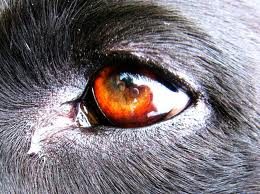
DH Garcinia You Are Worth It
Until rather recently, the 1990’s in fact, it was thought that dogs could not see color at all. After advanced research, science has come to find that your dog’s retinas actually do contain the color-sensitive components called cones.
Dogs have fewer cones than we do in our retinas so they don’t see quite as many colors as a human, and the colors they see are not as robust and vibrant, but they do see color.
The following graph (courtesy of Dr. Mark Plonsky PHD, University of Wisconson, Stevens Point) is a wonderful and easy to read example of how your dog’s vision compares to our human vision.
In looking at the chart we can see that certain colors are indistinguishable to them. Red looks brownish-grey or brownish-black, and orange, green and yellow all look yellow.
Your dog is able to see the color blue. Purple seems blue to them. Greenish blue and green seem grey.
There are also differences in how dogs see visual angles in contrast to human beings, especially the horizontal angle. People can see at an angle of approximately 180 degrees, while dogs do it at an angle of 250 Gradus.
Studies performed by Russian scientists demonstrated that dogs tend to discriminate real color rather than brightness cues. Dogs have dichromatic color vision, which means that they have two types of cones in their eyes. They match any color they register with no more than two pure spectral lights. Placental mammals are in general dichromatic. The ability to see long wavelengths necessary to distinguish red from green seems to have disappeared during evolution, probably after the Triassic period. Dichromatic vision is, though, good to distinguish colors in dim light, favoring the most nocturnal animals.
WATCH DOG VIDEO !!!
DOG’s vs HUMAN’s SMELL
This article proudly presented by
WWW.DUMMIES.COM
Scent-Detecting Cells
in People and Dog Breeds
Generally dogs have an olfactory sense approximately 100,000 to 1,000,000 times more acute than a human’s.
A Bloodhound, The dog with the highest sense of smell, has a 10,000,000 to 100,000,000 higher ability than a human.
As you have undoubtedly noticed, you and your dog have very different notions of what smells nice. To your dog, something could smell quite wonderful. But to you, in a word, it’s yucky. And vice versa.
Human’s smell
Different smells are captured by the olfactory nerve, which receptors are found within the lining of our nasal cavities. This nerve ends in the area immediately below the brain’s frontal lobes, which makes it very short. Smell may influence our behaviour, for example, a newborn baby moves his mouth towards the source of the odour of his mother’s milk, ignoring other odours. At this age our brain functions don’t differ much from the brain functions of other animals, so we may assume that smell is as important to a newborn baby as it is to a two week old puppy. However, as the infant grows his sense of smell becomes less important whereas other senses, especially sight, become more important. With dogs, things evolve quite differently.
Dog’s smell
Scent is, by far, more developed in dogs than in humans. A dog’s nostrils can be used independently from each other. Dogs have much larger olfactory bulbs and possess around 220 million scent receptors in their nose as opposed to man, who only has 5 million. Dogs have a much larger area of nasal membrane than us. Through scent, they gather a tremendous amount of information from the environment, other dogs, people, places, other animals and can learn to detect drugs such as cocaine and cannabis, detect explosives and cancerous cells. They can even detect a seizure in a human before it occurs, and detect a variety of substances at concentrations one thousand to one million times lower than we can.
DOG vs HUMAN TASTE
This article proudly presented by
WWW.PSYCHOLOGY
TODAY.COM
and
Amy Shojai
The taste system of dogs is used as a model for people because the two are so similar.
Dogs have less taste buds than humans: 1700 taste buds compared to humans that have 9000, but dogs have considerably more taste buds than cats, which average only about 470.
Young puppies sense of taste is not fully developed: puppies are born with their sense of touch, taste and smell but the taste buds do not fully mature until after a few weeks of life.
The majority of canine taste buds respond to sugar, most likely a reflection of their omnivorous evolution.
Dogs can taste water, while humans can’t: «Dogs also have taste buds that are tuned for water, which is something they share with cats and other carnivores, but is not found in humans.»
Like people, dogs are able to detect a kind of «fruity-sweet» flavor that attracts us and them to the calorie-rich ripeness of fruits and vegetables.
The second greatest number of canine taste buds respond to acidic tastes, which correspond to sour and bitter in people.
Dogs don’t appear to have a specific taste response to salt.
Odors coupled with taste tend to impact what the dog will eat.
Dogs don’t care about the color or presentation of food. (so why do some dog food companies add artificial colorings?)
Dogs are sensitive to spicy foods and all else equal, prefer less spicy to more spicy. Although omnivores, most dogs much prefer meat to other foods.
If your dog is like most, he is not the pickiest animal in the world when it comes to eating food. This is generally because a dog’s sense of taste is not as strong as that of a human being.
The Taste Buds
Dogs possess about 1,700 papillae (sensory cells) on their tongue, as opposed to a human who has around 9,000. Although dogs’ sense of taste is not close to that of a human, it is believed that dogs can differentiate between salty, sour, sweet and bitter tastes.
DOG vs HUMAN
SLEEP & DREAMS
This material proudly presented by
WWW.UMUSEKE.RW
and
Stanley Coren
Researchers have previously confirmed that canines do in fact dream. Now, they say that in fact, the dream in a similar way to humans and may even dream about their day as we do. Why should we not have a great deal in common? After all we’re 95 percent identical genetically and physically? Our brains are similar, our neurochemistry the same, and our reflexes and memory are «wired» in like manner.
Experts say the «basic maker that indicates dreaming» in humans is the motion of rapid eye movement (REM), which is when an individual’s eyes begin moving around inside their closed eye lids. And researchers confirm that dogs experience the same thing, But dogs probably escape one common human sleep problem: sleep paralysis. In this condition, consciousness returns before the brain «switches on» the muscles again, so people awaken but can’t move. Sleep paralysis is often the result of sleep deprivation, which is a rare condition for dogs. In dogs, you can monitor when they’re having a dream quite easily, for a typical medium sized dog, their breathing is fairly regular and somewhere around 20 minutes into the sleep cycle, you can see the eyes moving around the closed lids and their breathing will become irregular. And sometimes you see twitching, like the dog is trying to do something, which indicates the dog is in the dream state and it will dream for about two to three minutes.
Studies have shown that how much and how long a dog dreams depends on its size. It turns out that small dogs dream more frequently and have shorter dreams and larger dogs dream less but have longer dreams. Also, the age of a dog determines on how much time they spend in REM.
Puppies spend a much greater proportion of their sleep time than adult dogs in REM sleep, no doubt condensing huge quantities of newly acquired data. Adult dogs spend about 10 to 12 % of their sleeping time in REM sleep. In human brains, there is a mechanism that keeps our muscles from moving while we sleep. However, when the switch is weak REM sleep behavior disorder can develop and individuals will act out their dreams while they are still asleep. Dogs spend between 8 and 12 percent of their sleep time in the so called REM «mode». While comparably, humans spend between 20 and 25 percent of their sleep time in REM.
Now the difference between humans’ and canines’ sleep is that our pets’ sleep journeys are in much shorter bursts than humans, so they are less likely to get into the REM sleep stage. Since dogs don’t get as much deep sleep, they end up needing more rest in general, thus they are napping whenever there’s an opportunity.The same thing goes with dogs, if their switch doesn’t work that well you will see the dog running or snapping at something and it is possible to control these off switches in a lab because researchers have pinpointed it in the old part of the brain — the medulla oblongata. By inactivating these switches in the lab, scientists have been able to observe canines act out their dreams and decipher what they believe the dogs are dreaming of.
For human beings their dreams have to do with very common activities, things that happened during the day and it seems that for dogs basically the same thing. Dogs dream about doing doggie things. A Pointer will point at a dream bird and a Doberman Pinscher will chase a dream robber. People often wonder whether dogs that seem to be running during sleep are dreaming of catching rabbits or suchlike… from the above discussion we can safely say they are. Although no one really knows the true function of dreaming it does seem to be necessary for normal data processing and memory storage. In support of this is the fact that the same brain structures involved in memory are intimately involved in dreaming. There have been other dream studies performed on other mammals to understand if it is all mammals or just dogs that dream. We have reason to suspect that most mammals dream — cats & dogs dream, horses dream, but the nature of their dreams and cycles depend on the species.
Although dogs may dream similar to humans, the amount of sleep is very different. The average human sleeps about seven to eight hours per day, where an adult dog sleeps anywhere from 12 to 14 hours per day, about 50 percent of a dog’s day is sleep. The most important thing about the fact dogs dream is that it demonstrates that not only is the dog’s brains somewhat structurally similar to the way a human brain works, it probably functions the same way.
DOG vs OWNER:
DOGS MATCHING HUMAN PAJAMAS
This article is proudly presented by
WWW.BUSTLE.COM
and
Alyse Whitney
Now that you have made your list and checked it twice, it’s time to decide if your dog has been naughty or nice. No matter how well-behaved your pup is, they deserve the very best during the holiday season, and by that, we mean dressing them up in festive outfits and feeding them treats to thank them for putting up with your shenanigans. Here are sets of matching dog and owner pajamas to shop right now.
VISIT WWW.BUSTLE.COM
TO SEE THE FULL CHOOSE
OF DOG OWNER MATCHING PAJAMAS
DOG vs HUMAN PARKOUR
This article proudly presented by
WWW.DOGICA.COM
Jumping over stuff? check. Doing backflips? check. All this in slo-mo? check. Jumpy-the-dog is a parkour machine! Jumpy’s specialties are extreme high jumps, dancing, acting, dock diving, fly ball, frisbee, skateboarding and other amazing tricks. He has appeared in many commercials including ads during the Superbowl, and for companies such as Suzuki, American Greetings and many more.
WATCH DOG & PUPPY VIDEO !!!
DOG VS 2-YEAR-OLD KID
INTELLIGENCE
This article proudly presented by
WWW.SCIENCEDAILY.COM
and
WWW.EUREKALERT.ORG
and
Stanley Coren
The canine IQ test results are in: Even the average dog has the mental abilities of a 2-year-old child.
The finding is based on a language development test, revealing average dogs can learn 165 words, similar to a 2-year-old child, including signals and gestures, and dogs in the top 20 percent in intelligence can learn 250 words.
Although you wouldn’t want one to balance your checkbook, dogs can count. They can also understand more than 150 words and intentionally deceive other dogs and people to get treats, according to psychologist and leading canine researcher Stanley Coren, PhD, of the University of British Columbia. He spoke Saturday on the topic «How Dogs Think» at the American Psychological Association’s 117th Annual Convention.
Coren, author of more than a half-dozen popular books on dogs and dog behavior, has reviewed numerous studies to conclude that dogs have the ability to solve complex problems and are more like humans and other higher primates than previously thought.
«We all want insight into how our furry companions think, and we want to understand the silly, quirky and apparently irrational behaviors [that] Lassie or Rover demonstrate,» Coren said in an interview. «Their stunning flashes of brilliance and creativity are reminders that they may not be Einsteins but are sure closer to humans than we thought.»
According to several behavioral measures, Coren says dogs’ mental abilities are close to a human child age 2 to 2.5 years.
The intelligence of various types of dogs does differ and the dog’s breed determines some of these differences, Coren says. «There are three types of dog intelligence: instinctive (what the dog is bred to do), adaptive (how well the dog learns from its environment to solve problems) and working and obedience (the equivalent of ‘school learning’).»
Data from 208 dog obedience judges from the United States and Canada showed the differences in working and obedience intelligence of dog breeds, according to Coren. «Border collies are number one; poodles are second, followed by German shepherds. Fourth on the list is golden retrievers; fifth, dobermans; sixth, Shetland sheepdogs; and finally, Labrador retrievers,» said Coren.
As for language, the average dog can learn 165 words, including signals, and the «super dogs» (those in the top 20 percent of dog intelligence) can learn 250 words, Coren says. «The upper limit of dogs’ ability to learn language is partly based on a study of a border collie named Rico who showed knowledge of 200 spoken words and demonstrated ‘fast-track learning,’ which scientists believed to be found only in humans and language learning apes,» Coren said.
Dogs can also count up to four or five, said Coren. And they have a basic understanding of arithmetic and will notice errors in simple computations, such as 1+1=1 or 1+1=3.
Four studies he examined looked how dogs solve spatial problems by modeling human or other dogs’ behavior using a barrier type problem. Through observation, Coren said, dogs can learn the location of valued items (treats), better routes in the environment — the fastest way to a favorite chair, how to operate mechanisms (such as latches and simple machines) and the meaning of words and symbolic concepts — sometimes by simply listening to people speak and watching their actions.
During play, dogs are capable of deliberately trying to deceive other dogs and people in order to get rewards, said Coren. «And they are nearly as successful in deceiving humans as humans are in deceiving dogs.»
To find out which dogs had the top school smarts, Coren collected data from more than 200 dog obedience judges from the United States and Canada.
He found the top dogs, in order of their doggy IQ are:
Border collies
Poodles
German shepherds
Golden retrievers
Dobermans
Shetland sheepdogs
Labrador retrievers
HOW DOGS SEE COLOR
vs HOW HUMAN SEE COLOR
This article proudly presented by
WWW.DOGICA.COM
and
WWW.DOG-VISION.COM
Brightness discrimination
Brightness discrimination is the ability to differentiate between different shades. It is measured by determining the smallest discernible difference in brightness (ФR) between two stimuli compared to the absolute brightness of the brighter stimulus. The Weber fraction calculated for humans is 0.11 whereas the Weber fraction for dogs is 0.22. Thus the brightness discrimination of dogs is about 2 times worse than that of humans. This means for example that certain shades of gray that humans perceive as different are perceived as the same shade by dogs. The image below illustrates this effect by showing a set of rectangles with differing brightness, and the same set with halved relative brightness.
Human’s Vision
Dog’s Vision
Visual acuity
Visual acuity is a measure of the spatial resolution of the visual system. It is often measured in cycles per degree (CPD), which measures how much an eye can differentiate one object from another in terms of visual angles. The maximum visual acuity of the human eye is around 50 CPD and 60 CPD. The measurements of dogs’ visual acuity vary around 7.5-9 CPD and 11.6 CPD. According to these measurements dogs’ visual acuity is 4 to 8 times worse than that of humans. Choosing the amount by which the visual acuity should be decreased depends on many factors: the angle of view of the image, the resolution of the image, dpi ratio of the screen on which the image is viewed and the distance from which the screen is viewed. Under average conditions if the picture’s resolution is equal to the resolution of the screen that it is viewed on then by reducing the visual acuity by a factor of 5 is a good approximation. The image below shows a black and white grating with a bar width of 1 to 7 pixels. The effect of visual acuity reduced by a factor of 2 to 8 can be observed on the horizontal bands stacked above each other.
Original
Visual acuity reduced by a factor of 2
Visual acuity reduced by a factor of 3
Visual acuity reduced by a factor of 4
Visual acuity reduced by a factor of 5
Visual acuity reduced by a factor of 6
Visual acuity reduced by a factor of 7
Visual acuity reduced by a factor of 8
Color Perception
Dogs are not completely color blind since they have a dichromatic color perception. Unlike humans who have three different color sensitive cone cells in their retina (red, green and blue) dogs have only two (yellow and blue). This does not mean that dogs can’t see green or red objects! It only means that they can’t distinguish green, yellow or red objects based on their color. However they can still distinguish a red ball from a green one if there is a difference in the perceived brightness of the two. The color vision of dogs is similar to a person suffering from deuteranopia (red-green color blindness). Red, yellow and green are perceived as one hue. Blue and purple are perceived as a second hue. Cyan and magenta are perceived as a neutral hue (grey). The image below shows a full RGB spectrum and how the same colorline would be perceived by a dog.
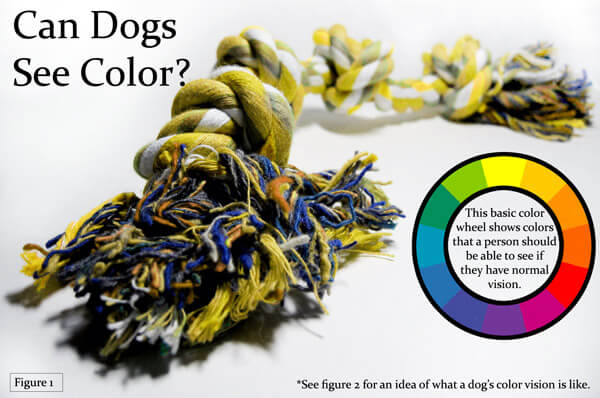
YOU MIGHT BE
INTERESTED IN
All images on DOGICA® pages used only as illustrations. Find the author of any image with TINEYE
CONTACT DOGICA®
If you are a legal rights owner and would like
to add, update or remove your material.BY USING THIS SITE
YOU ARE AGREE ON:DOGICA® respects your privacy
and does not collect any personal data cookies
and does not sell any of your private data,
but 3rd Party cookies could be collected
by various installed here widgets.
The information contained in or provided
through DOGICA® site is intended for general
consumer understanding and education only
and is not intended to be and is not a substitute
for professional advice. Use of this site and any
information contained on or provided through
this site is at your own risk and any information
contained on or provided through this site
is provided on an «as is» basis
without any
representations or warranties or pay.
® All rights reserved worldwide ©

The strongest sense for dogs is smell. In comparison to humans, dogs have almost 25 percent more scent receptors. Furthermore, the scent-detecting part of their brains is 40 larger than in human beings.
Just as many humans rely on their sense of sight to navigate, dogs rely on their sense of smell to understand and explore their surroundings. Dogs can smell scents about 100,000 times more acutely than humans, which makes them adept at many tasks, including hunting. Because of their acute and accurate sense of smell, some breeds of dog are being used for scent-based purposes in fields of medicine, such as detecting cancer. Since dogs can pick up scents that humans cannot detect, they are also valuable additions to law enforcement teams, where they help perform activities like smelling for drugs and weapons. To put dogs’ keen sense of smell into perspective, dogs could see at 3,000 miles what people can see from one-third of a mile away, according to James Walker, who was formerly the director of the Sensory Research Institute at Florida State University. In scientific terms, that means dogs can smell odors at a scale of parts per trillion.
The Science of Canine Scent
Scientists attribute dogs’ powerful sense of smell to their physical composition. Dogs can have millions of olfactory receptors in their noses. In comparison, humans have far fewer. The part of a dog’s brain that processes scent is also 40 times bigger than the same part in humans. Dogs’ noses also work differently from human noses. Humans smell and breathe through the same channel when they inhale, but the two compartments are separated in dogs. When dogs inhale, a piece of tissue in their nostrils folds over so that they inhale oxygen through one passageway and process scents in the other. In people, scents are processed in a small part of the nasal cavity. Essentially, the smells that humans pick up are transient and are released upon exhalation. In dogs, however, 12 percent of the air that is inhaled goes to the back of the nose while the rest of the air is released upon exhalation. The air with the scents filters through structures called turbinates. Turbinates filter and distinguish between odor molecules based on their size, then send electrical signals to the brain to have the scents analyzed and identified. Due to the physical structure of their noses, dogs can also determine what direction a scent is coming from in addition to identifying the scent itself.
Olfactory System
Another factor that creates dogs’ heightened sense of smell is the fact that they have a second olfactory system. In comparison, humans have just one. Dogs’ second olfactory system contains the vomeronasal organ, which is also called the Jacobson’s organ. This organ, which is located near the bottom of a dog’s nasal passage, picks up the scent of pheromones, which are scents produced in animals that indicate their readiness to mate. Although scientists have made many discoveries on dogs’ sense of smell, they continue to learn more about dogs’ impressive scent capacities. Researchers are continuing to study the extent to which dogs use their sense of smell, and they are continuing to explore ways where dogs’ scent powers can help humans make advances in the fields of science, medicine and more.
MORE FROM REFERENCE.COM
 |
||
| Прочитайте текст с пропусками, обозначенными номерами. Эти номера соответствуют заданиям А22-А28, в которых представлены возможные варианты ответов. Обведите номер выбранного вами варианта ответа. TEST 25 ( part 3) |
Bill, Bingo and Bram
Bill Smith had a A22 way with dogs, a kind of power over them. They would sit in awe of him, would listen to him and would slink away sheepishly if they had growled near him. It was a skill I had cause to be thankful for once or twice. The odd thing was that Bram, the last dog Bill owned, had died in 1925 — fifty years distant.
Bill was a retired, A23 lifelong bachelor. He lived alone in the small terraced house next door but two from us. A24 On a number of occasions, I visited Bill’s house, and it seemed that it hadn’t really changed much from the 50s. There were hints that some articles had been undisturbed apart A25 from the occasional silverfish or visiting woodlouse, since the 1930s.
He had a picture of a dog in the small converted kitchen which housed his huge solid pillowed chair, newspapers protruding from beneath its seat cushion. It was among one or two other small photos, which A26 on closer examination were photos of seventeen year old Bill.
Almost forgotten amid the clutter of pipe cleaners, matches, spills, bits of wire, tea coupons and old Yale keys was a very small dark photo of a black mongrel dog, lying in a backyard. A white stripe down its nose and in between its ears was one of the few ways it was distinguishable from the background gloom. This was Bram, Bill told me, his dog.
Through the years, my family had a. total of four dogs. We actually had no photographs whatever of the first two. Dogs had only played walk-on parts in my family. As far as I was A27 concerned, the all defining object in a house was a television. There was one in Bill’s house. It stood like a lonely, redundant sentinel in a dank corner of his empty living room and seemed cold and unused. When I asked Bill what he watched, he answered that the set didn’t work, it needed a new plug, and he hadn’t A28 bothered to get it fixed. And what’s more, he didn’t miss it. To me this was unimaginable — how could a person have a TV and not use it?
|
A22 |
1) way Have a way with smb/smth — иметь подход к кому-либо/чему-либо; устоявшееся выражение |
2) control |
3) method |
4) skill |
|
A23 |
1) long-lasting продолжительный |
2) longterm долгосрочный |
3) long-life долговечный |
4) lifelong пожизненный |
|
A24 |
1) On On a number of occasions — Врядеслучаев; устоявшеесявыражение |
2) At |
3) With |
4) For |
|
A25 |
1) for |
2) with |
3) from Apart from — порознь от; только from подходит здесь по смыслу и грамматически |
4) of |
|
A26 |
1) in |
2) on On closer examination — при более тщательном рассмотрении; другие три предлога не могут быть здесь употреблены ни по смыслу ни грамматически |
3) at |
4) by |
|
A27 |
1) regarded |
2) concerned As far as I (smb) am concerned — насколько мне известно; устоявшееся выражение |
3) told |
4) asked |
|
A28 |
1) suggested Suggest — предлагать |
2) succeeded Succeed — преуспевать |
3) bothered Bother — хлопотать, беспокоиться |
4) minded Mind — возражать |
Вы услышите 6 высказываний. Установите соответствие между высказываниями каждого говорящего A–F и утверждениями, данными в списке 1–7. Используйте каждое утверждение, обозначенное соответствующей цифрой, только один раз. В задании есть одно лишнее утверждение. Вы услышите запись дважды.
Воспользуйтесь плеером, чтобы прослушать запись.
1. Dogs may turn out to be better friends than people.
2. People love dogs because they look pretty.
3. Dogs don’t love people as much as you may think.
4. It’s not a good idea to have a dog as a pet.
5. Dogs are good pets because they are clever.
6. There are many advantages of having a dog.
7. People love dogs because dogs are faithful.
| Говорящий | A | B | C | D | E | F |
| Утверждение |
Расшифровка записи
Speaker A. I think people love dogs for many different reasons, but the main one, In my opinion, is that people believe their dogs love them. Unlike cats, dogs seem to be very attached to their owners. Of course, there is some question as to the degree to which dogs actually love their humans or merely are responding to them as effect the dominant member of the pack to which the dog belongs. But in either case, there is a feeling of loyalty.
Speaker B. I have a dog and I’m happy about that. I think dogs are the best pets in the world. To start with, they are loyal and friendly. Dogs take a great interest in the people who own them as pets. Moreover, they seem to protect their owners interests to the extent that they are capable of by driving off an attacker, for example, or waking people up if there is a fire in the house, and so on. There are many more pluses. Dogs are just perfect.
Speaker C. As far as I know, some famous person said something like «people like dogs more than people». Well, sometimes dogs really are better companions than people. Dogs have a certain mental simplicity. For example, they don’t lie to their owners and their motives are relatively simple and understandable, and so they are easier to deal with than human beings are. Dogs do not maneuver for status because they just accept that humans are in charge.
Speaker D. I have a dog and most of my friends have dogs too. When we discuss our pets, we understand that dogs are very clever. Well, of course they are less clever than their owners, so we take care of them, much as we would of our own children. Still, in my opinion, dogs are relatively intelligent in comparison to many other animals, such as tropical fish, frogs, lizards and so on. Sometimes, I think my dog understands every word I say. Isn’t it great?
Speaker E. I don’t have a dog because I’m allergic to fur, but I love looking at them. My favourite films are the ones about dogs. They are such beautiful creatures. They are warm, furry and cute, they have soulful eyes, and in some ways remind people of children. I know lots of people who have photos of dogs as their screensavers, or just like cups or clothes with pictures of charming puppies. Your heart is literally melting when you see dogs or small puppies.
Speaker F. I personally think that dogs are not as charming as one might think they are. In my opinion, every dog is dangerous, even those teacup dogs, which girls like to carry in their handbags and boast of them like of fashionable accessories, even though small creatures can bite you and give you serious injuries, so you must be careful if you see a dog. There are many stories in the news about dogs being aggressive towards people for no reason.
Спрятать пояснение
Пояснение.
A — 7: …but in either case, there is a feeling of loyalty.
B — 6: …there are many more pluses. Dogs are just perfect.
C — 1: …sometimes they really are better companions than people.
D — 5: Still, in my opinioin, dogs are relatively intelligent.
E — 2: I don’t have a dog, <…> but I love looking at them.
F — 4: …dogs are not as pretty and charming as one might think they are. <…> In my opinion, every dog is dangerous. Речь не идет об отношении собак к людям, но скорее о проблемах в сосуществовании с ними, поэтому вариант 3 не подходит.
Ответ: 761524.
Источник: ЕГЭ по английскому языку 02.04.2018. Досрочная волна
Задание № 14336
1. Dear to heart
2. Reliable assistant
3. Profitable business
4. Close friends origin
5. Abiliity to treat
6. Reasons for friendship
7. Useful abilities
8. Rescue workers
A. The partnership between humans and dogs began perhaps 14,000 years ago. Our first interactions may have occurred when wild dogs were attracted to human garbage, or humans may have acquired the puppies of wild dogs and trained them to be obedient pets. By means of the careful selection of dog parents, humans have been able to create a wonderful variety of dogs with plenty of talents and many different looks.
B. When did this remarkable partnership start? We know now that the wolf began working with people in the distant past. Over the years, the wolf became the talented domestic pet we know as the dog. There are plenty of theories, but the real reason why humans acquired dogs is still unknown. It might be a hunting partnership, companionship or a type of friendship. For 14000 years the dog has played an important role in human societies. It’s a partnership that’s likely to continue for many years to come.
C. Dogs are often known as man’s best friend. Many societies have them as pets or rely on them to perform a variety of tasks. The story of man and dog is a complex story that goes back thousands of years and will almost certainly go on for thousands more. Dogs interact with humans in a variety of ways. Dogs such as border collies are trained to herd livestock such as sheep. Huskies pull us through some of the coldest and the most dangerous places on Earth.
D. Dogs were probably first attracted to humans by the smell of our garbage. Nowadays, the governments of many countries have a use for those powerful noses that is beneficial to all who fly in airplanes. There are special trains for dogs to smell bombs on planes and in passengers’ luggage. For example, beagles perform their duties at airports, where their sense of smell helps them to find drugs and other illegal items in people’s luggage.
E. Dogs have a sense of smell 1,000 times more powerful than our own. This means they can search for people who are lost under deep snow, or under the debris of a collapsed building or deep in forest. You can find dogs in rescue services of many countries. A lot of lives were saved by dogs after the earthquakes and explosions in different parts of the world.
F. Special trained dogs help to ease the lives of thousands disabled people. They lead the blind people, for example. At the National Institutes of Health the dogs visit children who are fighting deadly diseases. They brighten patients’ days with love and give children a chance to exercise and help them to stay strong during their long hospitalization.
G. Whether as workers or objects of affection, dogs have certainly proven themselves to be beneficial to humans in many ways. For many, the dog is also an obedient companion and friend. In some families dogs are treated like a child. People carefully prepare special meal; give them the healthiest, most wonderful life possible for as long as possible. For single people, dogs are the best way to escape loneliness. At the same time, their special place as ‘man’s best friend’ has allowed dogs to survive in a human world.
[topic]
[topic]
Показать ответ
Комментарий:
A — 4 »The partnership between humans and dogs began perhaps 14,000 years ago.»
B — 6 »There are plenty of theories, but the real reason why humans acquired dogs is still unknown. »
C — 2 »Dogs are often known as man’s best friend.»
D — 8 »There are special trains for dogs to smell bombs on planes and in passengers’ luggage».
E — 7 »A lot of lives were saved by dogs after the earthquakes and explosions in different parts of the world.»
F — 5 »They lead the blind people, for example.»
G — 1 »In some families dogs are treated like a child».
Ответ: 4628751
Нашли ошибку в задании? Выделите фрагмент и нажмите Ctrl + Enter.
What is a dog’s strongest sense? What is their weakest? Is there some other spidey sense that I didn’t know about? These were the questions I found myself asking in my head.
Without question, Smell is a dog’s strongest scent and is critical to their understanding of the world around them. Dog’s have up to 300 million olfactory receptors compared to a human’s five million. Additionally, dogs can continuously process scent while breathing in and out.
Even with the sense of smell taking center stage, a dog’s abilities within their other senses may not be what you think.
I was inspired to dig deeper into this one random evening. We snuggled in as a family to watch a show on tv and our dog Juno began watching the screen. I’ve had other dogs that look at the television, so that wasn’t new to me. Our Great Pyrenees would even bark at certain animals, so he was definitely identifying other shapes. God forbid a horse, dog, or deer walk across the screen. You’d swear we were being invaded by the way he reacted.
However, watching Juno interested in the TV caused me to pause and ponder about dog’s senses and how they function compared to ours. Just how do they process the world around them?
In this article I will go through each of the following:
- How strong is a dog’s sense of touch?
- How strong is a dog’s sense of taste?
- How strong is a dog’s sense of sight?
- How strong is a dog’s sense of hearing
- How strong is a dog’s sense of smell?
- Do dogs have any sixth sense?
How strong is a dog’s sense of touch?
Just as we have nerves all over our body that sense all kinds of different contact information, so do dogs – just a little bit different. In a human, our greatest sense of touch is concentrated in our index finger. We can tell texture better with our index finger than any other part of our body. Likewise, our feet are sensitive to pressure. If you have kids, you know just how bad it hurts to step on a Lego or a Barbie shoe. For dogs, their sensory outfitting is just a bit different.
Whiskers, which are found on the side of their muzzle, below their jaw, and above their eyes help a dog sense objects and help them navigate. I always thought it was kind of funny that dogs have whiskers. Most of the time I don’t really notice them, but if you look closely, it looks like they have a mustache and out of control eyebrows. I always get a chuckle out of that.
In an article, famous dog trainer, Victoria Stilwell, shared that a dog’s whiskers (called vibrissae) are so sensitive that a dog can sense airflow changes as they approach an object. This is one of the reasons it is crucial to get a puppy familiar with an approaching hand from a human.
Additionally, dogs have many nerve endings all down their spine and at the base of their tail. This makes them very sensitive to touch in those areas. This is why dogs go nuts when you scratch their lower back. Especially when they start kicking/scratching with their back leg (a friend of my mine refers to that as “starting their motorcycle”). It seems as though touch may not be a dog’s strongest sense.
Just be careful though. Not all dogs like to be touched that way or are used to being touched that way. Make sure you are familiar with any dog before touching them and always ask another dog’s owner if it is okay to pet them.
How strong is a dog’s sense of taste?
You may be surprised to find out that a dog’s ability to taste is not all that great. In fact, their taste is probably their weakest sense. According to PetMD, humans have six times the amount of taste buds that dogs do.
While dogs can taste bitter, salty, sweet and sour, it turns out that smell plays a bigger part in what they decide to eat, which is not too surprising. However, this does explain why dogs eat some of the gross things they do. Like how they can dig through the litter box and munch on those “kitty cookies” (insert dry heaving noise).
I expected to find out more on this subject, but it turns out this sense in dogs is just rather underwhelming.
How strong is a dog’s sense of sight?
This question is probably better split into 3 sub questions:
- How good is their eyesight?
- Can dogs see colors?
- How well do dogs see at night?
How good is a dog’s eyesight?
A post on Sciencedaily.com quotes Paul Miller, Professor of Comparative Ophthalmology at University of Wisconsin-Madison as saying that a dog’s ability to see in dim light makes their eyesight roughly 20:80 as opposed to human vision of 20:20. Additionally, The Pets Doc Veterinary Clinic shares that a dog’s eyesight is roughly 20:75. That means that a dog sees details at a distance of 20 feet that humans can see at 75-80 feet.
Additionally, in the Documentary, A Dog’s Life, Dr. Krista MacPherson, of Western University of London, Ontario, discusses an interesting indicator in specific dogs and their ability to see distances. Basically, the longer a dogs skull, the more that the cells that transmit signals to the brain are arraigned in a horizontal streak.
The longer the skull, the more pronounced the streak (long skulls meaning breeds like a Greyhounds). What that means is that the longer streak of cells equals better vision at a distance. The shorter the skull – the shorter the streak, which results in better short vision.
Dogs see an object twice as far away as they can when it is stationary. This makes sense from a tracking prey standpoint.
The Pet Docs Veterinary Clinic also goes into how dogs eyes are set in their head. In humans our eyes are set straight forward. Dog’s eyes, depending on the breed, are typically set at a 20 degree angle. This allows the dogs to have better peripheral vision, but impacts their binocular vision (fancy word for overlapping fields of vision), which aids in depth perception. Dog’s depth perception is best when looking straight forward.
What’s more, dogs can see an object moving twice as far away as they can when that same object is stationary. This makes sense from a tracking prey standpoint.
Can dogs see colors?
The short answer, yes. The notion that dogs see the world in black and white is simply not true. That seems to be just a myth that keeps hanging around. According to an article on PetMD, dogs can absolutely see color. It’s just not the same spectrum of color as humans see. This is due to the fact that a human’s retina (photoreceptor) has red, blue, and green cones. A dog’s retina only has two cones, “a blue cone and a visual pigment that falls somewhere between a human red and green”. A dog’s color vision is most comparable to a person with red-green color blindness.
How well do dogs see at night?
AKC.org has a very in-depth post on dog’s vision, but one interesting portion refers to a dog’s ability to see at night or in the dark. There are a couple different things that allow a dog to navigate through the darkness.
First, their pupils are larger than a human’s, which allows more light to enter the retina. In turn, dog’s retinas have more rods than humans. Rods are the structure that help the eyes see in low light.
Secondly, they have a higher Flicker Fusion Frequency (FFF). Basically, the FFF is the frequency that light no longer flickers, but appears as a constant glow. Basically, in video terms, this allows them to see more frames per second than our eyes. A really good way to explain this is using a television. To us humans, images on a television screen appear smooth and seamless. Since dogs see more frames per second, the same television image would appear to flicker or skip.
Thirdly, the ace in the hole, is the part of the dog’s eye called the tapetum (pronounced tah-pee-dum). The tapetum reflects back light entering the eye, making the most of available light. This is somewhat similar to how night vision goggles work for humans. This is also why a dog’s eyes appear to glow at night. What you are seeing is the light reflecting off the tapetum. I always wondered how that happened.
How strong is a dog’s sense of hearing?
We are getting to what are arguably the two strongest senses that dog’s possess, hearing and smell.
First up is hearing. Dog’s have ridiculously better ears. In fact, they can hear sounds four times farther away than humans.
Why is this though? It turns out that dogs can hear higher frequency sounds, which allows them to distinguish a greater range of sounds and they can pinpoint the exact location of the sound.
Okay great, but how the heck can they do all that?
Sound is simply vibrations in the air and the ability to hear these vibrations differs between us and dogs. I’m going to nerd out here a little and explain that it’s important to understand that we are talking frequency (measured in Hertz or Hz) not loudness (measured in decibels or dB). For instance, a jet engine at take off is 140 dB, which is loud, but is only between 400 and 1300 Hz). That’s lower than the frequency of conversational human speech. Humans, on average, can’t really hear anything above 20,000 vibrations per second (Hz). Dogs on the other hand, can hear sounds up to 50,000 vibrations per second (Hz). A dog whistle is around 23,000 Hz.
Dog’s ears are also set up to process sound better than our ears. Dog’s ears are controlled by 18 muscles, while we humans only have six to operate ours. This allows dogs to move their ears around like little furry satellites to pinpoint the sound. Additionally, ear shapes in different breeds can amplify the sounds. Think about the difference of a pointy-eared German Shepherd compared to a big old, floppy-eared, Basset Hound.
Furthermore, dogs have longer ear canals than humans and dogs can use their ear canals to triangulate on a sound for improved accuracy and distance. Pretty darn cool!
How strong is a dog’s sense of smell?
The sense of smell in dogs is by far their most impressive ability and is certainly a dog’s strongest sense. Smell is also arguably the sense they rely on the most. This is the reason that humans utilize dogs to detect bombs and drugs, as well as, to track prey and search for other humans.
It’s also their social handshake. I’m always thankful God did not make butt sniffing a keystone of human social interaction. I’m happy with handshakes and high fives.
Just how good are dogs at smelling? It turns out that their ability to smell can be as much as 100,000 times greater than ours. Dogs can detect odors in parts-per-trillion. In simple terms that’s like being able to smell a treat hidden in a couple million boxes. That’s absolutely crazy!
There are a few different reasons dogs are able to do this:
Receptors
Dogs have about 300 million olfactory receptors in their noses, while we have a measly six million in ours. Also, the part of a dog’s brain that processes smells is proportionately 40 times greater than a humans.
Inhaling
When dogs inhale, their noses split the air into two different paths. One path takes a portion (about 10% or so) of the air to process the scent, while the other path leads the rest of the air to the lungs for breathing.
Exhaling
When dogs exhale, the air travels out the slits of their nose, causing air to swirl and help bring more air in for processing scent. This also allows dogs to process scent continuously – somewhat like circular breathing.
Jacobson’s organ
Dog’s have a second olfactory system that we just don’t have, the Jacobson’s organ. The Jacobson’s organ is in the bottom of a dog’s nasal passage. It’s function is to pick up pheromones in the air. The pheromones are also analyzed separately from odors because the Jacobson’s organ has its own nerves and a part of the brain dedicated solely to it’s inputs.
If you want to read a more indepth academic article on dogs and how they smell, check out The Fluid Dynamics of Canine Olfaction by Craven, Patterson, and Settles of Penn State University.
Do dogs have a sixth sense?
I know the five senses are a given, but we’ve all heard stories of dogs doing amazing things. A lot of these stories make us believe there is something else there that allows dogs to make sense of situations or sense things we can’t seem to. Turns out it isn’t just their better hearing or smell.
Magnetism
I stumbled across an article on PsychologyToday by Dr. Stanley Coren. Dr. Coren discusses a study by Sabine Martini of the University of Duisburg-Essen in Essen, Germany. This study showed that dogs can sense magnetism. Dr. Coren likened this to how migratory birds sense Earth’s magnetic poles.
In this study by Savine Martini, researchers placed magnets in dark glass jars with lids. The researchers did some clicker training to let the dogs know that they were to choose the magnet.
Results? It turns out that 13 of 16 dogs detected the magnet. This suggests that there is something that is allowing dogs to sense and make decisions based on the information they detect with magnetism.
Ability to read Human Emotion
Reuters published an interesting article regarding a joint study between the University of Lincoln, UK and University of Sao Paulo, Brazil. The researchers took 17 untrained dogs and showed them positive or negative emotional displays from both humans and dogs. When the dogs heard positive sounds the dogs looked longer at positive faces (both human and dog). When the dogs heard negative sounds they paid more attention to angry faces. This observation leads to the idea that dogs are able to connect positive or negative sounds to positive or negative expressions.
Additionally, there is a whole other awesome topic about how dogs read humans vs. other animals, but I will cover that in another article.
Conclusion
Dog’s sense of smell is by far the most impressive. If you take the time to think about it, scent tracking dogs do some pretty crazy stuff. They are able to be given one scent, analyze it, then track it over miles. Sometimes they are just relying on fragments of an odor, possibly days old. Then they are also separating that odor in their mind from other odors and determining the direction to keep tracking. That is simply amazing to me!
So next time you are taking your pooch for a walk, remember they are probably getting more from sniffing the air and ground than all of their other senses combined.
Единый государственный экзамен, 2016 г. АНГЛИЙСКИЙ ЯЗЫК
Единый государственный экзамен по АНГЛИЙСКОМУ ЯЗЫКУ
Инструкция по выполнению работы
Экзаменационная работа по английскому языку состоит из четырёх разделов (аудирование, чтение, грамматика и лексика, письмо), включающих в себя 40 заданий.
На выполнение экзаменационной работы отводится 3 часа (180
минут).
Ответы к заданиям 3–9, 12–18 и 32–38 записываются по приведённому ниже образцу в виде одной цифры, котораясоответствует номеру правильного ответа. Эту цифру запишите в поле ответа в тексте работы, а затем перенесите в бланк ответов № 1.
Ответы к заданиям 1, 2, 10, 11 записываются по приведённому ниже образцу в виде последовательности цифр. Эту последовательность цифр запишите в поле ответа в тексте работы, а затем перенесите в бланк ответов № 1.
Ответы к заданиям 19–31 записываются по приведённому ниже образцу в виде слова (нескольких слов). Ответ запишите в поле ответа в тексте работы, а затем перенесите в бланк ответов № 1.
Раздел 4 («Письмо») состоит из 2 заданий (39 и 40) и представляет собой небольшую письменную работу (написание личного письма и письменного высказывания с элементами рассуждения ). В бланке ответов № 2 укажите номер задания и запишите ответ к нему.
Все бланки ЕГЭ заполняются яркими чёрными чернилами. Допускается использование гелевой, или капиллярной, или перьевой ручек. При выполнении заданий можно пользоваться черновиком.
Записи в черновике не учитываются при оценивании работы. Баллы, полученные Вами за выполненные задания,
суммируются. Постарайтесь выполнить как можно больше заданий и набрать наибольшее количество баллов.
Желаем успеха!
|
Тренировочный вариант №4 |
1 / 8 |
|||
Раздел 1. Аудирование
Вы услышите 6 высказываний. Установите соответствие между
высказываниями каждого говорящего A–F и утверждениями, данными в списке 1–7. Используйте каждое утверждение, обозначенное соответствующей цифрой, только один раз. В задании есть одно лишнее утверждение. Вы услышите запись дважды. Занесите свои ответы в таблицу.
1. Many people understand the importance of healthy eating.
2. Some children know very little about food and cooking.
3. Good food is very expensive nowadays.
4. You can improve your eating habits by growing food yourself.
5. Local food is tastier and better for your health.
6. People have lost the tradition of family meals.
7. For many people the quality of food is less important than other things.
Ответ:
|
Говорящий |
A |
B |
C |
D |
E |
F |
|
Утверждение |
Вы услышите диалог. Определите, какие из приведённых утверждений А–G
соответствуют содержанию текста (1 – True), какие не соответствуют (2 – False) и о чём в тексте не сказано, то есть на основании текста нельзя дать ни положительного, ни отрицательного ответа (3 – Not stated). Занесите номер выбранного Вами варианта ответа в таблицу. Вы услышите запись дважды.
A. John is going to send a Valentine to one person.
B. Math teachers receive the most Valentines.
C. People generally buy more Christmas cards than Valentines.
D. There is a survey about selling Valentines.
E. The most typical Valentine’s Day presents are flowers and sweets.
F. Mary knows about some Valentine’s Day traditions in a foreign country.
G. John considers colours when buying a bouquet.
Ответ:
|
Утверждение |
A |
B |
C |
D |
E |
F |
G |
|
Соответствие диалогу |
Вариант ЕГЭ №4 2016 г. АНГЛИЙСКИЙ ЯЗЫК, 11 класс. (2016)
Вы услышите интервью. В заданиях 3–9 запишите в поле ответа цифру 1, 2 или 3, соответствующую выбранному Вами варианту ответа. Вы услышите запись дважды.
3 In his course Steven Roberts uses original films with
- original subtitles.
- no subtitles.
- english subtitles.
Ответ:
4 What language input does Steven’s course comprise?
- slang free language.
- modern language.
- traditional word lists.
Ответ:
5 Steven designed his film-based course because
- people have problems watching film abroad.
- films reflect real life communication.
- watching films is the most popular hobby.
Ответ:
6 What activity does Steven NOT mention as a part of his course?
- grammar exercises.
- audio tasks.
- essay writing.
Ответ:
Вариант ЕГЭ 2016 г. АНГЛИЙСКИЙ ЯЗЫК, 11 класс. (2016) 2
- What kind of learners does Steven aim his course at?
- any level.
- top level.
- lower level.
Ответ:
- How can one get Steven’s book on his film-based course?
- order by post.
- download for free from the Internet.
- buy in a book shop.
Ответ:
- One of the advantages of a movie club, according to Steven, is that it
- helps one find new friends.
- gives a chance to watch new films.
- is not expensive.
Ответ:
По окончании выполнения заданий 1–9 не забудьте перенести свои ответы
в БЛАНК ОТВЕТОВ № 1! Запишите ответ справа от номера
соответствующего задания, начиная с первой клеточки. При переносе ответов в
заданиях 1 и 2 цифры записываются без пробелов, запятых и других
дополнительных символов. Каждую цифру пишите в отдельной клеточке
в соответствии с приведёнными в бланке образцами.
Вариант ЕГЭ №4 2016 г. АНГЛИЙСКИЙ ЯЗЫК, 11 класс. (2016) 3/8
Установите соответствие между текстами A–G и заголовками 1–8. Занесите свои ответы в таблицу. Используйте каждую цифру только один раз. В задании один заголовок лишний.
|
|
- Vampires are said to be humans who once cheated death by drinking
the blood of others and must therefore continue to drink the blood
of the living in order to remain immortal. Consequently, they are believed to have become creatures with supernatural powers, such as amazing strength and the ability to hypnotize potential victims. In some
fictionalized accounts of vampires, these creatures can also fly, some-
times after turning into a bat.
- Though the first cinema films had no sound track, the early picture palaces were not silent. To blot out noise from the projector and the audience and also to create atmosphere, a piano, organ or band, sometimes with many instrumentalists, nearly always provided music. The music was often extemporized or adapted from a stock repertory, but was sometimes composed specially for the film. Increasingly ingenious attempts to replace live players by mechanically reproduced sound led in 1928 to the first talkies.
- Vampires and zombies have been used in many ways throughout history to represent fears and anxieties about death; particularly the disruption of a peaceful transition into some sort of afterlife. However, these undead creatures are also used to reveal human fear of fates worse than death. Common elements include returning from the dead, biting or bodily fluid exchange as a means of infecting, and significant violence to permanently kill the creature.
- You eat when you get hungry. It seems so simple. You take a bite out of a sandwich. That bite then begins an amazing journey. That bite goes through every part of your digestive system. Your body digests, or breaks down, the food into smaller and smaller parts. At the end your blood carries chemicals from your sandwich to every part of your body.
- Media literacy is the process of critically analyzing media messages and the
ability to compose messages using media tools and technologies. Media literacy is defined as an extended conceptualization of literacy, the ability to access, analyze, evaluate, and communicate messages in a wide variety of forms. The term access generally means the ability to locate information or find and comprehend messages.
- The study of birds has a substantial hobbyist following, mainly because of the aesthetic appeal of the brightly coloured plumage that many birds exhibit and the fascination of their ability to fly. The observation of patterns of bird migration had a particular scientific significance in ancient times by assisting agricultural calculations; the arrival of a particular species in a locality was often employed as a signal when calendars were still primitive.
- Although we still have many unanswered questions about why we spend one third of our lives sleeping, we do know that lack of sleep can have many negative effects. In a genetic condition known as fatal familial insomnia, middle-aged people gradually lose the ability to sleep. As the name of the
disorder implies, the result of this sleep loss is eventual death. The exact cause of death is unknown, although the disorder is associated with damage to the thalamus.
Ответ:
|
A |
B |
C |
D |
E |
F |
G |
Вариант ЕГЭ №4 2016 г. АНГЛИЙСКИЙ ЯЗЫК, 11 класс. (2016)
Прочитайте текст и заполните пропуски A–F частями предложений, обозначенными цифрами 1–7. Одна из частей в списке 1–7 лишняя. Занесите цифры, обозначающие соответствующие части предложений, в таблицу.
The Roman Empire
The Roman Empire had a huge task in front of them while it was first starting out and while it was becoming A The main problem that the book «Discovering the Global Past» points out is
B _ itself growing a little too quickly. The Roman Empire started out very small on the Tiber River and grew abruptly without warning. Before they knew it, they were not a small power C _ with a great number of cultures intertwined within the Roman Empire.
They were now spread over an immense portion of land with much power coming with it. The question now is D all of this power and continue to dominate the world without any blueprints to help them out from previous dynasties E _ . We now have some evidence to help understand this and to show how it did happen. So courtesy of the «Discovering the Global Past» they have seven pieces of evidence
F the challenge of taking on the mastery of world power.
- how the Roman Empire found
- because it had never been done before
- but now one with a great number of people
- that will help prove that the Roman Empire could handle
- to take that role of leadership in the Empire
- how they are going to be able to handle
- a dominant dynasty in the early civilizations
|
A |
B |
C |
D |
E |
F |
4
Microburst
There are many safety factors that pilots have to take into consideration while completing a safe flight. Everything has to be taken into mind when planning a flight. From weight and balance to preflight inspections. One safety factor that is impossible to have control over is weather. There are many aspects of weather that can affect an aircraft, in this report I will specifically talk about the microburst.
Microbursts are powerful downdrafts associated with thunderstorms. We have been able to identify microbursts through many studies regarding wind shear and meteorology research. Wind shear is basically a rapid change in wind velocity and direction that happen because of many factors in weather conditions. Such conditions include frontal activity, temperature inversions, and thunderstorms amongst other factors.
Wherever there is convective activity such as thunderstorms there is the possibility of a microburst. Microbursts are associated with downdrafts. These are typically only a few hundred to a few thousand feet across. When the downdraft reaches the ground, it spreads out horizontally and may form a vortex around the downdraft.
Unfortunately microbursts can occur without the presence of precipitation being present making the detection of this almost impossible. This is one of the major reasons why there have been so many incidents involving aircrafts and microbursts. There are now many different kinds of service stations that help identify microbursts though. The aircraft accident rate due to microbursts in association with classic severe local storms is practically nonexistent for commercial aviation, since the system is apparently well designed to protect passenger jets against these.
Although most accidents are found to be pilot error due to hazardous attitudes such as ‘macho’ there aren’t many training emphasis on fighting a microburst because most of the time the microburst wins.
From the most famous cases of aircraft accidents associated with microbursts is Delta 191. This flight left from Fort Lauderdale Hollywood International to Los Angeles International Airport in California through Dallas International Airport. The crash happened while the plane was on approach into Dallas. At 1500 the first officer reported seeing lightning ahead yet they continued with the approach. At 800 feet the aircraft accelerated so the crew member reduced power to compensate, then
Вариант ЕГЭ №4 2016 г. АНГЛИЙСКИЙ ЯЗЫК, 11 класс. (2016)
came the adverse effect of the microburst slowing the aircraft down. To compensate for this they added power but the downbursts were to strong and Delta 191 ended up
What of the following is not dependent on pilots?
- weight.
- weather.
- balance.
- preflight inspections.
Ответ:
Which of the following statements is TRUE, according to the text?
- Microbursts are not as terrible as thunderstorms.
- Thunderstorms can cause a wind shear.
- There are a few weather conditions that don’t effect on variation of wind velocity.
- It’s impossible to forecast microbursts.
Ответ:
There were many aircrafts because …
- pilots are not careful.
- there are bad service stations that help identify microbursts
- it’s not easy to identify microbursts by precipitations .
- there aren’t many training emphasis on fighting a microburst.
Ответ:
Where, according to the author, the flight of Delta 191 should be finished?
- Fort Lauderdale.
- California
- Dallas
- Los Angeles
Ответ:
Вариант ЕГЭ №4 2016 г. АНГЛИЙСКИЙ ЯЗЫК, 11 класс. (2016) 5
Delta 191 couldn’t escape crashing because…
- the crew members notices lightening very late.
- pilots were not experienced enough.
- the crew member reduced power.
- thunderstorm was very impressive.
Ответ:
The attitude of the author towards “macho” is…
- negative
- respectful
- optimistic
- indifferent
Ответ:
Why doesn’t the author emphasis seriousness of aircrafts caused by pilot error?
- he likes hazardous attitudes such as”macho”.
- there were not many aircrafts caused by pilot’s inattentiveness.
- there is something out of our control.
- all pilots trained to be able to fight a microburst.
Ответ:
По окончании выполнения заданий 10–18 не забудьте перенести свои ответы в БЛАНК ОТВЕТОВ № 1! Запишите ответ справа от номера соответствующего задания, начиная с первой клеточки. При переносе ответов в заданиях 10 и 11 цифры записываются без пробелов, запятых и других дополнительных символов. Каждую цифру пишите в отдельной клеточке в соответствии с приведёнными в бланке образцами.
Вариант ЕГЭ №4 2016 г. АНГЛИЙСКИЙ ЯЗЫК, 11 класс. (2016)
Раздел 3. Грамматика и лексика
Прочитайте приведённые ниже тексты. Преобразуйте, если необходимо, слова, напечатанные заглавными буквами в конце строк, обозначенных номерами 19–25, так, чтобы они грамматически соответствовали содержанию текстов. Заполните пропуски полученными словами. Каждый пропуск соответствует отдельному заданию из группы 19–25.
Finding Forester
Many people go through life without EXPERIENCE _______ a loss of someone close to them early on in their life.
A father figure in one’s development is essential to become REFLECT unique. Jamal Wallace in “Finding Forester” did not have a
Father figure when he grew up; this________________on
him negatively.
Jamal required William Forester as a father figure to advance
in his writing. With Forester ________________ a steady BE
pillar for Jamal to stand on, his writing dreams could now
become a reality.
Thomas Aquinas
Thomas Aquinas (1225-1274) lived during the critical period of BEAR
Western culture. He__________ into the arrival of Aristotelian
corpus, which was the reopening of the question between the
relationship of faith and reason.
6
To this point, there 23__________to be an apparent BELIEVE distinction between the two.
Thomas Aquinas is the 24________classical MORE
Component of natural theology ( Thomas Aquinas), and also
The father of the “Thomistic School of Philosophy”.
This school was the_25______________________________ PRIME
Philosophical approach of the Roman Catholic Church
( Thomas Aquinas).
A deal of paint I have quite a lot of talent – I’m not sure yet how much —
and a 26______________complete mastery of most of the FAIR
technical requirements;
that is, I am an instinctive 27_______________and my COLOUR
composition is interesting.
I have my difficulties, but who does not? I get on well with
people, and I ought to be quite as 28_______________as a SUCCESS
dozen other painters – but I am not.
I never have been since my very first one-man show, when I
was discovered by the 29_________, taken up – and CRITICISM
very quickly put down again – and sold out.
Sold out is the just phrase. I was twenty-two after that
Вариант ЕГЭ №4 2016 г. АНГЛИЙСКИЙ ЯЗЫК, 11 класс. (2016)
show. Apart from quite a lot of money, the way I understand it, I had one oil painting left, three drawings, and very little common sense, my most 30______________ remaining possession. VALUE
The common sense prevented me from believing what the EXACT critics said and considering myself a genius who would you always be able to live by painting 31________________what he wanted to paint when he wanted to paint it.
Прочитайте текст с пропусками, обозначенными номерами 32–38. Эти номера соответствуют заданиям 32–38, в которых представлены возможные варианты ответов. Запишите в поле ответа цифру 1, 2, 3 или 4, соответствующую выбранному Вами варианту ответа.
How the USA Constitution Began
The USA Constitution was written by fifty-five men who met 32___ Philadelphia Convention in 1787. In four months they wrote the Constitution which has lasted over 200 years!
Many of these men had been leaders during the American Revolution. Most were leaders in their states. Some were rich, but most were not. There were no native Americans 33______ the delegates. There were no women. There were no black men or slaves. Poor farmers were not present 34_____. George Washington, James Madison, and Benjamin Franklin were the three important delegates to the Convention. George Washington 35____ from Virginia. Then he had retired to his plantation and would have liked to 36____ there. However, his friends 37____him he should attend the convention.
They said his support was necessary to get a new constitution accepted by the people. 38____ Washington thought a stronger national government was necessary, he came to Philadelphia.
- at 2) in 3) with 4) on
Ответ:
7
1) from 2) among 3) of 4) between
Ответ:
- neither 2) also 3) either 4) yet
Ответ:
- ran 2) arrived 3) went 4) came
Ответ:
- remain 2) continue 3) stay 4) keep
Ответ:
- said 2) told 3) talked 4) spoke
Ответ:
- while 2) then 3) since 4) as
Ответ:
По окончании выполнения заданий 19–38 не забудьте перенести свои ответы в БЛАНК ОТВЕТОВ № 1! Запишите ответ справа от номера соответствующего задания, начиная с первой клеточки. При переносе ответов в заданиях 19–31 буквы записываются без пробелов, запятых и других дополнительных символов. Каждую букву или цифру пишите в отдельной клеточке в соответствии с приведёнными в бланке образцами.
Вариант ЕГЭ №4 2016 г. АНГЛИЙСКИЙ ЯЗЫК, 11 класс. (2016)
Раздел 4. Письмо
You have received a letter from your English-speaking pen-friend Sandra who writes:
…Yesterday our teacher mentioned that many talented people had problems at school. How important are your marks at school for you and why so? Do your parents give you extra pocket money for good marks or encourage you in any other way? What happens if you get a bad mark?
Have I told you that I started taking cooking classes? …
Write a letter to Sandra. In your letter
- answer her questions
- ask 3 questions about the cooking classes Write 100–140 words.
Remember the rules of letter writing.
8
Comment on the following statement.
Getting a good salary is more important than job satisfaction.
What is your opinion? Do you agree with this statement?
Write 200–250 words. Use the following plan:
- make an introduction (state the problem)
- express your personal opinion and give 2–3 reasons for your opinion
- express an opposing opinion and give 1–2 reasons for this opposing opinion
- explain why you don’t agree with the opposing opinion
- make a conclusion restating your position
Источники: 2016 Всероссийский проект «Самоподготовка к ЕГЭ» http://vk.com/ege100ballov; http://www.fipi.ru/content/otkrytyy-bank-zadaniy-ege
|
№ задания |
Раздел 1 Аудирование Ответы |
|
1 |
576142 |
|
2 |
2311312 |
|
3 |
1 |
|
4 |
2 |
|
5 |
2 |
|
6 |
3 |
|
7 |
2 |
|
8 |
3 |
|
9 |
3 |
|
Раздел 2. Чтение |
|
|
№ задания |
Ответ |
|
10 |
7413586 |
|
11 |
713624 |
|
12 |
2 |
|
13 |
2 |
|
14 |
3 |
|
15 |
2 |
|
16 |
4 |
|
17 |
4 |
|
18 |
3 |
|
Раздел 3. Грамматика и лексика* |
|
|
№ задания |
Ответ |
|
19 |
experiencing |
|
20 |
reflected |
|
21 |
being |
|
22 |
wasborn |
|
23 |
wasbelieved |
|
24 |
most |
|
25 |
primary |
|
26 |
fairly |
|
27 |
colourist |
|
28 |
successful |
|
29 |
critics |
|
30 |
valuable |
|
31 |
exactly |
|
32 |
1 |
|
33 |
2 |
|
34 |
3 |
|
35 |
4 |
|
36 |
1 |
|
37 |
2 |
|
38 |
3 |

